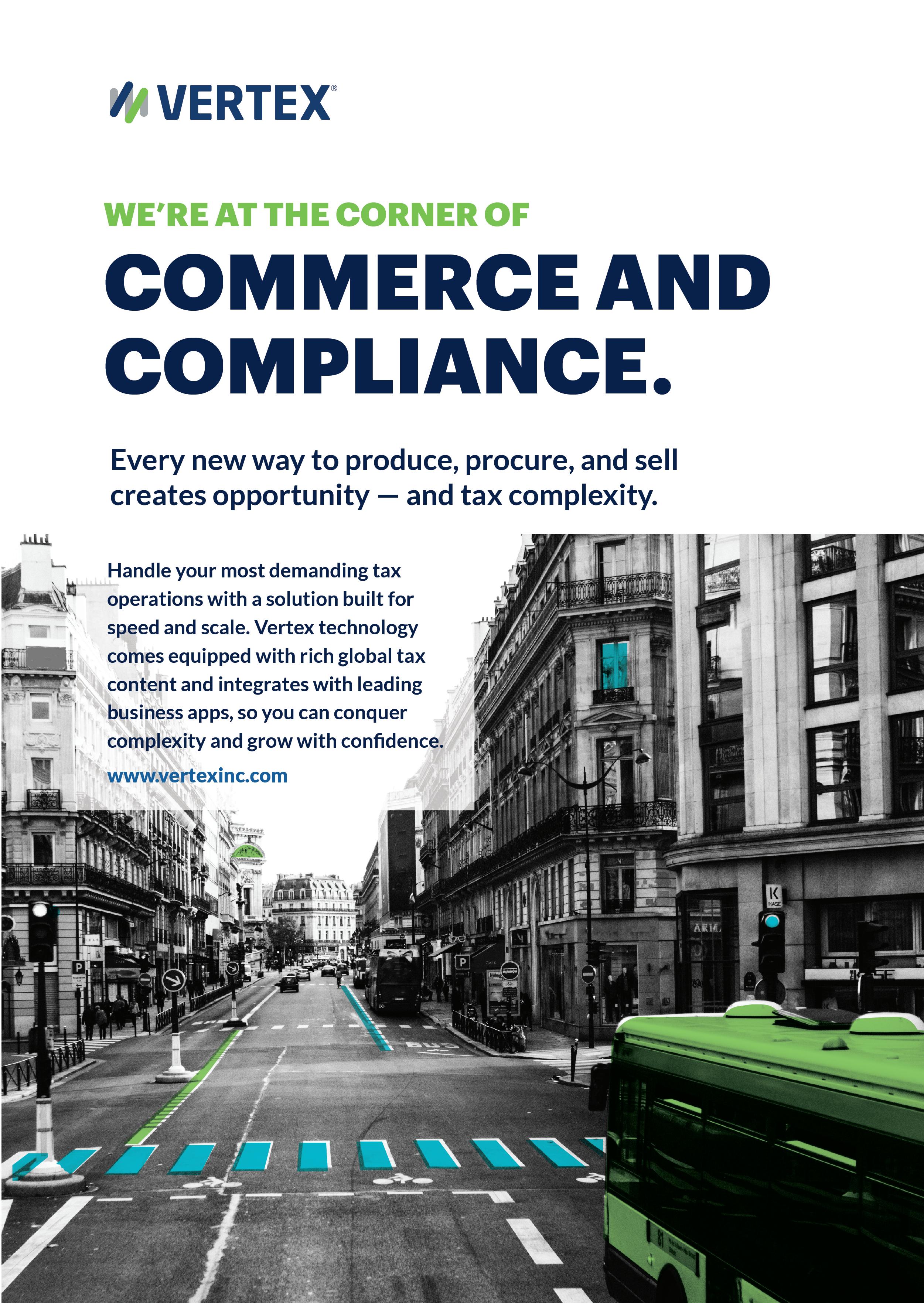










5 Trends and Innovations
6 How AI-Powered Financial Automation Is Transforming European Business
8 How European Tech Hubs Are Shaping the Global Economy
10 Europe’s New Push Towards a Sovereign AI
12 The role of fingerprint biometrics in an age of AI and deepfakes
14 The Big AI Question – Buy or Build?
16 Why Cybersecurity Is Crucial for European Businesses in 2025
18 Key Developments Shaping the Continent
23 How BPO Giant Teleperformance (TP) is Combining AI and Human Empathy
26 A Vision of Innovation and Leadership
28 navigating challenges and leveraging opportunities
30 “Innovation is at the heart of our business”
34 Nearly Two Centuries of Excellence
36 Shaping the Future of Logistics
38 redefining success in modern investment strategy
40 Conflict in Sudan may spill into the supply chain- with disastrous results
42 Young people should be in the room
44 Richard Foster-Fletcher on AI, Ethics and the New Business Imperative
46 Laurence Moroney on Making AI Work for Everyone
48 Technologist Brett StClair on AI, Disruption & The Future of Business Innovation
50 Proven Strategies to Attract Talent, Ignite Innovation, and Drive RealWorld Impact
52 Positive Connection with Your B2B Customers
54 Demand for AI skills keeps exploding in Europe, with a 230% rise in AI projects within a year
56 Milos Maricic on the Future of Responsible Leadership
58 Noreena Hertz on the Economic Shifts Reshaping Our Future
60 Greg Williams for European Business Magazine
62 Ben Hanson on Protecting a Digital Society
64 James Payne on Climate Strategy, Innovation & Leading with Purpose
67 Gurps Khaira on Cyber Security, Risk & Results
70 Andrea Iorio on What Great Leaders Do Differently
72 Dr. Grace Lordon on Rewiring Workplaces with Behavioural Science
74 Daniel Hulme on Innovation, Decentralisation, and the Future of Ethical Technology
78 Chris Barton on Shazam, AI, and How Businesses Can Thrive Through Disruption
80 Anna Mathur on Mental Health, Burnout & Leading with Compassion
82 The key to tackling your organisation’s sustainability targets
84 The four main barriers blocking AI adoption
Publisher Nick Staunton
Editor Nick Staunton
Deputy Editor
Anthony Gill
Associate Publisher Brad Adams
Features Editor Katie Winearls
Head of Production
Paul Rogers
Head of Design
Vladimir Mladenovski
Subscriptions Manager
Rebecca Hill
Head of Business Development
Paul Matthews
Advertising Sales
Brad Adams Tara Duckworth
Advertising Sales
Tara Duckworth, Mike Ray, Andy Ellis, Mark Holburn
Contributing writers
Patricia Cullen, Richard Fitzpatrick, Bala Murali Krishna, Shilpa Meen, Argee Laraya, Aimee Ni Mhaolcraibhe, Gordana Ristic, Jonathan Hooker, Jose Ignacio Latorre
Head of Digital
Stephen Scott
Photographer Ben Fisher
NST Publishing Ltd, 19 Leamington Spa (studio 1) Leamington Spa,Cv324tf, UK
The information contained has been contained from sources the proprietor believes to be wholly correct however no legal liability can be accepted for any errors. No part of this publication can be reproduced without consent of the publisher.

In just a few short years, the world of payments has undergone a remarkable transformation. Once defined by cash transactions and plastic cards, the industry has evolved into a dynamic, techdriven space where speed, security, and simplicity are now expected as standard. As digital commerce accelerates, so too does the innovation shaping how we move money—and how we expect to in the near future. Central to this transformation is the rise of smarter, more secure payment systems. Businesses across every sector are integrating payment gateway solutions that ensure transactions are fast, seamless, and protected by advanced encryption and fraud detection technology. Unlike legacy systems that often required manual oversight and came with inherent delays, these modern solutions operate silently in the background, facilitating billions of digital transactions every day with remarkable efficiency.
It’s no surprise then that contactless payments and mobile wallets have surged in popularity. Consumers have grown accustomed to the ease of tapping a card or smartphone instead of fumbling for cash. Services like Apple Pay, Google Wallet, and Samsung Pay have made it easier than ever to make a purchase with just a wave or a click. This behavioral shift accelerated during the pandemic, when health concerns drove consumers toward low-contact alternatives— and once habits changed, many never looked back. The use of tokenization, which masks sensitive card information, adds an extra layer of protection, further driving adoption.
Another innovation influencing digital payments is the rise of cryptocurrencies. Digital assets like Bitcoin and Ethereum have brought new ideas—and questions—about what the future of money might look like. While crypto payments remain a niche option for most, some brands have
embraced them as a way to experiment with decentralized finance. The volatile nature of cryptocurrency values poses a significant challenge to widespread adoption, but the underlying blockchain technology presents real opportunities for low-cost, cross-border transactions. As regulatory landscapes evolve, it’s likely we’ll see crypto become a more accepted part of the payment ecosystem, particularly in global e-commerce and remittances.
Meanwhile, real-time payment systems are reshaping expectations around speed and availability. Gone are the days of waiting for a transaction to “clear.” Innovations like the US Real-Time Payments (RTP) network and Europe’s SEPA Instant have made it possible to move funds between bank accounts instantly—24 hours a day, 7 days a week. For freelancers, gig workers, and small business owners, this means getting paid immediately after a job is done, improving both convenience and cash flow. As more financial institutions implement real-time capabilities, the concept of delayed payments may soon become obsolete.
Digital payments are now deeply embedded in our daily routines, from tapping a phone on the morning coffee run to splitting dinner bills via an app. But the shift goes far beyond consumer convenience—it’s a fundamental change to how global economies function. Businesses that don’t adapt to this new landscape risk being left behind, while those that embrace digital innovation stand to gain not just efficiency, but customer loyalty and trust.
Looking ahead, the question isn’t whether digital payments will continue to evolve—it’s how fast, and in what direction. Whether through AI-powered fraud detection, blockchain-enabled transparency, or smart devices that pay for us automatically, the future of money is unfolding now. And as technology continues to blur the lines between physical and digital, what once felt like science fiction is becoming the new standard.
In today’s fast-evolving digital economy, businesses across Europe face growing complexity in managing their finances. From navigating diverse regulatory frameworks to handling massive volumes of data and operating in an increasingly competitive landscape, the demands placed on finance teams have never been greater. Expectations around speed, accuracy, and strategic insight continue to rise—and conventional approaches are falling short. This is where artificial intelligence enters the picture. Financial automation powered by AI is not just streamlining back-office functions; it’s helping organizations fundamentally reimagine how they approach financial management. Across the continent, businesses are shifting from reactive, time-consuming processes to proactive, data-driven strategies that offer speed, efficiency, and resilience. The impact is already visible: smarter operations, better compliance, and more agile decision-making are becoming the new norm for organizations that embrace this transformation.
Before the emergence of AI technologies in finance, many European businesses found themselves trapped in slow, fragmented systems. Manual workflows and paper-based processes were not only inefficient—they posed serious risks. Financial data was often scattered across departments and regions, and compliance with ever-changing EU directives varied from country to country. Large multinational corporations with operations across multiple jurisdictions faced particularly steep challenges. Managing different currencies, tax regimes, and regulatory rules added extra layers of complexity to already burdened finance teams.

Finance professionals, although highly trained and essential, were spending an outsized portion of their time on repetitive administrative tasks such as invoice reconciliation, payment matching, and data entry. These lowvalue functions consumed energy that could have been better applied to strategic planning, risk forecasting, and business development. This created a human-centric bottleneck, where skilled talent was being underutilized and overstretched.
AI-powered financial automation addresses these issues head-on. By leveraging technologies such as machine learning, robotic process automation, and natural language processing, businesses are now able to hand off many of these repeatable tasks to systems that not only perform them faster but also more accurately. The technology doesn’t just follow instructions; it learns from patterns, detects anomalies, and improves over time.
For example, invoice processing systems can now scan, verify, and log financial documents with little to no human input. Cash flow forecasting is significantly enhanced through the analysis of historical data, enabling better planning and greater responsiveness to market shifts. Regulatory compliance, one of the most
intricate challenges for European firms, is increasingly being managed through AI tools that track evolving rules and adjust internal processes automatically. Fraud detection has also improved, with AI systems flagging unusual transactions or behavioral patterns that might escape human notice until it’s too late.
This shift is about more than just automation. It’s about a new mindset in financial leadership—one that values foresight over reaction, and insight over inertia. By implementing AI-driven systems, companies are enabling their finance professionals to transition into roles that are more analytical and advisory. Instead of spending time drafting audit trails or hunting down inconsistencies, finance teams can focus on shaping strategy, advising leadership, and improving long-term outcomes.
Some practical use cases already show the value of this shift. HighRadius, for instance, is one platform that uses AI to optimize accounts receivable processes. By consolidating data, automating payment workflows, and improving real-time analytics, companies using the platform are seeing faster collections, improved working capital, and lower Days Sales Outstanding (DSO). In short, they’re

doing more, faster—and with fewer resources.
AI has also revolutionized the once-cumbersome world of bookkeeping. Traditional accounting tasks— classifying transactions, reconciling statements, preparing VAT reports— can now be done automatically and in compliance with local regulations. This reduces human error and frees up finance teams to focus on what truly matters.
The forecasting and budgeting capabilities of AI are among its most powerful assets. European businesses, operating in a diverse and sometimes volatile market landscape, benefit immensely from tools that can analyze past performance, identify emerging trends, and simulate future scenarios. Whether it’s a retail chain trying to manage cash flow through seasonal fluctuations or a manufacturer planning around geopolitical shifts, AI provides insights that help reduce uncertainty.
Fraud prevention and risk management have also seen dramatic gains. For sectors with high transaction volumes or cross-border payments, identifying fraud in real time is vital. AI tools can now detect suspicious behavior patterns as they occur,
flagging potential internal or external threats early. This level of visibility not only helps firms comply with EU financial regulations like PSD2 and anti-money laundering directives, but also builds trust among partners and clients.
Compliance is a particularly burdensome area for European businesses, but AI is helping lighten the load. Automated systems can now generate compliant financial reports within seconds, track audit trails across multiple departments, and stay up-to-date with new legislation. In a regulatory environment that is continuously evolving, this level of agility is invaluable.
Several real-world examples illustrate the effectiveness of AI in streamlining complex financial tasks. A children’s clothing retailer operating both online and through physical stores in multiple EU countries faced significant challenges around VAT processing. By implementing AI tools, the company was able to automatically apply the correct VAT rate at the point of sale based on the customer’s location. Country-specific reports were generated in real-time, compliance errors fell by over 80%, and monthend reporting became much faster and more reliable.
Similarly, a Paris-based fintech company focused on B2B payments deployed AI algorithms to analyze user behavior and detect potential fraud. Suspicious transactions were flagged before they were completed, and the company saw a 47% reduction in fraud-related losses within one year. The increased sense of security also helped the firm attract larger clients, confident in the platform’s ability to protect their interests.
In another case, a Spanish manufacturer used AI to optimize its supply chain finance. The system analyzed supplier behavior to predict payment delays, adjusted payment schedules to take advantage of early-payment discounts, and enabled better liquidity planning throughout the year. The result was improved capital efficiency and tighter alignment between operations and finance.
Despite its promise, the transition to AI is not without challenges. One of the biggest concerns remains the human factor. Many finance professionals worry about job security as automation increases. To address this, companies must invest in reskilling their teams, encouraging staff to evolve into more strategic roles and fostering a culture of human-AI collaboration. Clear communication from leadership about the value of these changes and how they will enhance— not replace—human capabilities is essential.
There are also important considerations around data privacy and regulation. With the EU’s strict rules under the General Data Protection Regulation (GDPR), companies must be diligent in how they use and store data. AI systems must be designed with security in mind, using anonymized data where necessary and ensuring full compliance with both EU and national laws.
Another technical hurdle is the integration of AI into legacy systems. Many European businesses still rely on outdated infrastructure, which makes incorporating advanced technologies complex. This demands investment in scalable, interoperable platforms and strong internal IT support to ensure that automation doesn’t just exist in a vacuum but is fully embedded in the broader financial ecosystem.
Ultimately, though, the benefits far outweigh the challenges. With the EU actively supporting digital transformation through innovation grants and funding programs, the conditions are ripe for modernization. For companies that act now, AI-powered financial automation offers a strategic advantage—not just for the present, but for years to come.
As we move further into a digital-first economy, European businesses that embrace AI in finance are positioning themselves for smarter growth, stronger resilience, and sustained success. This is not just about keeping pace with change. It’s about leading it.
European tech hubs have grown from local initiatives into global powerhouses. Cities like Berlin, London, Stockholm, and Lisbon now compete with Silicon Valley in attracting talent and investment. These hubs combine unique local advantages with an international outlook, creating environments where startups flourish alongside established tech giants.
The impact reaches far beyond European borders. Many innovations developed in these hubs now power systems worldwide, from financial technology to healthcare solutions. This emergence is a shift in the global technology landscape, moving from American dominance toward a more distributed network of innovation centers.
Each European hub maintains distinctive characteristics. Berlin offers affordable living costs combined with creative energy. London provides access to financial markets and venture capital. Stockholm excels in producing unicorn companies despite its smaller population. Lisbon attracts digital nomads with its quality of life and growing tech infrastructure.
The financial technology sector stands as one of Europe’s strongest technology fields. European tech hubs have created payment systems, banking alternatives, and investment platforms used globally. The regulatory framework in Europe has both challenged and supported these developments.
Within this expanding tech-finance ecosystem, Legal Offshore Online Casinos represent a growing segment operating beyond traditional regulatory boundaries. According to gambling expert Matt Bastock, these
platforms often base their technical operations in European hubs while serving global markets. Licensed gaming companies in places like Malta and the Isle of Man create sophisticated gaming technologies that power these platforms, bringing together entertainment, finance, and technical innovation. These operations contribute significantly to local economies while connecting to global financial flows.
This pattern of European technical expertise supporting global digital markets repeats across multiple sectors. Financial technology companies based in London develop systems used worldwide. Estonian digital identity solutions provide models for governments across continents. German industrial technology sets standards for manufacturing.
The success of European tech hubs depends on talent. Universities across the continent have adapted programs to meet industry needs, creating pathways from academic research to commercial application. Coding schools and specialised training programs supplement traditional education, filling skill gaps quickly.
Immigration policies vary between countries, influencing the international makeup of each hub. Some nations actively recruit global tech talent, while others focus on developing local capabilities. The most successful hubs balance both approaches, creating diverse teams that bring together different perspectives and skills.
2019 accelerated remote work trends, allowing European tech companies to hire talent regardless of location. This shift makes European hubs less dependent on physical concentration while expanding their reach. Companies now build distributed teams

across multiple countries while maintaining their European headquarters. Internal migration within Europe creates connections between different hubs. Professionals move between cities, carrying knowledge and practices with them. This circulation strengthens the continental technology ecosystem as a whole.
Government support plays a key role in European tech development. Public funding programs, tax incentives, and regulatory frameworks vary between countries but generally aim to foster innovation while protecting public interests.
The European Union provides coordination across national boundaries, funding research, and standardising regulations. Programs like Horizon Europe direct billions of euros toward scientific and technical advancement. These investments support early-stage research that might not immediately attract private funding. Private capital has grown more available in European tech hubs. Venture

capital firms increasingly focus on European opportunities, while corporate investment provides another funding source. Public-private partnerships allow for risk sharing and long-term investment in fundamental technologies.
Digital infrastructure receives attention from both sectors. High-speed internet, data centers, and cloud computing resources support the entire ecosystem. Countries compete to provide the best digital foundations for growing tech industries.
European tech hubs often develop specialised expertise. Munich focuses on industrial technology and automotive innovation. Paris excels in artificial intelligence research. Copenhagen leads in green technology and sustainability solutions.
These specialisations reflect local industrial strengths, research traditions, and market priorities. They allow smaller hubs to compete globally within specific niches instead of
trying to match the breadth of larger technology centers.
Cross-sector collaboration creates unexpected innovations. Healthcare technology benefits from gaming expertise in user experience design. Financial services incorporate cybersecurity approaches from defense technology. These combinations happen naturally in concentrated innovation environments.
European technology often emphasises values like privacy, sustainability, and social impact. These priorities shape product development and business models, creating alternatives to technologies developed elsewhere. The European approach to artificial intelligence, for example, places greater emphasis on ethical considerations and transparency.
European tech hubs maintain strong international connections. Companies often start with European markets but quickly expand globally. This international orientation helps overcome the limitations of fragmented European markets.
Partnerships between European and non-European companies facilitate knowledge exchange and market access. Japanese corporations invest in German industrial technology. American cloud platforms host Swedish software services. Chinese mobile companies incorporate French design expertise.
Foreign investment flows into European tech hubs, bringing capital and global perspectives. International companies establish research centers and offices across Europe to access local talent and innovation. These connections strengthen the position of European hubs in global networks.
Trade agreements and digital market policies shape these relationships. The European Union works to create favorable conditions for technology exports while protecting strategic interests. Digital regulations pioneered in Europe often influence global standards through market forces.
European technology hubs have developed unique positions in the global digital economy. They combine local strengths with international connections, creating environments where innovation flourishes. The diversity of these hubs, each with different specialisations, cultures, and approaches, contributes to their collective impact.
In the future, European tech centers must address challenges like talent shortages, fragmented regulations, and scaling limitations. Digital sovereignty concerns will shape policy decisions, balancing openness with strategic autonomy.
As technology reshapes industries and societies worldwide, European hubs will continue to influence these transformations. Their contributions extend beyond economic impact to shape how technology develops and serves human needs. The values and priorities expressed through European innovation offer important alternatives in the global technology landscape.
As artificial intelligence continues to redefine the global balance of power in tech, European leaders have intensified efforts to chart their own course—a path that places sovereignty at the center of AI development. At stake is not just economic competitiveness but digital self-determination in a world increasingly shaped by algorithms and machine learning.
For years, the conversation around sovereignty was dominated by debates over defense, energy, and borders. But in 2025, Europe’s sovereignty has taken a decidedly digital turn. With data now dubbed the new oil and AI poised to transform everything from healthcare and education to national security, Brussels and national capitals across the continent have come to a stark realization: Europe must not be merely a consumer of AI technologies shaped elsewhere—it must become a creator, leader, and guardian of its own AI destiny.
Much of the current global AI race is dominated by American and Chinese tech giants. Meta, Google, Microsoft, Amazon, OpenAI, and their Chinese counterparts Baidu, Alibaba, and Tencent are pouring tens of billions of dollars each quarter into research labs, supercomputing clusters, and advanced AI models. In contrast, European innovation—while robust in academic circles and early-stage R&D—has long struggled to scale at the level of its rivals.
This asymmetry hasn’t gone unnoticed in Brussels. In the words of French President Emmanuel Macron, “AI is not simply a technological race—it is a fight for sovereignty.” His counterpart

in Berlin, German Chancellor Friedrich Merz, has echoed this sentiment, emphasizing that Europe’s largest economy must not become digitally dependent on others, especially in strategic sectors.
Their warnings come as AI systems begin to underpin crucial decisions: determining creditworthiness, flagging health diagnoses, predicting criminal behavior, optimizing energy grids, and even powering battlefield technologies. In such a world, sovereignty isn’t just about owning the infrastructure— it’s about retaining control over values, ethics, and the rules that govern how algorithms shape society.
In response, the European Commission has unveiled a sweeping initiative to turbocharge AI development through a mix of public investment,
industrial policy, and international cooperation. The centerpiece? The creation of four so-called “AI gigafactories”—vast supercomputing sites tasked with training Europe’s own foundation models.
Built in strategic locations across the EU, these AI gigafactories will host some of the most powerful computing clusters outside the U.S., powered by high-performance GPUs and cooled by renewable energy sources. Their mission is twofold: to support the training of large-scale European AI models and to provide secure infrastructure for public and private research.
This monumental effort is backed by a public-private consortium estimated at EUR 20 billion, a rare show of unity and ambition across member states. The Commission has also stepped in with supportive frameworks and funding streams. The Digital Europe Programme, for example, has earmarked EUR 1.3 billion specifically

for AI, cloud computing, and digital skills. And the newly expanded STEP platform—Strategic Technologies for Europe Platform—is mobilizing over EUR 15 billion by redirecting cohesion and recovery funds toward digital infrastructure.
But AI doesn't operate in a vacuum— it feeds off the cloud. And here too, Europe is laying foundations to challenge the dominance of U.S. tech firms. At the heart of this effort is Gaia-X, a European initiative aimed at creating a federated, secure, and transparent cloud ecosystem built on European values.
Launched in 2020 but now gaining serious traction, Gaia-X seeks to free European companies and governments from dependence on hyperscalers like Amazon Web Services, Google Cloud, and Microsoft Azure.
The goal is not to block foreign providers, but to ensure interoperability, data sovereignty, and compliance with EU laws—all critical in sectors like healthcare, defense, and finance. Gaia-X is already being integrated into national public cloud strategies in France, Germany, and Italy. It is also attracting interest from sectors like banking and manufacturing, where data localization and trust are paramount. With the increasing convergence of AI and cloud infrastructure, this European cloud backbone will serve as the digital bedrock for AI applications developed on the continent.
The private sector is responding in kind. One of the most closely watched developments is the partnership between French startup Mistral AI and U.S. chipmaker Nvidia. The two companies have joined forces to build a next-generation data center in southern France, featuring 18,000 AI chips capable of training models at a scale Europe has rarely seen.
Mistral AI, founded by former engineers from Google DeepMind and Meta, is seen as Europe’s most promising foundation model developer. Their collaboration with Nvidia is a nod to pragmatism: Europe still depends on U.S. chip technology for the time being, but the aim is to embed European control in the architecture and application of AI models.
At the same time, other European startups are emerging in niches such as AI ethics, synthetic data, edge AI, and sustainable compute—sectors where Europe may yet leapfrog its rivals by focusing on values and specialization rather than brute force scaling.
Still, the gap remains daunting. U.S. hyperscalers are investing USD 10 to 15 billion per quarter on AI infrastructure alone, dwarfing the resources currently available to European players. And while the EU’s regulatory
edge—such as the recently passed AI Act—gives it global influence in setting ethical norms, many critics worry that red tape could stifle innovation if not paired with commensurate support.
Europe’s ambition for AI sovereignty isn’t purely technical—it’s also philosophical. The continent sees itself as a global leader in ethical AI, advocating for transparency, fairness, human oversight, and fundamental rights. The AI Act, the world’s first comprehensive AI law, reflects this vision.
But values need muscle to back them up. Without sovereign infrastructure and homegrown platforms, Europe risks becoming an ethical bystander— issuing guidance without having the technological leverage to shape global norms in practice. The new strategy is meant to change that.
Through these AI gigafactories, cloud initiatives like Gaia-X, funding programmes, and public-private partnerships, the continent is making a late but determined bid to close the innovation gap and reassert digital autonomy.
The road ahead remains steep. Europe must still confront challenges around chip supply chains, talent shortages, and internal coordination. It must resist the temptation to overregulate before it can compete. And it must continue investing not just in infrastructure, but in AI literacy, research, and entrepreneurial ecosystems that can translate innovation into scalable business models.
Yet for the first time in decades, there’s momentum—and a shared sense of purpose. In the long game of AI geopolitics, Europe is finally beginning to play offense.
If this strategy succeeds, it could mark a turning point: not just for AI, but for the future of European sovereignty in a digital world.
By Anette Trulsson Corda, SVP Market Development at IDEX Biometrics
As generative AI and its capabilities continue to disrupt the business landscape, a new wave of alarming fraud is accelerating. Deepfakes – defined as AI-generated audio, video and images –have become a powerful weapon for today’s cybercriminals. These hyper-realistic yet fake impersonations are being leveraged to convincingly impersonate voices, faces and even mannerisms, representing a significant threat to businesses. While many business leaders are embracing AI for its transformative potential, far fewer are prepared for the dark side of this innovation and its rising impact on financial fraud. A recent survey found that just over half of US and UK businesses have already been targeted by scams involving deepfake technology, with 43% falling victim[1].
Real-world examples underscore just how serious this risk has become. In one high-profile case from 2024, the CEO of the world’s largest advertising group was targeted using a fake WhatsApp account, a voice clone and edited YouTube footage[2]. Although the attack was unsuccessful, it highlighted the devastating potential of such scams. Meanwhile, other companies have reported fraudsters using the technology to pose as suppliers or vendors, leveraging AI-generated content to trick employees into transferring funds or sharing sensitive information.
With Deloitte predicting that AI-enabled fraud could cost the US $40 billion annually by 2027[3] – and with cyberattacks already occurring every 39 seconds[4] – organizations urgently need to rethink their security
strategies to keep pace in a world where fraud is more sophisticated than ever before. But how can leaders protect their businesses when they can’t even trust the voice of a colleague or what they see before them?
Deepfakes exploit a fundamental vulnerability in human and system trust: our reliance on what we see and hear. Whether it’s a familiar voice on a call, a video conference, or a seemingly legitimate invoice email, today, AI can convincingly replicate these cues. That’s why modern business security must move beyond surface-level authentication and embrace methods that AI cannot duplicate.
Unlike voice or facial recognition, which can be spoofed with enough data and computing power, fingerprint biometrics are immutable, physical characteristics that remain consistent and uniquely tied to the individual.
AI may be able to replicate a voice or generate a fake image, but fingerprint biometrics based on capacitive sensor technology provide tamper-proof security and liveness detection. This method also requires the physical presence of the person being authenticated, adding a crucial barrier against cyber criminals who rely on remote, digital deception.
Today, the availability of fingerprint biometric ID cards, integrating secure fingerprint sensors with

on-chip encryption and biometric processing, offers a robust and scalable enterprise security solution. Biometric access cards enable smart cardbased authentication without relying on external batteries, power sources, or controllers, and support a range of business applications.
While fingerprint biometric ID cards are more commonly associated with secure physical access, these cards are increasingly being adopted to provide secure access to sensitive systems such as financial platforms,

information or databases, ensuring only the verified individuals can gain access, and providing reliable audit trails.
When it comes to authorizing highvalue transactions, fingerprint verification can also offer a secure alternative to verbal or email approvals. This is especially crucial in protecting remote work infrastructures, frequent in today’s hybrid workforce. Fingerprint authentication verifies that the person accessing sensitive systems not only has the
right credentials, but is present and authorized. Unlike deep fakes, fingerprint biometrics requires an actual touchpoint – breaking the chain of impersonation at its source.
As generative AI continues to evolve, so too will its use in cybercrime. To remain resilient, organizations across all industries must stay ahead of the curve by ensuring robust authentication methods are put in place that are
not only secure but also reliable and user-friendly.
Fingerprint biometrics, particularly when embedded in smart cards, provide this strong protection.
In a world where seeing and hearing are no longer believing, touch may be the most trustworthy sense we have left. As organizations navigate the dual promise and risks associated with AI, adopting fingerprint biometrics is an indispensable step in providing a trusted identity for all and ensuring resilience against cyberattacks.
By Kasia Borowska, MD and Co-Founder of Brainpool AI
In a rush to capitalise on the AI hype, almost half of businesses leverage off-the-shelf solutions that promise quick wins, speedy deployment and lower up-front costs. But what if the businesses leveraging these technologies are trading long-term, sustainable AI for short-term, convenient cookie cutter solutions?
This is why many businesses are struggling to answer the same question when looking to implement AI –should I buy or build? Building AI solutions around your business needs is the right long-term solution for many businesses, but the process can come with its own range of challenges. This is especially the case for businesses drowning in a mess of structured and unstructured data.
So how does this approach compare to off-the-shelf solutions and where should businesses start with building their own AI models?.
Pre-built solutions allow businesses to quickly implement AI without having to develop their own technology, which is why many have been initially attracted to this approach. However, these solutions create challenges for businesses, especially those looking to scale AI within their organisation. This is why businesses are turning to Agnostic AI.
Agnostic AI is an approach which means businesses are not tied to a single vendor or framework – they are free to utilise different models and build a network of models to

solve different business challenges. This method yields lower compute requirements, higher accuracy and provides businesses with a solution that evolves alongside technological advancements.
With Agnostic AI, businesses can tap into the most-effective LLM for each task. This allows businesses to tailor each use case to a specific domain to improve the overall effectiveness of the model. It also allows businesses to cut costs by only using services they need rather than paying for an off-the-shelf solution which includes tools they won’t use.
By taking this approach, businesses can remain agile and keep up with changing market dynamics and regulatory requirements. This is because it provides businesses with the flexibility to switch models as regulations evolve to ensure they maintain their competitive advantage and remain consistently compliant.
Businesses that leverage off-the-shelf solutions will also have an increased risk of data and copyright breaches because they will have limited control over their data security and no freedom to customise their models to ensure compliance. In comparison,

businesses that leverage Agnostic AI will be in control of their compliance and their data, therefore mitigating unnecessary security risks.
Finally, businesses that leverage offthe-shelf solutions will be forced to input all of their company data into a single vendor’s interface. During this process, these businesses are surrendering their IP which exposes them to long term risks and prevents them from being truly innovative. Business must remember it is your data, your context and it should therefore be your IP. To keep hold of all-important
IP, businesses must take an agnostic approach to AI implementation.
For businesses looking to build AI solutions and take an agnostic approach, the biggest challenge they will face is data readiness. With 42% of leaders citing data quality as the biggest challenge they face when implementing AI, it’s no surprise that many businesses are utilising offthe-shelf solutions in an attempt to escape their unstructured data.
For businesses that are looking to build their AI around their unique business needs and use cases, the first hurdle to overcome is ensuring your data is ready. Businesses must remember ML models are only as good as the data they are trained on, so although preparing your data for AI implementation can be time-consuming, it is arguably the most crucial step to developing effective AI models.
To help prime data for effective AI implementation, businesses must leverage data processing techniques to understand the data’s lifecycle, source, significance and intended use. To understand the lifecycle of all data, businesses must enforce a data lineage and data change function which will allow organisations to track data throughout its entire lifecycle. This clear audit trail will allow businesses to monitor for any changes and truly understand the source of all data to help all ML models be consistently efficient.
Businesses should also utilise semantic modelling to improve the quality of their data. Semantic modelling involves representing data in a way that captures its source, allowing businesses to understand its significance and intended use. This will allow businesses to make more accurate interpretations of all data to ensure it is leveraged and processed correctly to create effective ML models
In a race to harness AI’s full potential, businesses must resist the urge to jump in headfirst. Successful AI implementation requires a clear understanding of the technology and a strategy rooted in high-quality data. For those businesses looking to implement Agnostic AI – don’t forget that your models are only as good as the data that fuels them. To unlock AI which transforms your business rather than just supporting it – ensure your data is up to the task and reap the benefits that an agnostic approach has to offer.
In today’s hyperconnected world, digital transformation is no longer a futuristic concept—it’s the present-day reality driving nearly every facet of business. From cloud computing to AI-powered operations, European businesses have embraced technological advancement to innovate, scale, and compete on the global stage. Yet, beneath the promise of progress lies a shadow that grows darker with each new innovation: cyber risk.
As we move further into 2025, cybersecurity has taken center stage—not just as a technical necessity, but as a critical pillar of business resilience, regulatory compliance, and customer trust. For companies operating in Europe’s data-rich, tightly regulated environment, the stakes are not only higher—they’re existential.
The modern cyber threat landscape is not just evolving—it’s exploding. According to recent figures from ENISA, Europe’s cybersecurity agency, cyberattacks in the EU increased by more than 25% over the past year. Gone are the days of rudimentary viruses and opportunistic hackers. Today’s attackers are organized, well-funded, and often state-sponsored. They deploy AI-enhanced malware, coordinate multi-vector ransomware campaigns, and exploit supply chain vulnerabilities with chilling precision.
One of the most concerning trends of 2025 is the surge in ransomware-as-a-service (RaaS)—a business model where cybercriminals rent out attack kits to affiliates. This has drastically lowered the barrier to entry for malicious actors, putting even small and mid-sized European enterprises in the crosshairs.
No industry is immune. Financial institutions, healthcare providers, logistics firms, and even local governments have all suffered paralyzing breaches. And as IoT devices proliferate across offices and factories, the number of potential attack vectors multiplies.

While cybercrime is a global phenomenon, European businesses face a distinct set of challenges that heighten their exposure and risk. Chief among them is the General Data Protection Regulation (GDPR)—the world’s most stringent data protection framework. Enforced since 2018, the GDPR places strict obligations on how companies handle, store, and secure personal data.
For businesses, a breach doesn’t just mean operational disruption or financial loss—it could also mean regulatory investigations, massive fines, and irreparable damage to reputation. In fact, under the GDPR, fines can reach up to €20 million or 4% of annual global turnover, whichever is higher.
And it’s not just GDPR. New regulations such as the EU Cyber Resilience Act and the NIS2 Directive, which entered into force in 2024, are expanding the compliance burden. These policies aim to ensure that digital products, services, and critical infrastructure are resilient against
cyberattacks—but they also demand that companies demonstrate accountability, documentation, and continuous risk assessment.
The bottom line? Cybersecurity in Europe is no longer just an IT issue— it’s a boardroom-level imperative that touches legal, financial, and strategic domains.
To survive and thrive in this high-risk digital environment, European businesses must shift from reactive to proactive cybersecurity strategies. Firewalls and antivirus software are no longer sufficient. What’s needed is a multi-layered, adaptive security posture that evolves in real time.
At the heart of this transformation is a simple but powerful principle: cybersecurity must be embedded into the fabric of every business process, not bolted on as an afterthought.
One of the most effective ways to achieve this is through strategic partnerships with cybersecurity experts.

Companies like Equilibrium Security, among others, offer specialized services that combine advanced threat detection with tailored risk assessments. By leveraging AI-powered analytics, endpoint protection, and network segmentation, these firms help businesses stay one step ahead of increasingly sophisticated cyber threats.
Cybersecurity leaders now advocate for the “zero trust” model—a philosophy that assumes no device, user, or application is ever inherently trustworthy. Every access request must be verified, authenticated, and encrypted. This framework is especially vital for hybrid workforces, where employees access sensitive systems from remote or mobile environments.
The direct financial cost of a breach is only part of the picture. For European companies, the indirect costs— such as reputational harm, loss of customer trust, disrupted operations, and diminished market value—can be even more severe.
In 2024, a large German manufacturing firm lost over €120 million in revenue following a ransomware attack that brought its operations to a halt. The breach wasn’t just a technological failure—it was a strategic crisis. Customers fled. Investors panicked. And regulators launched a multi-month investigation into the company’s data handling practices.
This example is not unique. Across the continent, a growing number of firms have learned the hard way that a single breach can unravel years of brand equity and customer loyalty. In an age where trust is currency, a lapse in cybersecurity can bankrupt reputations overnight.
Interestingly, as cybersecurity becomes more prominent, forward-thinking businesses are beginning to treat it as a source of differentiation rather than just defense. Companies that demonstrate high levels of digital resilience and data stewardship are earning greater trust from customers, partners, and investors.
In sectors such as finance, healthcare, and e-commerce, clients increasingly demand guarantees that their data will be protected. Meeting and exceeding these expectations can enhance brand value, deepen customer loyalty, and even open up new business opportunities—especially in cross-border contexts where data handling standards vary widely.
Moreover, robust cybersecurity enables innovation at speed. When businesses have confidence in their digital foundations, they can scale faster, explore new technologies, and enter new markets without the constant fear of cyber disruption.
Looking ahead, the cybersecurity challenges facing European businesses are only set to intensify. Quantum
computing, while promising revolutionary advances, could soon render today’s encryption methods obsolete. AI-generated deepfakes are already being used to impersonate executives in fraud schemes. And as cyberattacks become increasingly automated, defense systems must match that level of intelligence and speed.
That’s why cybersecurity in 2025 is not a destination—it’s a journey. Businesses must commit to continuous learning, constant vigilance, and longterm investment. Cybersecurity training should be regular, not occasional. Incident response plans must be tested and updated frequently. And systems should be reviewed regularly by external auditors to uncover hidden vulnerabilities.
The good news is that Europe is not alone in this fight. EU institutions, national governments, and the private sector are increasingly collaborating on information sharing, cyber awareness, and joint defense exercises. Initiatives such as the European Cybersecurity Industrial, Technology and Research Competence Centre (ECCC) in Bucharest are helping align public and private efforts across borders.
In an era where data is more valuable than oil, protecting it is not just a responsibility—it’s a business imperative. The risks of ignoring cybersecurity are too high, and the benefits of proactive protection are too significant to overlook.
For European businesses, 2025 marks a decisive moment. It’s a time to move beyond compliance checklists and toward a culture of cybersecurity—one that spans every team, every process, and every decision.
Whether you're a multinational conglomerate or an ambitious startup, now is the time to fortify your digital defenses. Cybersecurity is no longer optional. It’s the key to your company’s resilience, reputation, and longterm growth in the digital age.

From Brussels to Berlin, from London to Lisbon, the European business landscape has undergone a transformative series of developments over the past month. Strategic acquisitions, policy shifts, surging capital markets, and investments in tech and sustainability have dominated the conversation, setting the stage for the continent’s next phase of economic evolution.
This report dives into the most critical events and emerging trends that define the current moment in European business.
In a move that signals a bold shift in how the EU funds its operations, the European Commission has proposed a sweeping corporate levy aimed at large multinational firms. The initiative seeks to impose a tiered tax on companies with turnovers exceeding €50 million, tying their contributions to the scale of their operations.
This prospective revenue stream is designed to support rising EU-wide priorities, including defense autonomy, sustainability projects, and the
servicing of common debt. While pitched as a resource for Europe’s future, the proposal has already sparked vigorous debate among member states. Some argue it would burden corporations and discourage investment, while others view it as a necessary adaptation to shared economic and geopolitical responsibilities.
One of the most notable transactions in the financial services sector

came as Jupiter Asset Management announced its acquisition of CCLA, an ethical investment manager with deep roots in the charitable and faith-based sectors. Valued at approximately £100 million, the deal adds more than £15 billion in assets under management to Jupiter’s portfolio and strengthens its position in the fast-growing ESG and social-impact space.
This acquisition signals a clear intent to align with the evolving expectations of institutional and retail investors alike. The trend toward responsible

capital deployment is not only enduring but accelerating—and asset managers are positioning themselves accordingly.
Stock indices across Europe have seen substantial gains in recent weeks, with the FTSE 100 reaching an all-time high. Driven by strong performances in the commodities and mining sectors, as well as sustained interest in bluechip exporters, the rally has boosted investor sentiment in the face of geopolitical uncertainty and mixed global economic indicators.
Complementing this equity surge, the high-yield bond market in Europe saw record-breaking issuance volumes. In just one month, €23 billion in risky corporate debt was sold, reflecting both investor appetite for returns and corporate eagerness to tap liquidity before potential rate volatility. Though the risk is elevated, the demand signals strong underlying confidence in Europe’s mid-tier corporate credit market.
Merger and acquisition activity in Europe has spiked significantly, particularly in Germany and the UK. Germany saw a wave of high-value
transactions in chemicals, logistics, and utilities, reflecting a renewed appetite for industrial consolidation and foreign investment.
In the UK, private equity firms continued their aggressive push into undervalued sectors. A string of high-profile takeovers, including a landmark acquisition in financial services, has placed Britain at the center of European dealmaking. Market analysts attribute this surge to a combination of discounted valuations, pent-up capital, and regulatory clarity.
At the same time, Europe’s technology and fintech ecosystems witnessed consolidation. Digital automotive platforms, SaaS providers, and renewable energy tech companies were all targets of recent investment rounds or buyouts, underscoring the region’s drive to maintain relevance in global tech innovation.
In a bid to compete with the US and China, Europe has accelerated investments in critical technologies, particularly artificial intelligence, semiconductors, and supercomputing.
A flagship project is now underway in the Netherlands, where a large-scale AI development center— dubbed the “AI Factory”—is being built. The facility will serve as a hub
for research, training of large models, and secure data storage, playing a key role in boosting Europe’s digital sovereignty.
Additionally, new photonics and semiconductor manufacturing facilities are being announced, particularly in the Benelux and Nordic regions. These investments reflect a growing determination to onshore essential supply chains and reduce dependency on foreign tech giants.
Europe’s banking sector has also experienced a resurgence. European-headquartered investment banks now command over half of the region’s deal fees, reversing a years-long trend of US dominance. This shift comes amid greater domestic deal activity and a recalibration of global trade flows.
Retail and consumer banking remains active as well. Strategic acquisitions in the UK banking space signal longterm commitment to physical retail branches, even as digital challengers continue to gain market share.
Insurers and asset managers are showing strength too. Several major firms reported significant increases in profits, allowing them to authorize buybacks and raise dividends. The uptick reflects not only favorable investment conditions but also disciplined cost management and diversification into growth sectors like health, tech, and renewables.
Despite optimistic signs in capital markets, trade tensions remain a concern. Ongoing disputes with the United States—particularly over automotive tariffs—continue to cast a shadow over cross-Atlantic commerce. While negotiations are ongoing, the business community is already adapting by diversifying supply chains and exploring intra-European and southsouth trading routes.
At the same time, Europe’s position in global trade diplomacy remains robust. The continent’s leaders continue to advocate for open markets, fair competition, and sustainable practices—principles that remain central to the EU’s trade agenda.
The month saw further integration of environmental, social, and governance considerations into mainstream business practices. A number of major infrastructure and renewable energy projects were announced, including multi-billion-euro investments in offshore wind and solar.
Institutional capital is flowing more freely into sustainable sectors, encouraged by regulatory clarity, consumer demand, and long-term risk mitigation goals. Several asset managers and private equity firms now consider ESG factors as standard in their investment due diligence.
Meanwhile, European regulators are progressing with stricter anti-money laundering policies and more transparent disclosures in securities markets—developments that support sustainable finance by enhancing accountability.
Multiple high-profile cyber incidents in the UK retail sector have underscored the persistent vulnerabilities of corporate IT infrastructure. These breaches have led to operational disruptions and significant financial losses, prompting renewed calls for investment in cybersecurity and digital risk management.
In response, regulators are pushing forward with updated compliance requirements and proposing new frameworks for data security and risk reporting. As digitization accelerates, businesses face growing pressure to ensure not just technological sophistication, but also resilience and compliance.

This past month featured several major events with implications for European business. A NATO summit in The Hague emphasized increased defense spending, while a series of EU policy meetings addressed climate legislation, AI development, and cross-border cooperation.
One particularly notable initiative is the European Youth Event, which brought thousands of young voices into policy dialogue. Their perspectives on sustainability, digital ethics, and social equity are increasingly

influential—and may shape future regulatory frameworks.
These gatherings point to a Europe that is not only engaging economically but also redefining its place geopolitically, technologically, and ethically.
A number of cross-cutting trends are beginning to crystallize:
• Fiscal Innovation: The EU’s proposed corporate tax reveals a new appetite for centralized economic strategy.
• Tech Sovereignty: Investments in AI and semiconductors show a deepening commitment to strategic autonomy.
• Sustainable Capital: ESG is no longer a niche—it’s now a pillar of corporate finance and investment behavior.
• Cybersecurity and Compliance: Regulatory modernization is driving corporate investment in resilience.
• Deal Activity Resurgence: Europe’s return to M&A prominence underscores its global competitiveness.
As we move into the second half of the year, Europe’s business outlook is marked by confidence—but not complacency. Policymakers are pursuing ambitious initiatives to secure longterm prosperity. Investors are hunting for growth and resilience. And corporations are navigating a complex web of economic, technological, and ethical imperatives.
From the boardroom to the shop floor, from public sector reforms to private sector innovations, Europe is rewriting its business narrative—one defined not just by legacy, but by leadership in a shifting world.

For many, artificial intelligence remains a puzzle — an abstraction often debated but rarely understood. The acclaimed documentary filmmaker Adam Curtis once remarked, “I have a problem with talking about AI because absolutely no one knows what it’s going to be.” Yet at Teleperformance (now known as TP), there is no such ambiguity. The company has not only embraced AI but is forging a strategy that places it at the heart of the business process outsourcing (BPO) world.
TP, a long-time global leader in customer experience management, is not defined by large-scale physical assets or heavy machinery. Instead, its strength lies in people: in emotional intelligence, in agile service delivery, and in its seamless integration of digital transformation with human capabilities. This core ethos defines TP’s market position and future ambitions.
Founded nearly five decades ago by visionary French American entrepreneur Daniel Julien (pictured), TP has grown into a multinational behemoth
with over €10 billion in annual revenue, serving more than 170 markets and partnering with over 1,500 clients. A remarkable 56% of those clients feature in Forbes’ top 100 — a testament to the trust TP has earned across verticals. Beyond financials, TP ranks among the top ten of the 25 World’s Best Workplaces.These accolades are not merely ceremonial. They reflect the company’s adaptability and commitment to staying ahead of industry trends—none more crucial today than artificial intelligence.
At the 2025 Capital Markets Day in New York City’s Rockefeller Plaza, investors, analysts, and business leaders gathered to hear how TP is navigating this transformative moment. The company’s leadership laid out a compelling, data-rich roadmap for the future — a strategy that embraces AI, industry verticalization, and opportunity capture.
Deputy CEO Thomas Mackenbrock (pictured) highlighted the urgency of execution. “Our business is 90% execution,” he asserted, underlining TP’s asset-light model as a strategic advantage. Unlike companies burdened with legacy infrastructure, TP is nimble, allowing it to pivot quickly and deploy cutting-edge solutions. At the core of TP’s AI ambition is a strategy known as “FAB” — short for “Foundational AI Backbone.” This three-layered approach is as practical as it is visionary, aiming to embed AI into the core fabric of how TP operates and delivers value.
The Blueprint Layer is the starting point: pre-configured AI systems designed to tackle real-world business challenges head-on. These blueprints act like ready-to-deploy templates, enabling TP to implement solutions rapidly and at scale.
At the centre of TP.ai FAB lies the Orchestration Layer, serving as the connective tissue of the platform. Here, individual AI modules, tools,
and human expertise are seamlessly integrated to create cohesive, end-toend solutions tailored to each client’s unique needs.
Supporting all of this is the Foundation Layer — a secure, cloud-native infrastructure powered by industry titans from the GAFAM. This layer ensures resilience, scalability, and compliance with global data standards.
To illustrate its approach, TP likens FAB to building a Lego car — each AI module a building block. Once assembled, the result is a nimble, efficient, and responsive digital engine. And this isn’t just theory: TP launched over 200 AI projects in 2024 alone, with a bold commitment to invest €100 million in AI innovation for 2025.
In a hyper-connected world, data is the fuel driving modern customer experiences. Recognizing this, TP has built robust capabilities across data annotation, analytics, and engineering. The company has positioned itself as a data powerhouse, capable of turning raw information into actionable insight.
AI models require clean, structured, and context-rich data to perform effectively. TP meets this need through its global network of thousands of expert data annotators, collectively generating hundreds of millions of high-accuracy annotations each month.
What sets TP apart is its commitment to the human-in-the-loop model. Human experts guide, refine, and correct AI outputs, ensuring the resulting intelligence is not just accurate but also relevant and responsible — especially in high-stakes industries like healthcare and finance.
Moreover, TP’s operations span over 100 countries, giving it a deep understanding of regulatory frameworks from Europe’s GDPR to California’s CPRA. Clients benefit from built-in compliance and ethical rigor, baked into every data process.

Rather than offering generic AI solutions, TP takes a verticalized approach — tailoring its technology to industry-specific workflows. For example, in banking, it deploys fraud detection algorithms tuned to spot subtle anomalies. In retail, it leverages sentiment analysis to fine-tune customer engagement. In manufacturing, it uses predictive maintenance to reduce downtime, and in healthcare, it enhances diagnostics with AI-assisted insights.
What makes TP’s strategy effective is its full-spectrum involvement across the customer journey. It starts with consultation and process mapping, followed by detailed data preparation and AI model training. Once the systems are deployed, TP continues to analyze performance and fine-tune outcomes.
This comprehensive lifecycle approach ensures that AI solutions are not only implemented but continuously improved — creating a dynamic feedback loop between technology and human expertise.
In an industry where buzzwords often mask reality, TP introduces a refreshingly grounded concept: the Trust Stack. While most companies talk about their tech stack, TP emphasizes trust as the ultimate differentiator in AI deployment.
This trust is built through algorithmic transparency, where clients can see and understand how decisions are made. It includes accountability structures to catch and correct errors. And perhaps most importantly, it insists on explainability — making AI outputs

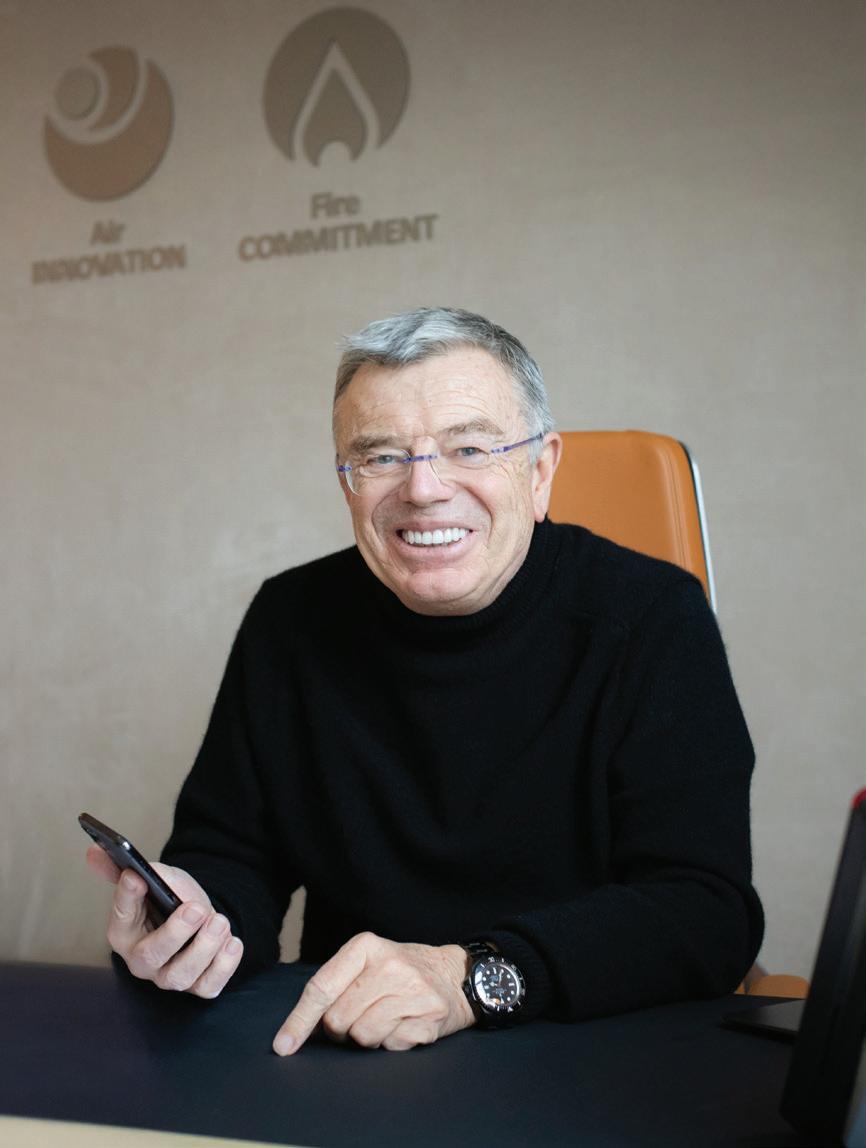
and compliance with national privacy laws. By embedding local linguists and legal experts into the development team, TP delivered a fit-for-purpose solution in under six months.
This balancing act between global scalability and local authenticity enables TP to serve governments, corporations, and communities with equal effectiveness.
Workforce: A Moral and Strategic Imperative
Responsibility in AI isn’t optional — it’s central. TP embeds ethical principles into every phase of AI development. This includes ensuring decisions are transparent, tracking the origin and flow of data, detecting and mitigating algorithmic bias, and guaranteeing human oversight in critical situations. Compliance with global standards, from the EU’s AI Act to OECD principles, reinforces TP’s commitment to trustworthy AI. But beyond compliance, the company is setting a cultural standard for how AI should be built and used. TP is therefore heavily investing in its people. The company has already trained 135,500 employees in AI literacy this year — ensuring its workforce is not left behind but propelled forward by the AI wave. This is transformation with a conscience.
comprehensible even to non-technical stakeholders.
With regulatory frameworks like the EU AI Act taking shape, TP is ahead of the curve, designing solutions with compliance as a feature, not an afterthought. The Trust Stack is further strengthened by TP’s legacy in managing sensitive, high-stakes interactions, particularly in health and financial sectors.
The Global Equation: Scaling Responsibly
Serving 170 markets requires a nuanced, flexible AI strategy. TP’s concept of “Glocal AI” — global intelligence tailored for local realities — is essential. Take the example of a healthcare deployment in Southeast Asia. The solution needed multilingual translation, cultural sensitivity,
We are no longer speculating about AI — we are experiencing its mainstreaming. For TP, the inflection point is not just an opportunity; it’s a mandate for action.To date, TP has rolled out more than 1,500 AI-powered solutions for over 700 clients. This effort is supported by a global bench of 3,000+ technology experts. These are not just numbers — they reflect a systemic shift toward intelligent operations.
Conversational AI is one standout example. TP’s NLP engines, developed with Microsoft and Google, are powering millions of customer conversations every month. And its internal AI co-pilot tools are redefining workflows, making employees more effective without erasing their role.
As the New York event drew to a close, Deputy CEO Thomas Mackenbrock reiterated TP’s future-ready commitment: “We’re not just preparing for the future; we’re building it.” Daniel Julien echoed this, stating that the AI-powered world of tomorrow will not be homogenous. Rather, it will be “a beautifully diverse world where humans interact with AI engagement. ”From AI translators to customer empathy engines, TP’s innovations signal a shift in how enterprise AI is designed and deployed. It’s not just about machines that compute — it’s about systems that care.
As more companies reckon with the limits of purely digital experiences, TP’s approach offers a roadmap: build trust, start with people, and let AI follow.
By embracing the convergence of human intelligence and artificial intelligence, TP is not just surfing the technological waves; it’s building the surfboard, charting the waters, and teaching the world how to ride.
In this exclusive interview Thomas Mackenbrock (main photo), a dynamic leader and visionary strategist currently positioned as the aspiring CEO of Teleperformance shares with European Business Magazine how the BPO giant will tackle the challenges ahead. With a deep background in digital transformation, customer experience innovation, and operational excellence, Thomas has been instrumental in steering global organizations toward sustainable growth. Formerly CEO of Majorel and a seasoned executive in the BPO and tech-enabled services sector, he brings a forward-thinking perspective on the evolving landscape of customer engagement, AI integration, and responsible leadership.
Thomas Mackenbrock, Aspiring CEO of TP : “At TP, our vision is not a choice between humans and machines, but enhancing human performance through AI”.
Teleperformance has long been known for placing human empathy at the heart of its services. In an era of rapid automation, how do you strike the right balance between AI innovation and human touch across global operations?
At TP, the future of customer experience is defined by the seamless integration of advanced AI and genuine human empathy. While technology evolves rapidly, human decisions remain influenced by emotion – making the human touch essential.
Our focus is to enhance the capabilities of our TP experts with AI that improves speed, accuracy, and insight – while preserving the empathy that drives meaningful connections.
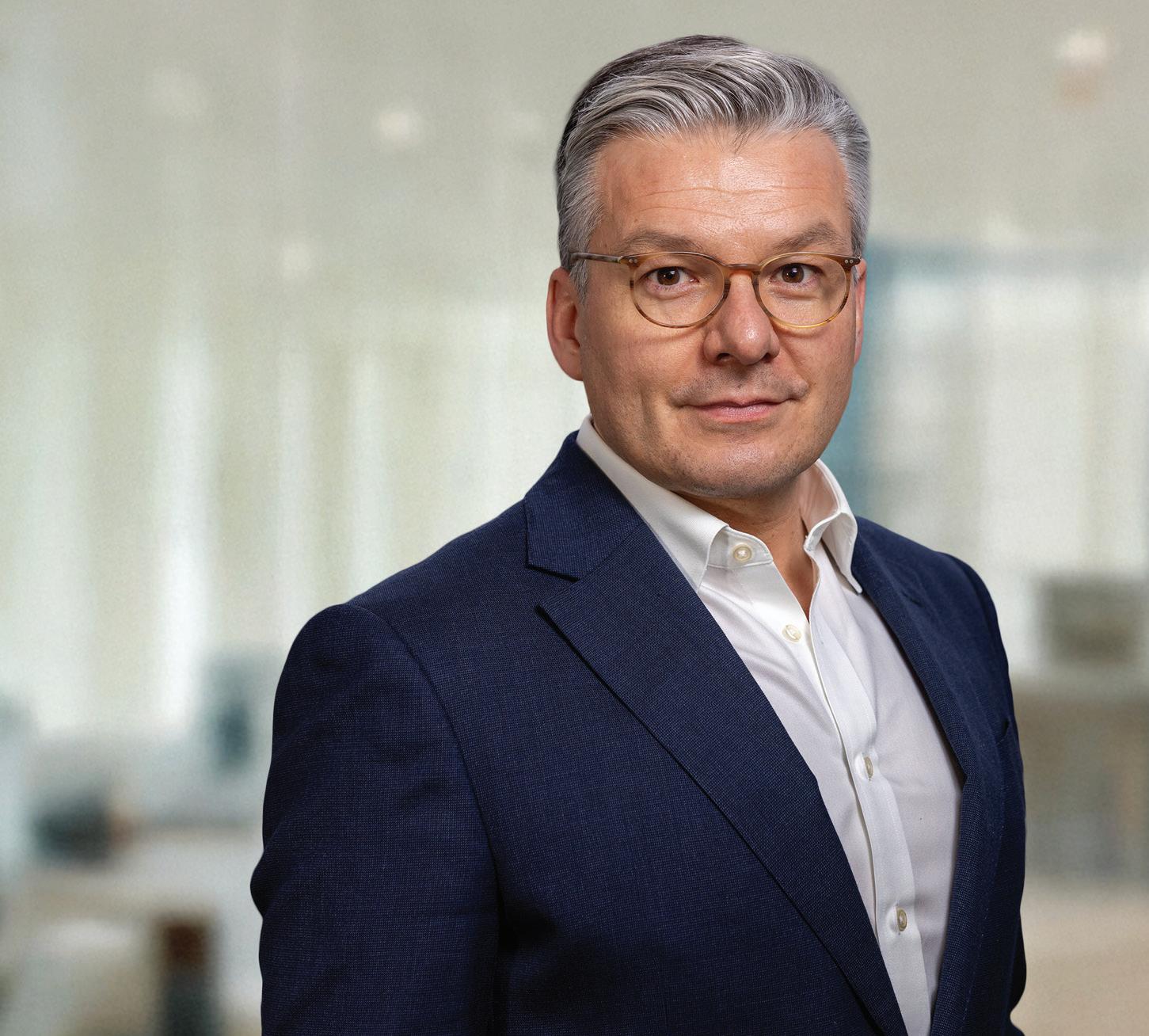
Our approach is built on intelligent orchestration: knowing when and how to apply AI, and when to engage human expertise for complex, emotionally nuanced interactions. This task is managed dynamically to ensure valuable outcomes for our clients.
Your Foundational AI Backbone (FAB) strategy was a highlight at Capital Markets Day. How does FAB differentiate TP from other players in the BPO and customer experience sector—and how scalable is this model across verticals?
TP.ai FAB is the platform enabling TP to deliver the speed of AI with the empathy of human expertise.Unlike AI as a standalone feature, TP.ai FAB is a modular orchestration platform designed to seamlessly integrate AI agents, TP experts, and partner technologies into an intelligent ecosystem. It is designed with three layers:
A Blueprint Layer with vertical-specific, outcome-driven use cases.
An AI Orchestration Layer, and a Foundation Layer that ensures security, scalability, and model-agnostic flexibility.
This modular architecture allows to operationalize AI at enterprise scale – intelligently, efficiently, and with measurable business impact across sectors and geographies.
With a €100 million investment earmarked for AI in 2025, what are your strategic priorities in terms of AI development—speed, personalization, cost-efficiency, or something else entirely?
Our investments in AI and transformation for 2025 are focused on: Speed and scalability. We aim to deploy AI solutions rapidly across clients without reinventing the wheel every time. That’s why our modular approach is so important.
Vertical specificity. We’re building AI blueprints tailored to specific industries. We want to expand verticalized solutions by building industry-specific end-to-end AI-enabled offerings.
Data services and human-in-theloop. AI needs high-quality data to function. We’re investing in end-toend data services and maintaining human oversight for trust, bias mitigation, and compliance. We will also
accelerate growth in services along the AI value chain with a focus on digital technology services.
Our goal is not just efficiency, it’s to create real business outcomes for clients while staying compliant and secure.Europe is increasingly assertive in regulating AI with frameworks like the EU AI Act. How is TP positioning itself to meet regulatory demands while continuing to innovate at pace?
Regulation plays a critical role – particularly in Europe, where standards around data privacy, security, and AI governance are among the most advanced globally. Regulation is also not necessarily a constraint, but part of the foundation for building trust.
From day one, we embed compliance into the design of our platforms and processes. Our deep expertise allows us to navigate complex areas such as data protection, ethical AI, and bias mitigation with confidence and agility. Looking ahead, we believe the companies that successfully drive innovation with strong regulatory alignment will create competitive advantages. TP is well positioned to do exactly that – at scale and across geographies.
As a company that thrives on agility and execution, what structural or cultural shifts have you made internally to ensure that AI adoption is not just top-down but embedded at every operational layer?
Embedding AI at TP is not simply about adopting new tools, it represents a fundamental cultural transformation. We are intentional about building AI fluency across all levels of the organization, starting with structured training for our supervisors and frontline leaders to ensure that knowledge and capability scale from the ground up.
To accelerate this shift, we’ve established dedicated leadership, most notably with our Chief AI Officer, Anish Mukker, who is driving AI integration across business units and geographies.

Our strategy is rooted in combining deep domain expertise with AI in a way that’s practical, scalable, and trusted by our teams. This isn’t about top-down deployment, it’s about reimagining how every layer of TP operates, collaborates, and creates value in the AI era.
TP serves clients across 170 countries. How do you ensure AI solutions are both globally consistent and locally relevant, particularly in industries where trust, privacy, and compliance are non-negotiable?
That’s a critical question, and one we address by design. Our AI solutions are designed to be globally scalable, yet locally adaptable. The modular architecture of TP.ai FAB allows us to reuse core components while tailoring solutions to local languages, regulations, and cultural nuances. For example, in Content Moderation or Trust & Safety, the context varies dramatically between countries. We combine local talent with global technology to ensure compliance, relevance, and cultural sensitivity. Trust, privacy, and compliance are non-negotiable for us, especially because we handle sensitive data for industries like banking, healthcare, and government services.
Looking beyond 2025, what’s your vision for the future of work at Teleperformance? Do you foresee AI fundamentally reshaping workforce dynamics—or do you believe the human element will always be at the core of your service model?
The future of TP is already being shaped by the transformative power of AI. It allows us to operate at greater speed, scale, and precision, enabling our teams to manage growing complexity and deliver faster, smarter solutions. AI is not just enhancing productivity; it’s reshaping how we work, how we serve, and how we create value.
At the same time, the human element remains fundamental. Empathy, judgment, and emotional intelligence are irreplaceable, especially in high-stakes, nuanced situations. That’s where our people create lasting impact.
Our vision is not a choice between humans and machines, but a commitment to equipping our people with the right tools to elevate their performance and decision-making. By combing cutting-edge technology with deep human insight, we’re not only transforming our own operations, we’re delivering greater agility, resilience, and measurable outcomes for our clients across industries.
The transition to ISO 20022 is transforming the future of financial messaging and cross-border payments, by delivering a standardised approach to processing payments.
Nick Botha, Global Payments Lead at AutoRek
Currently, there are a lot of disparate networks, in different geographies, operating within their regime. The introduction of the new messaging standard aims to create standardisation across the market, as we move towards a more centralised payments economy around the globe. However, the transition to ISO 20022 doesn’t come without its challenges.
How will the transition to ISO 20022 impact firms?
The November 2025 deadline to enable ISO 20022 for cross-border payments is fast approaching. Operationally, firms are set up to process cross-border payments, and significant technology investment has been made to support the transition. There has been extensive workshopping across different geographies globally, but the industry is going through a transitional period. While some firms have adopted the messaging system, others are still using older versions as not all firms have the resources or funds to implement the new system immediately.
As a result, there is a transitional phase where firms are trying to transact with other firms using different messaging formats, which may create frictions and challenges in terms of interoperability. This could lead to firms encountering complications as they try to align their systems with
one another due to differing levels of adoption.
Internally, firms must consider whether their internal systems can handle the complexity of processing the vast amounts of data required by ISO 20022. This internal interoperability challenge could be just as significant as ensuring smooth communication with external counterparts. Firms will need to allocate substantial resources and funding to ensure that both their internal tech stack and external transactions operate efficiently.
The transition to ISO 20022 will require engineering from front end of the payment process and ensuring that it functions smoothly throughout the entire payment cycle. This will be crucial as firms move forward in adapting to the new messaging standard.
Why should firms leverage the opportunities ISO 20022 brings?
The transition to ISO 20022 presents both challenges and opportunities for financial institutions.
One of the key advantages of ISO 20022 is the potential to reduce costs associated with payments. Firms will be able to achieve economies of scale in their payment processes, allowing them to handle larger volumes more efficiently. Additionally, ISO 20022 facilitates improved management

of payments, data processes and data analysis. These benefits include enhanced interoperability, data management, cost reduction and economies of scale. For firms that have yet to embrace ISO 20022, it’s crucial to explore how the messaging standards align with their strategic direction of cross-border payments for your business.
How can firms navigate and overcome the challenges of ISO 20022?
However, along with these benefits come challenges, particularly around resource deployment. Migrating to ISO 20022 is an expensive undertaking, and firms must find ways to control their operational costs during this process.
Some firms may encounter diseconomies of scale, where the cost of handling additional transactional

volumes increase in parallel with revenues, preventing margins per transaction from improving over time. This creates a situation where it becomes more expensive to prove higher transactional volumes than the revenue generated.
The best way to address this issue is by creating operational efficiencies, through automation, which reduces the operational cost per transaction and enable firms to benefit from economies of scale. By doing so, companies can start generating more revenue from processing more transactional volumes. Automating core processes is crucial for achieving these efficiencies, as it helps reduce costs and drive profitability.
Automation allows financial institutions to achieve economies of scale, particularly when managing higher transactional volumes. While smaller
data sets – such as a CVS file with a few lines of data – might be manageable, handling millions of transactional records with complex data requires automation to maintain efficiency. Automating reconciliations, for instance, is a key driver of operational efficiency, as it reduces the overall operational cost of transactions.
When it comes to ISO 20022, it’s critical that external software vendors can ingest and process the new messaging format. By ensuring that their systems are equipped to process the ISO 20022 messaging standard efficiently, firms can streamline their operations and ensure they are prepared for the future of financial messaging.
The introduction of ISO 20022, as a new messaging standard, will help standardise the processing of
cross-border payments. The transition to ISO 20022 may present challenges, particularly around interoperability, especially between firms and their internal systems. Despite these challenges, ISO 20022 offers significant benefits, such as reducing costs associated with payments and improving data insights, analysis and management.
Nevertheless, the migration to ISO 20022 is an expensive exercise, but firms can control operational expenses by creating efficiencies through automation. Automation plays a crucial role in enabling firms to streamline their processes and handle larger transaction volumes effectively. Financial solutions are capable of ingesting ISO 20222 messaging and handling all data types, formats and volumes, making them an important tool for firms navigating this transition.
Banknote printing is a highly sensitive sector. How does Oberthur Fiduciaire meet the technical and technological requirements to prevent counterfeiting?
The design and production of banknotes are, by definition, extremely sensitive issues, directly impacting the reputation of governments. The central banks we collaborate with trust us to produce banknotes of the highest quality within agreed deadlines—banknotes used daily by tens of millions of citizens. This trust is the result of our continuously evolving expertise in meeting the legitimate demands of our customers. We must offer the very best in terms of design and security, which is why innovation is at the heart of our activities and strategy.
The fight against counterfeiting is a long-distance race in which innovation plays a crucial role. We must always stay one step ahead of counterfeiters, and the renewal of banknotes provides an opportunity to integrate new security features that will present unsolvable challenges to those attempting to counterfeit them.
Typically, countries renew their banknote series every eight to twelve years. The main reasons include an increase in counterfeiting (or the risk of it) due to the obsolescence of older technologies or major national events such as a new regime or monarch. However, the time between two series can sometimes be much longer, as in the case of the European Central Bank (ECB). Two years ago, the ECB announced its plan to redesign banknotes, though no date has yet been set. In addition to changing the design to reflect a stronger sense of European

identity, this presents a technical and technological challenge for all euro banknote manufacturers, including Oberthur Fiduciaire.
Producing banknotes is a highly regulated legal process that begins with responding to a call for tenders from a central bank. Oberthur Fiduciaire has built outstanding expertise over the years, from manufacturing banknote paper to incorporating numerous security features developed by our research and development department. Our supply chain is another of
our strengths, as we control the entire manufacturing process, from security features to printed notes, all within Europe—making our banknotes particularly difficult to counterfeit.
Fiduciaire?
This is confidential information, but it’s clear that innovation has always been a major expense for our company. The R&D budget has remained

constant and has even tended to increase in recent years, as improving banknote security is essential. The COVID-19 crisis demonstrated the importance of allocating resources to innovations that may take years to come to fruition. One example is the Bioguard solution that Oberthur Fiduciaire developed in response to the H1N1 crisis in the early 2000s. Back then, we successfully developed a solution capable of protecting banknotes very effectively against viruses, bacteria, and microscopic
fungi. This health-security guarantee has been applied to billions of banknotes worldwide and proved highly effective against the COVID19 virus, as confirmed by independent laboratories. This effectiveness is not a stroke of luck, but rather the result of our teams’ continuous efforts to improve the solution. More than ten billion banknotes worldwide are covered with the Bioguard solution, which has been shown to be completely harmless to humans and the environment.
Innovation at Oberthur Fiduciaire involves a large number of employees, but we also look for the best innovations from elsewhere. For example, in early 2023, we acquired a majority stake in the Swedish company Rolling Optics, which specializes in anti-counterfeiting systems. We now own over 70% of the company. The ingenuity of their solutions and the immense difficulty counterfeiters face in replicating them make these products masterpieces in the field of micro-optics. Seeking to be a leader in this area

and continually offering our customers more advanced security features, Oberthur Fiduciaire made an offer to buy the company, which was accepted, and now owns in excess of 70% of the shares. This development may not be spectacular to the wider public, but expanding our capabilities with this new expertise allows us to face the future with confidence.
The banknote was invented in China approximately ten centuries ago. Although its appearance may seem largely unchanged, today’s banknotes are high-tech products, nearly impossible to reproduce in full. There are three levels of security.
The first and most important level is for the general public, enabling quick authentication of a banknote. The first indicator is the texture—euro
banknotes, for example, should feel firm and make a crackling sound when handled. Relief printing processes are also useful for determining whether a banknote is genuine. Other features, such as color-changing ink and holographic patches, help retailers and users verify the banknote. Euro banknotes, for instance, display visible high-security features, including a recognizable holographic stripe.
These security systems are already very difficult to counterfeit, and it’s not uncommon for counterfeiters to be caught quickly due to their inability to replicate these level 1 features.
Level 2 security features require a simple device equipped with UV light. This control system is particularly effective at catching counterfeit notes that passed the initial naked-eye inspection. At this stage, we rely on retailers to detect fake notes. Finally, laboratory or forensic tests (level 3 security) are
possible and reveal features known only to the manufacturer and monetary authorities, such as hidden patterns visible only under specific UV stroboscopic lamps.
There are dozens of features that are extremely difficult to counterfeit and impossible to copy faithfully. Banknotes are technological jewels whose authenticity must be easily verifiable by users. This is a matter of trust, a key word in our industry, where traceability is an essential guarantee of reliability.
Ensuring perfect traceability of banknotes throughout their production is also crucial. Several solutions are implemented on each banknote leaving our European sites (with our main facility in France and another in Bulgaria). At Oberthur Fiduciaire, nothing is left to chance in terms of the supply chain, ensuring that banknotes hold a special place in citizens’ daily lives.

The fiduciary industry is slowly moving toward polymer banknotes. Is this trend driven by the need to make banknotes ever more secure?
In recent years, some players in the banknote industry have advocated for polymer banknotes. In our opinion, this is a mistake, and in some respects, a historical misstep. Polymer entered our industry decades after it was used in sectors like packaging. Now, as these sectors seek to move away from plastic, the banknote industry is doubling down on it. Polymer is essentially plastic derived from crude oil. At a time when climate change and sustainable development are major concerns, producing banknotes from a polluting material contradicts our philosophy and efforts to make our production processes more environmentally friendly and sustainable.
Traditionally, the banknote industry has produced banknotes from natural,
renewable materials—mainly cotton waste from the textile industry. These fibers are perfectly suited for manufacturing banknotes and meet legitimate environmental standards. Our base material is fully recyclable and environmentally responsible.
Moreover, paper-cotton remains the most effective solution for preventing counterfeiting. Claims that polymer banknotes are more secure and harder to counterfeit are not supported by evidence. The reason is simple: unlike paper-cotton banknotes, which incorporate security features during the paper production process, plastic banknotes have no inherent level 1 or 2 security features. With polymer notes, all security features are added after the substrate is made. It is not difficult to source raw polymer substrate and print “security” layers with readily available materials. Rumor has it that pre-printed substrates for major currencies can be found on the dark web.
Despite claims that polymer represents modernity, paper banknotes remain the most secure, environmentally friendly, and sustainable solution.
What are the latest technological innovations offered by Oberthur Fiduciaire to its clients that we can discuss?
Some very promising developments are underway, and I can’t wait to introduce them to our clients. We already offer a range of high-performance solutions, including the new Anima™ security thread. This worldclass, lenticular-based micro-optic thread offers instant recognition through various dynamic features with custom-made designs. It is both a highly secure thread and an easy way for users to authenticate banknotes. This complex anti-counterfeiting technology was developed in collaboration with Rolling Optics. Other first-rate solutions are also in the pipeline, complementing innovations like the 3D Relief film, which
is already attracting interest from our (potential) clients. Our Pulsar motion security thread is another significant achievement, featuring innovative micro-optics that create unique, forgery-proof visual effects. Lastly, our HD Vision watermark solution offers unparalleled definition and detail, guaranteeing cutting-edge security. These are just a few examples of Oberthur Fiduciaire’s forefront solutions for banknote security.
Is there a system of patents to ensure the uniqueness of these techniques that result from long research work?
Yes, our long research process often leads to patent filings, which are essential to protect our work from competitors. In the banknote industry, copying innovations from those who invest heavily would lead to industrial exploitation. Competition between banknote manufacturers keeps us ahead of counterfeiters. Oberthur Fiduciaire is a very active player, holding around 1,000 patents. However, a patent is not a free pass to become complacent. It allows us to capitalize on our efforts for a time while continuing to develop ever more effective solutions.
This approach also applies to our competitors, who sometimes become partners. Occasionally, we collaborate with one or more competitors, sharing certain solutions. A recent example is Bioguard, which has drawn interest from central banks we do not currently work with. Given Bioguard’s proven effectiveness in uncertain sanitary conditions, Oberthur Fiduciaire decided to make this technology available to all central banks and banknote producers who would like to benefit from it. Applied in the form of a varnish or integrated directly into the banknote manufacturing process, Bioguard is now available to all. Oberthur Fiduciaire knows how to adapt to events, and that’s why we’ve managed to climb into the world’s top 3 producers in recent, challenging, years.
Founded in 1837 as a luxury equestrian goods manufacturer, Hermès has since diversified its portfolio to include handbags , apparel, and fragrances. The brand is renowned for the exceptional quality of its products, designed to last and often produced in limited quantities, enhancing their exclusivity
As the fourth-largest French luxury group by revenue , trailing LVMH , Chanel, and Kering, Hermès generated €13.43 billion in sales and a profit of €4.31 billion in 2023. Valued at approximately €210 billion on the Paris Stock Exchange, the group is 66.6% family-owned, with the Hermès family also holding 75.9% of voting rights. The Arnault family owns 1.87% of shares, and no institutional investor holds more than 1.5%. This governance structure makes the leading family virtually unassailable, especially since Hermès is not a standard joint-stock company but a limited partnership with shares, granting the CEO veto power over any decision that could alter its statutes.
Despite this, investors rarely push for change, as Hermès’ leadership has consistently created value for shareholders. Its stock price has risen over 700% in ten years and by 180% since pre-COVID levels.
Hermès sets itself apart with its unique positioning in the ultra-luxury segment, surpassing traditional luxury offerings from houses like LVMH , Chanel, or Gucci Hermès products more expensive, rarer, and sometimes exclusive to specific boutiques—justify their prices through the unique story attached to each item, shared with

every customer. Each of the brand’s 294 stores carefully curates its collection to suit the local clientele, allowing a Chinese customer to purchase a unique item in Shanghai and discover another, unavailable at home, during a visit to Paris.
This philosophy explains why Hermès refuses to acquire competitors, unlike LVMH or Kering, preferring to preserve its exclusivity and prestige. It also justifies the company’s refusal to split its shares to make them more accessible to smaller investors. At nearly €2,000 per share , Hermès’ stock is as much a luxury product as its iconic Birkin bags
This strategy creates an unparalleled aura for Hermès, enabling it to raise prices without affecting sales—a pricing power unmatched in the sector. Remarkably, higher prices often lead to increased sales.
Hermès’ growth, sustained despite price increases, is the strongest in the sector, with a 47.4% revenue increase between 2021 and 2023
By comparison, LVMH grew by 34.1%, Chanel by 25.9%, and Kering by 10.9% over the same period. In the first half of 2024, Hermès achieved 15% growth, far outperforming LVMH (-1%) and Kering (-11%). This growth was partly fueled by the doubling of Chinese millionaires between 2010 and 2022.
Strong growth is not enough on its own—a solid balance sheet is essential for navigating economic uncertainties. On this front, Hermès outshines its competitors. Not only is its balance sheet the strongest in the sector, but it is also the most robust in the CAC 40 and possibly across the Paris Stock Exchange. Hermès’ debtto-equity ratio is just 13%, compared to 64% for LVMH and 113% for Kering Even more impressively, Hermès holds twice as much cash as debt, virtually eliminating bankruptcy risk—unlike Kering
However, Hermès faces a notable vulnerability: its heavy reliance on the Chinese market. While 31% of LVMH’s and 35% of Kering’s revenues come from the Asia-Pacific region,

this figure rises to 43% for Hermès, with much of it stemming from China This high exposure contributed to the sector’s slowdown in 2023 and the first half of 2024 Asian revenues for LVMH declined by 13%, and those of Kering fell by 20% in H1 2024. This slowdown is attributed to China’s economic contraction since 2023, rising youth unemployment, and the onset of demographic decline
Nevertheless, Hermès’ revenue grew by 11% in the third quarter, including a 4.6% increase in the Asia-Pacific region. This performance is attributed to Hermès’ clientele, which is the wealthiest . As such, they are less sensitive to economic cycles compared to the upper-middle-class focus of its competitors. This advantage proves crucial during economic slowdowns,

but it could limit growth potential when the economy accelerates, as is currently the case with the extensive stimulus measures announced by the Chinese government and the People’s Bank of China (PBOC)
These measures include a 0.10% reduction in the interest rates at which commercial banks borrow from the central bank and a 0.50% cut to the reserve requirement ratio (RRR) for banks, freeing up over $100 billion for new loans. Additionally, the PBOC has indicated it may reduce the RRR further later this year. Simultaneously, the Chinese government has unveiled further stimulus initiatives, including the recapitalization of major stateowned banks with $142 billion , bolstering their capacity to support the domestic economy.
Hermès (RMS) is undeniably a stock of exceptional quality. Its revenue growth, impressive margins, and solid balance sheet make it highly coveted by investors. The low liquidity of the
stock, due to its high price and the limited 31.85% of shares available on the market, further enhances its status as an elite investment. These factors contribute to a high valuation: Hermès’ price-to-earnings ratio (P/E) stands at 49, compared to 23 for LVMH and 19 for Kering . Meanwhile, its dividend yield is 0.79%, lower than 1.99% for LVMH and 3.27% for Kering
Hermès’ valuation significantly exceeds that of its competitors, justified by the brand’s excellence. While this valuation premium may have seemed difficult to sustain a few weeks ago due to Hermès’ high exposure to a slowing Chinese market, the recent economic stimulus measures and the resilience of its business model could serve as fundamental catalysts for the stock’s performance.
Technically, RMS has been trading within a bullish channel since March 2022. Recently, the stock broke its horizontal support at €2,000, which could lead to a decline toward the lower boundary of the green box at €1,500. Such a drop would represent a major buying opportunity , with a target retracement at the -23.6% Fibonacci level of €2,785 by the end of 2025 (red path).
Source : XTB Research
Conversely, if RMS manages to quickly reclaim the €2,000 support level , potentially boosted by new announcements of Chinese economic stimulus, the stock could rebound and reach €2,340 (green path).
It has been estimated that nearly 60% of small and mid-sized businesses report losing up to 15% more revenue due to supply chain delays. Logistics is the backbone of business success. It is estimated that in 2022, global logistics costs will reach USD 11 trillion.
Entrepreneurs are amalgamating various technologies in the logistics sector to make them efficient for the current environment. Cloud logistics is becoming a go-to choice for market players to excel in the business. In this blog, we will delve deep into the various aspects associated with the cloud logistics market and its usage across various verticals.
Management of logistics is a herculean task for the market players. However, cloud logistics is making the act a piece of cake for the market players. Opting for cloud logistics offers numerous benefits to entrepreneurs. Some of the prominent benefits are as follows:
With the help of cloud computing logistics, market players can enhance scalability. This further helps in scaling operations and resources up or down based on demand. With the use of cloud logistics companies can streamline their processes and reduce their hardware and infrastructure costs. For instance, a recent survey found that businesses that migrated to the cloud with AWS reported almost 51% lower cost of logistics operations.
The inclusion of cloud logistics allows logistics professionals to avail real-time

location of every shipment. Cloud logistics platforms render real-time transparency into the entire supply chain. Market players can easily be vigilant to check inventory levels, and analyze data from different touchpoints in real time.
The prominent benefit of cloud computing in logistics is that it offers an overall view of the supply chain through detailed analytics and information. Some of the below-written data is testimony that cloud computing logistics is an impeccable tool for streamlining supply chains.
- Almost 27.4% of the supply chain executives have deployed cloud-enabled capabilities across the entire supply chain.
- 41.2% of all supply chain executives said that the desire to increase supply chain efficiency was among the top 3 reasons for migrating supply chains to the cloud.
- Cloud logistics is helpful in a 26.3% increase in demand forecast accuracy, a 5.1% rise in revenue growth, a 16.3% reduction in supply chain costs
Analysts suggest that market leaders will continue to invest more in cloud technologies in logistics in the coming 2 years. Let us take a glance at

various verticals that are extensively using cloud logistics.
The cloud services in logistics are revolutionizing the retail sector by acknowledging diverse requirements. It has been estimated that by 2027, more than 71% of retail enterprises are projected to utilize industry cloud platforms to fuel their initiatives. Some of the benefits of cloud computing in the retail industry are:
- Inventory optimization
- Supply chain visibility management
- Disaster recovery
- Better customer experience
- Improved data security
Cloud-based logistics in electronics offers multiple benefits such as quick and accurate quoting, easy access to multiple manufacturers, simplified procurement, supply chain resilience, etc. Some of the other domains are healthcare, automotive, and food and beverages.
The market garnered USD 29 billion in the year 2023 and is projected to reach USD 112 billion by 2036. The factors acting as catalysts for the growth of the market are as follows:
- Transitioning pattern in logistics and transportation management systems
- Product innovations led by a highly competitive landscape
- The rising integration of AI and machine learning
- Surge in demand for transparency from consumers.
- Rising demand for real-time visibility
- Exponential growth of the e-commerce
However, issues such as service outages, service offering changes, and vendor lock-in are hindering the market’s growth. Also, unexpected expenses are associated with cloud logistics services.
The cloud logistics market in the United States is anticipated to be the most attractive in the coming period. The United States is a pioneer in technological innovation and companies are willing to adopt cloud-based solutions for logistics.
Some prominent players in the market are Bwise, Oracle Corporation, IBM Corporation, SAP SE, Thomson Reuters Corporation, and Trimble Transportation.
It is quite discernible that the market is offering lucrative growth opportunities. However, the market players who are willing to dive into the cloud logistics market are required to understand the intricacies of the market. Availing an all-embracing market research report is key to making a substantial impact in the market. It contains parameters such as regional analysis, growth drivers, market constraints, key market players, etc. Understanding these factors helps in making judicious business decisions. Market research reports for cloud logistics can also help the market player make an impeccable strategy.
Source: https://www.researchnester.com/reports/ cloud-logistics-market/6320
Natalie Cramp, Partner at commercial data solutions provider JMAN Group, explains how data is transforming decision-making and playing a critical role in private equity investments.
Recent economic conditions have caused a sea change in private equity (PE). With increased interest rates driving M&A volumes down, the days of multiple arbitrage over, and competition for desirable potential investment opportunities intensified, it has become riskier for PE sponsors to depend solely on traditional methods to optimise their respective portfolios. Further, the speed of change that the latest AI developments are causing in markets is creating a far greater likelihood that a good investment could turn bad during a holding period.
Investment Committees are acutely aware of this and are demanding an even greater level of granularity before backing investment theses that might previously have been considered safe bets. As a result, it’s become increasingly important that managers can support their investment strategy with detailed insights and analytics. Here, the remit is to improve the robustness of their due diligence and enhance the equity narrative by prioritising

and quantifying value creation and return opportunities.
So, you may ask – what does this mean for business leaders? Now, more than ever, for any company seeking to maximise its appeal amongst investment players it is imperative to adopt a data-centric approach.
Previously, most businesses, especially startups, could have relied on just the data basics. This is because historically investors have wanted visibility into just the core financial trends such as profits and turnover.
Not anymore. Now investors have much higher data expectations for transactions and are much more interested in understanding the ‘how and why’ certain financial and operational trends are occurring.
This shifting buyer behaviour is creating a growing expectation for businesses and the management teams that serve them to be able to provide broader and deeper datasets. The goal here is to be able to provide the data and analytics needed to support their ‘equity story’ to give investors comfort on past performance and future

returns. In this way, it’s not enough to just say they have grown profitably by X% year on year - it needs to be evidenced by granular data and solid analytics. With higher expectations because of the common availability of tools and processes, the risk is if companies don’t do this they will not achieve the best valuation they could.
Of course, this may mean extra investment and resources in the data infrastructure and expertise needed to account for this new age of datafication, especially for those businesses who may have, until now, adopted a rudimentary approach to their data and the analytics of that data. However, the good news is that it can pay dividends in the long run through the company’s ability to inform better day-to-day decision-making and identify investment opportunities that traditional approaches might overlook. CEO’s who are meeting
themselves coming back will find that the right data goes a long way to helping you with where to spend your time, and where to place your bets. Indeed, according to the McKinsey Global Institute, data-driven companies are 23 times more likely to top their competitors in customer acquisition, and about 19 times more likely to stay profitable.
Using data coupled with AI to make incremental improvements to traditional value creation levers, enables rapid revenue increases and enhances EBITDA. Understanding the core value creation plan and augmenting the key initiatives with AI can add tremendous value at pace. Simple things like using data and AI to better understand and target customers, be effective in pricing methods, accelerate product development, and drive operational efficiencies are use cases that can be executed without causing too much disruption. For businesses starting
on their data and AI journey, this route can be the most effective in generating a rapid return on investment and building cultural momentum to enable a more data-driven organisation.
There is no doubt that a data-driven culture and the ability to make faster, more informed decisions have become a key requisite for investment players.
As we move towards a future increasingly shaped by data, and the speed of change brought by the latest AI developments, companies must adopt a holistic approach to their data that offers new perspectives for investors and enhances their ability to anticipate market trends. As part of this, continuous learning should remain a priority to keep teams at the forefront of advancements, how to translate them into business value and navigate risk.
Simon Thompson, VP Sales Northern Europe at JAGGAER
The current conflict in Sudan was triggered on 15 th April 2023 when Sudanese Armed Forces (SAF) and the paramilitary Rapid Support Forces (RSF) violently clashed. Since then 10.2 million people have been displaced, the Famine Review Committee has officially confirmed famine in the Darfur region and around half the population (25.6 million) are facing acute food insecurity 1. In addition to the staggering toll on human lives the region is in a strategic location and a further escalation in violence could well have impacts that reach far beyond, most specifically on the global supply chain.
Sudan’s coastline borders with the Red Sea for around 800km, threatening an already thoroughly volatile situation in this key route that accounts for 15% of global sea trade. Since October 2023, Houthi missiles and drones have been targeting cargo ships transiting through the Red Sea and more specifically through the strait of Bab al-Mandab - a 20-mile-wide channel that splits Eritrea and Djibouti on the African side and Yemen on the Arabian Peninsula, severely disrupting trade and driving many commercial ship operators to opt for alternative routes. These routes, however, are usually much longer and diverting ships around Africa’s Cape of Good Hope can add days onto an already lengthy journey.
The effects of longer shipping times are numerous: angry buyers, customer
1 UNHCR, Sudan Crisis Explained, https:// www.unrefugees.org/news/sudan-crisis-explained/
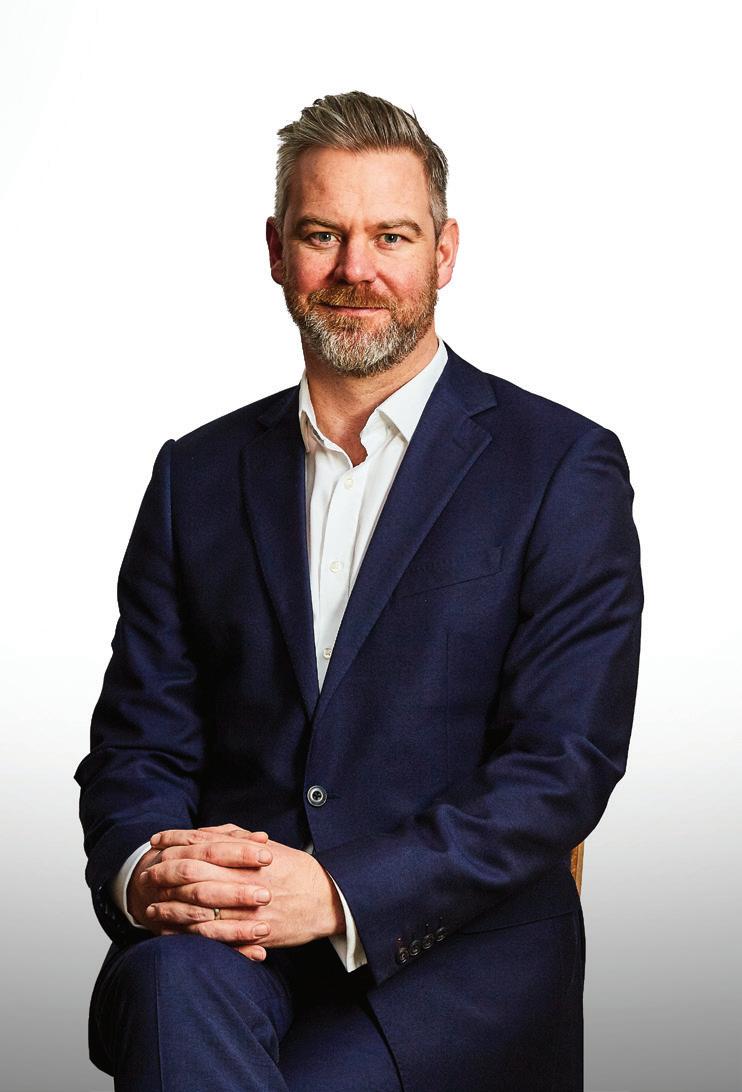
churn, more expensive journeys and an increase in Co2 emissions. Maersk reports it is experiencing an average 40% increase in fuel costs due to longer routes. 2 Reuters confirms the trend revealing that freight rates more than doubled from around $1,200 per trip in 2023 to a January peak of $3,400. Although prices dropped a little in early spring 2024, since May they’ve rebounded to hit a staggering $4,500.3
Rerouting around the Cape of Good Hope is estimated to have extended voyages by approximately 3,500 nautical miles (equivalent to 6,482 km) and increased shipping times by a minimum of 14 days. Trade between Europe and Asia, which ships primarily through the Suez Canal, has been particularly affected; however, the long diversion is still a better option than air freight which would increase costs, create more Co2 and risk overloading the supply chain further. In this bleak picture, there is however the indication that some companies have paid attention to the hard lessons of the past four years and have put in place systems and solutions to
2 Maersk, Essential Updates on the Red Sea Situation, 12th June 2024 https://www. maersk.com/news/articles/2024/06/12/ navigating-challenges-in-red-sea-and-beyond
3 Reuters, Red Sea gives shipping an Uberstyle price surge , 24th June 2024, https:// www.reuters.com/breakingviews/redsea-gives-shipping-an-uber-style-pricesurge-2024-06-24/

help de-risk the supply chain. Specifically, the COVID-19 pandemic, the Suez Canal blockage in 2021, a rise in protectionism, the Ukraine conflict and other localised strikes and infrastructure outages had already highlighted potential threats in this area.

Businesses that took note and prepared to rapidly pivot to alternative routes are seeing lower-scale issues. With no indication that the Middle Eastern conflict will recede and Houthi attacks will diminish, forecasts now are looking with concern to Sudan
as another conflict that may feed the fire of an already troubled area. Businesses that have not already done so need to rapidly assess their supply chain and their risk modelling to ensure that they are identifying lowcost and efficient alternative transport options in good time. Procurement teams specifically will need to rethink how their existing technology supports them in building resilience, mitigating risks, optimizing costs and efficiencies to help their companies react flexibly to changes in global trade.
The geopolitical landscape is fragile and, in a global economy, its impacts are far and wide. To help plan, manage and minimize the impact of unexpected events, businesses at all stages of the production process need to leverage technology to protect their trade flows.
Through digitalization it is possible, for example, to establish real-time collaboration with direct material suppliers, enabling greater transparency so that potential bottlenecks are communicated early on. Similarly, automation helps process huge volumes of data from suppliers and the market, helping analyse and even predict changes when it is still possible to intervene effectively. In addition to this, to help contain risk, businesses also need to ensure that they are managing a diverse portfolio of suppliers, a task that can become complex and time consuming without the support of AI technology.
In procurement, specifically, the application of AI in predictive analytics could involve the deployment of machine learning and algorithms to make the optimum buying decisions based on pricing, market trends, the risk of disruptions to supply chains and other factors. Until recently, this technology was still limited to the performance of tasks clearly outlined and directed by human beings. Now, however, generative artificial intelligence (such as the popular ChatGPT) has expanded its abilities and can be used to create intelligent and dynamic suggestions.
It is now possible to rapidly conduct dynamic analysis of supplier proposals, identifying key parameters
including cost-effectiveness, quality, delivery performance, alignment with organizational goals such as sustainability or social value, together with critical geo-political risk factors in just a few minutes. This could have taken a human team hours if not days, not to mention the risk of introducing human error in such extensive data analysis.
The speedy processing of huge numbers of proposals based on a wide and ever-changing set of criteria, enables the software to generate supplier rankings and make dynamic recommendations in real-time helping businesses pivot without taking on unnecessary risk. Technology can also support by analysing market supply and demand, historical pricing trends, cost structures, risk alerts, news items etc., to help optimize pricing strategies. These in turn will maximize cost savings while maintaining high quality and security standards in combination with flexibility and agility in face of changing conditions.
As one of the major arteries for world trade faces yet another destabilising threat, it’s high time to move away from obsolete, closed-loop systems and paper records that rely on human intervention to provide insights. Intelligent, predictive, data-led decision-making is possible and can be largely automated, saving businesses precious time in an emergency and unburdening teams from repetitive and unrewarding manual tasks.
The Sudan war is sadly just another in a lengthening series of disruptive global conflicts that put the international supply chain at risk. Among other things, it highlights the need for companies to embrace automation and equip themselves with tools that promote agility and transparency. With solutions that support teams in their prediction and analysis of risk, as well as propose intelligent, dynamic solutions to issues when they do occur, businesses will remain well-placed to navigate the choppy waters that lie ahead in international trade.
For more information visit www.jaggaer.com

Written by Professor Juliane Reinecke
There is great irony around climate negotiations at COP29 held in Baku, Azerbaijan. On the one hand, there are frequent calls to hear the voices of the young and ensure those who will be affected will be part of the discussions. On the other hand, school students under 18 are not allowed in the ‘Blue Zone’ without their parents, even in an accompanied group. The Blue Zone is where the talking is done by policymakers and politicians. And, as part of the Oxford University, Saïd Business School, delegation I was in Baku for the talks – and for the finals of the 2024 Oxford-Burjeel Climate Change Challenge.
The Climate Change Challenge was set to be a beacon of hope, highlighting the ingenuity and passion of young people in coming up with solutions for climate change – a ray of optimism
among the contentious debates. But we were told the final for the five teams of amazing teenagers and five teacher finalists from around the world, could not, after all, take place in the Blues Zone. They are too young.
Our event had support from COP and the government of Azerbaijan. But we were moved to the Green Zone’s Energy Room to celebrate our winners and finalists. At least the name foreshadowed the spirit of the day: we had a truly energising day.
Anyone could go in there – and our room was packed throughout the day, as the student and teacher finalists made their presentations. A panel of judges, which I joined, announced our eventual winners - three school students from the UAE and a teacher from India. They were as impressive and passionate as they were
innovative. The change in arrangements had no impact on the celebrations or the Challenge. They were not the only hopeful young people at COP, my colleagues at Oxford Net Zero and Oxford’s Smith School brought very impressive Young Climate Leaders to Baku.
But moving us out of the Blue Zone, was very much the Blue Zone’s loss. The Climate Change Challenge final came at the beginning of the second week and the COP talks had got off to a lacklustre start – in light of a difficult geo-political situation and the failure of several key world leaders to attend.
Then, at the top of the agenda came finance: how much is needed and who is going to pay? In COP-speak: The “new collective quantified goal” (NCQG).
No one, particularly not finance ministers, likes to talk about money. And you could really sense the tension escalate – along with the likely sum that is forecast to be needed for poorer countries’ climate finance needs and the interrelated challenge not to lose the important focus on reducing emissions, including the hard-won compromise agreement in Dubai last to “transition away from fossil fuels”.
The situation was further inflamed by the opening remarks of Azerbaijan’s president, the host of COP29, who referred to oil and gas as a “gift from God.” The comment left a bitter taste for many. But can we entirely fault them? Azerbaijan, a young and ambitious nation straddling East and West along the historic Silk Road, has spent over 30 years carving out
its independence from the Soviet Union. As the birthplace of the oil industry, oil has not only been a cornerstone of its national identity but also a vital lifeline, enabling it to assert its position amidst its imposing neighbours Russia and Iran. But can it once again serve as a bridge at the crossroads of East and West, richer and poorer nations? Failure to reach an agreement at COP29 would not only be a diplomatic embarrassment for the host country but would also hasten the mounting long-term costs for global efforts to tackle climate change.
The stakes are high since the threefold costs amount to a potentially escalating chain reaction. Finance is needed for mitigation (to cut emissions and limit global warming in the first place). If this is not forthcoming, the cost of adaptation will increase (adapting to warmer temperatures that ensue because there has not been enough mitigation). And, finally, if there is not enough spending on mitigation and adaptation, the cost of disaster recovery - damage and loss - will increase, which needs no explanation.
Back in Copenhagen in 2009, nations agreed to mobilise $100billion of climate finance a year. But the longer we delay an agreement on finance for mitigation and adaptation, the higher the cost, as we are discovering. And today, conservative estimates put the annual finance needed for climate finance at a cool $1 trillion – and that is the conservative estimate. It was intended that a new figure would emerge from COP29.
There was no movement on finances until after the official end of the Conference. Even until the last day, there was an ‘X’ in the place on the official draft document, where the big number will go.
The subject of financial justice and equity continue to be very contentious, even with the ‘deal’ which was finally reached over the weekend. Many questions remain unanswered
and we have not heard the last of finance.
Realistically, we did not get to the granular level of financial arrangements in Baku. That is likely to be again on the agenda in Belem, Brazil next year, where COP30 will be held. But, the financial chain reaction means, the longer we wait to finance mitigation and adaptation, the higher the eventual – financial and human – cost.
Many countries, states and organisations have already signed net zero pledges, promising to reduce their carbon footprints. My colleagues from Oxford Net Zero have been doing a fabulous job of tracking those pledges and commitments, keeping an eye on who has done what. It makes for sorry reading. A fraction of those making pledges have published any detailed plan (10% of nations, 3% of companies) for how they are going to be achieved.
But, we now know, even if those vague pledges were followed in full, it would not be enough. It is believed the temperature would rise by 2.7 degrees, even with all the pledges kept. Better pledges and better commitments will be needed.
We have to be decisive and take action. The longer we leave it, the worse it will be. But it is important, not to allow this to result in a sense of hopelessness – and then failure to take action. Several reports, including research in the Lancet , have revealed the rising level of climate anxiety of many young people. They are literally overwhelmed by a sense of hopelessness, fearing that nothing can be done in the face of global warming.
Our young Climate Change Challenge finalists - showed how much difference could be made, if we set our focus on bold transformations and creative innovations with real world impact on climate. They were realistic, enthusiastic and decisive – and they will make a difference. Their voices and ideas need to be heard.
Richard Foster-Fletcher is a leading voice in the world of responsible AI and digital ethics. As the Founder of NeuralPath and Chair of MKAI (Milton Keynes Artificial Intelligence), he has advised governments, startups, and major corporations on the ethical deployment of emerging technologies.
Recognised among the UK’s top artificial intelligence speakers, Richard brings a powerful combination of technical insight and social foresight— making him a sought-after commentator on the future of work, AI inclusivity, and digital transformation.
In this exclusive interview with The Champions Speakers Agency, Richard shares his candid views on job displacement, global AI equity, and why businesses must urgently rethink their approach to ethical innovation.
With so much hype surrounding AI’s potential, what realistic outcomes should businesses anticipate when it comes to the future of work and employment?
Richard Foster-Fletcher: “This is such a hot topic for me, and if I can extend it to the future of jobs, I’m really concerned about—let’s be honest—a crap narrative that we’re seeing from our leaders, both in civil society and in business.
“It wasn’t that long ago I heard the CEO of LinkedIn speak at a conference that I attended at their offices, and he said, “Of course AI will create more jobs—the internet did, therefore AI will.” And that was all he had to say on this. And it’s become this narrative where people say, “Of course it will create new jobs.”
“Well, let’s take a step back from that. Let’s do something very simple. Let’s
go into ChatGPT and ask, “What jobs are at risk?” And let’s have a look at that list. Then let’s ask, “Great, what jobs are going to be created?”
“Now, I would encourage anybody to go and do this. Look at those two lists and ask yourselves: are they the same level of jobs? And here’s the answer: no, they’re not. Jobs will go and jobs will be created. In my opinion, there will be far more jobs at risk—likely to go—than there will be created.
“Second of all, the jobs that are being created, I think, have got a much higher level of skills and education needed to do those jobs. They’re, in effect, niche jobs and they’re technical jobs. So should colleges and universities and governments be upskilling? Absolutely. But that does not mean that the majority of people will cross the chasm.
“HR managers are not going to retrain to be AI model verifiers or AI ethicists. So we’ve got to think very carefully about that.
“What I think we can see in terms of the future of work and AI is that it’s not going to create more jobs in the existing companies.
“Logically, it can’t—because the generative AI that we’re talking about makes companies more productive. What does that mean? It means they can do more with less. Less being people.
“So we cannot rely on these companies needing more people—apart from a few niche, highly skilled technical people. What we can expect is that AI creates opportunities—not just opportunities in AI, but opportunities in new platforms and businesses that it makes possible.
“So our focus, I believe, as a society—particularly at the governmental

level—should be: how do we therefore create more businesses?
“If we want more jobs from AI, we’ve simply got to create more businesses from AI. And that means incentivising people, incentivising companies to go out and innovate—sponsoring that innovation, sponsoring companies to allow their employees to spend some of their time innovating on things that have nothing to do with the business that they’re in.
“You’ve got to find a way to do that.”
How do you see the adoption of AI technologies playing out in emerging global markets— and what challenges might these regions face when aligning with Western-built platforms?
Richard Foster-Fletcher: “I’ve been travelling quite a lot recently, presenting and working with governments in places like Tunisia and Turkey.
“In Tunisia, it was quite interesting to see not only have they established an AI university from one of the management schools, but they’re actually launching it in English rather than their usual French—which is an indication of how they want to connect more with the global market and the work that they’re doing.
“The worst thing they can do is get left behind on these sorts of technologies.
“If we look at the US, 70% apparently of businesses are now using ChatGPT. But let’s pause that thought for a second, because a lot of the talk that we hear in places like Tunisia and Turkey and others is about the cutting edge. They’re excited about the sorts of breakthroughs that they can be a part of in areas like health, and in agriculture and climate change, and industry and manufacturing.
“But my message to those leaders is, let’s not forget that when we talk about the majority of AI implementations, the overwhelming majority is going to be everyday companies— small companies—using platforms like ChatGPT, along with Gemini, along with other options like Claude and Perplexity, just to mention those as well.
“And so what are the issues around that? There’s a tremendous potential uplift in productivity from those organisations jumping in and using those lowcost and no-cost tools. But let’s look at some of the data behind that: 55% of websites are in English. 50% of all internet traffic goes to US companies.
“So, it’s not just asking how do we deliver cutting-edge research and AI? It’s not just asking how do we get companies empowered to be using these tremendously useful platforms like ChatGPT?
“But asking, hold up—if it’s been built on websites and on traffic that’s got nothing to do with Tunisia, Turkey, other places—how relevant is it? How useful is it? And what are the risks?
“How could it impact our culture, our sovereignty, our morality, our customers in this country if we’re using platforms that were built on data that is simply not aligned to the way that we think and the way that we work?
“So, can they leapfrog? Absolutely. Can they be a big part of the AI story? Absolutely. But I think to some extent, it needs to be on their terms, and we’ve got to work out how to do that.”
As AI becomes integral to organisational strategy, how do you foresee frameworks for inclusivity and digital ethics evolving across sectors—from cutting-edge tech firms and regulated industries to everyday businesses?
Richard Foster-Fletcher: “I see three distinct categories of businesses actually working around AI and ethics.
“The first is the tech companies. They’re moving at the speed of light and their challenge is to harness the latest and greatest hardware and people. So I think it’s interesting for them to try and incorporate the ethics into

that too, but to some extent they’re working at the absolute cutting edge of what’s happening in the sector. So I think they’re a great challenge.
“The second group are the regulated industries—think about finance and health and so on—and for them I think the main focus is staying legal. It’s understanding the regulation that’s coming through and changing, and how do they run their models and manage their data in terms of privacy and security and ethics around that.
“And the third is this bucket that’s everybody else. I want to talk about that specifically because that’s most businesses. And they’re not at the bleeding edge, they’re not in regulated industries, so why do they care?
“Well, they care because we’re moving into an age now where leaders need to understand digital ethics and they need to be leaders in the age of AI. And in the age of this ethical use of AI, you simply cannot ignore this anymore—it’s not ‘nice to have’.
“So these leaders need to be able to look at the decisions and the outcomes in a business and be able to have the kind of processes that can reverse-engineer that and say, “Wow, we didn’t get what we were thinking we would get there,” or, “We got something that was harmful or damaging to people or our brand.”
“So how do we go back and change that? They’ve got to understand what’s happened in terms of the data and the people and the processes and the models to an extent that they can say,
“We need to modify the way we did that to get the output that we want.”
“Finally, I think the inclusivity and data ethics evolution in business needs to understand that the public’s perception of trust has changed.
“If we go back a decade or so, everybody put everything on social media. It’s almost like we went into that with our eyes closed. But people are not going into AI with their eyes closed. They’re very concerned about the data that’s being shared into platforms like ChatGPT.
“So, we’ve got a very different narrative now. We used to have people— and I’ve heard very high-standing people say to me in the past—”I am absolutely fine with sharing my data with large technology companies as long as it benefits me.” But they’re not saying that anymore.
“They’re now saying questions like, “Can I trust these autonomous systems not to exploit me?” So the rules have changed. People are much more wary about what you’re doing with their data because we’ve seen what happened in social media. We’ve seen the harms, we’ve seen the damage, and we don’t want to live through that again—or have an extrapolation of that where it’s potentially even worse with AI.
“So, leaders have got a lot on their plate. They need to think very carefully about that.”
This exclusive interview with Richard Foster-Fletcher was conducted by Mark Matthews of The Motivational Speakers Agency.

Laurence Moroney is one of the world’s leading voices in artificial intelligence and machine learning, currently serving as Lead AI Advocate at Google.
With a career spanning major advancements in computer science, Laurence has helped shape how AI is applied across industries—from healthcare to sustainability. As a trusted speaker and educator, he simplifies complex technologies to make them accessible and impactful for global audiences. In this exclusive interview with Champions Speakers Agency, Laurence shares insights from his work at Google, explores AI’s role in solving society’s biggest challenges, and explains why inclusive development is key to unlocking the true potential of artificial intelligence.
In your experience at Google, how has artificial intelligence elevated business operations and reshaped the employee experience?
Laurence Moroney : I think, pretty much similar to what I was saying, is allowing people who are already skilled to become more efficient and move up that value chain—allowing us to contribute much better to the business while also potentially giving us a much better experience at work. I mean, nowadays it’s pretty common to talk about things like work-life balance—20 years ago it wasn’t. And nowadays, because of better business processes, because of maybe artificial intelligence beginning to find its way into the enterprise and driving
those efficiencies, valued staff and valuable staff can be treated better than they were.
So, you know, that’s one of the things that it’s taught me. And then the second thing I think that it’s taught me was a really interesting scenario.
At Google, we are famous for the perks that we get, and one of those perks is free food. Now, if you’re a large company and you’re giving free food out to employees, you’re going to be under the magnifying glass for food wastage.
So it was a decision made at a very early stage that machine learning would be used there to try and figure out how can we be much more efficient and productive and reduce waste in the food that we serve.
And that has become a part of it. So the algorithm is like saying, well, if there’s barbecue night, there’s probably going to be more people showing up, you know, and things like that.
As a result, the food waste that we’ve had—I can’t talk about across the company—but I know in the café in the office that I’ve worked at, which is in Kirkland in Washington, the percentage is like, you know, less than 0.1% wastage, if I remember this stat right.
And that has been driven by the fact that artificial intelligence and machine learning has been applied to that relatively mundane but very important task.
And, you know, if that’s the kind of thing that can be done for that kind of task, what can we do for other, bigger, more important tasks?
When considering society’s most urgent challenges—particularly in healthcare and sustainability— where do you see AI having the greatest impact today?
Laurence Moroney: Great question. So, I’ll start with healthcare.
I think when people think about AI and healthcare, they generally think about AI doing the healthcare itself first and foremost. That may not be the best way of thinking about it. I mean, it’s still useful there—but let me first talk about, going back to the theme I was talking about earlier on, about driving efficiency.
Healthcare systems, particularly in the UK—you’re lucky enough to have a National Health Service. It’s a government-run body, it’s funded by taxpayers.
As you have an ageing population, and as higher needs for healthcare are needed, it’s political suicide to raise taxes to pay for that. So the government’s in a little bit of a bind.
One of the things they want to do is drive efficiency. I once spoke with the manager of an A&E department in the UK, and she shared how much effective waste they have to do in order to be prepared for the worst.
So, Saturday night and Friday night are the nights when you have most people coming into A&E—because of, like, post-bar brawls and stuff like that.
They have to oversubscribe to the number of doctors that are available. They have to have extra doctors on call just in case there’s a surge. A lot of medical equipment expires, so they have to always have enough on hand for the worst-case scenario. But then, some of that expires and is wasted.
Here’s an example of where, by driving efficiency—by using AI and machine learning to be able to better predict based on historic data—they might be able to save some of that money and save some of that wastage, while still

hitting the service level that they need to be able to hit to provide proper care for people.
I don’t want to suggest in any way cutting the proper care for people, but I want to suggest maybe here’s a way that the waste could be cut.
But of course, it can also be used in healthcare.
There’s one project that I always like to share called diabetic retinopathy. Diabetic retinopathy is the world’s leading cause of blindness. But it can also be cured or prevented by early screening.
The problem is, in many countries, there aren’t enough doctors to do that early screening.
So, we at Google worked together— we hired a bunch of doctors—and we worked with some folks in India, where we got, I think, about 30,000 retina scans. From that, we had the doctors label those retina scans to be everything from no diabetic retinopathy all the way up to serious diabetic retinopathy.
Then we trained a computer vision system on that. And what the computer vision system was able to do was replicate how the doctors had labelled this—only more efficiently than a human doctor could.
So now there’s a way that the existing human doctors could be augmented
and made more efficient by the use of a system like this one.
I don’t want to suggest in any way replacing the doctor—because the human still needs to be in the loop— but now, given that there’s a shortage of doctors, what if a doctor can be made more efficient by being able to diagnose 30 people in a day instead of 10 people in a day?
Then that shortage of doctors, and the damage caused by that shortage of doctors, can be alleviated.
So I think things like that are where AI and machine learning can be enormously helpful in healthcare—both in the administration side to help it be more efficient and cut costs, as well as to make doctors more efficient in some areas, like where computer vision is possible to help with diagnosis.
You’ve spoken about wanting to “add every voice” to AI. How can expanding who contributes to AI development unlock new opportunities and breakthroughs?
Laurence Moroney: Good question. I think it’s more than just about diversity.
Sometimes, as an industry, we say, “Oh, we need more people of this gender, or this race, or this national origin, or this sexual orientation,” and when we say diversity, we kind
of mean that. But I think it’s much more than just that—although that, of course, is very important.
What I’m really driving at here is that, given the mass opportunities that come with this ability to scale your power with AI that I’ve been talking about, more people involved in the loop—more humans in the loop— bringing their experience in to provide more opportunities and to provide more and better ideation than we have today, is the kind of thing where exciting things can happen.
Like the example I gave earlier on of my friend with disabilities—he probably wouldn’t traditionally be in a job around AI. Now he’s consulting to help companies build AI-based systems for people with disabilities.
So I think the possibilities that have been opened up by this—the force multiplier that comes with this—is like: if we break out of the traditional boundaries of software engineers, who are trained in computer science being the ones who are building the good stuff, and open that wider, that’s when some of the opportunities that I’m talking about—those green fields— will be discovered.
And then, once they’ve been discovered, then we can start implementing them.
This exclusive interview with Laurence Moroney was conducted by Mark Matthews

Brett StClair stands out among today’s leading technology speakers , renowned for his hands-on approach to digital transformation and disruptive innovation. With a career spanning roles at Google and Barclays, Brett brings unmatched insight into how businesses can leverage emerging technologies—not just to adapt, but to thrive.
In this exclusive interview with Champions Speakers Agency, he shares what it means to be a “rebel technologist,” how leaders can harness disruption through AI, and why the future belongs to those who are bold enough to reinvent faster than ever before.
You’re widely known as a ‘rebel technologist.’ What does that term mean to you, and how has it shaped your approach to innovation and leadership?
Brett StClair: “Well, change is actually incredibly difficult. And so, both in business and in life, we’re constantly fighting this change, and everyone talks about it.
“I’ve spent probably a career of fighting this technological revolution, and in this revolution I’ve learnt how to build this modern tech. I kind of learnt my way in the days of Google, you know, working as a product manager, and we were all trying to figure out how to unlock the world of digital.
“And then when you leave Google, you tend to go to places like a bank. But it was amazing because in a bank there are so many problems, and at Barclays I got to actually spend at least three years working with 780 people — all resistant to change — and in that time we were able to literally turn the organisation around.
“But it took a revolution again. So I kept seeing this ‘rebel’ term float more and more. If you want to make technology really work in an organisation, you need to think of it like a ‘rebelhood’, because pain is associated with the change.
“And you need to do a lot of effort around the political world, power,

you need to be focused around the investments that need to be made — it’s a lot of pain. And so we need to think of it like a revolution.
“And so, to make technological change, I always look for other rebels. And so, I’ve been committing most of my life to really two things:
“The first one is how do I find other rebel technologist people who are willing to tackle this revolution of adding technology to a business problem and solving it quickly.
“The second, which is something that feels like it’s really taken grip of the world over the last year, but it’s been around for 57 years, is the world of AI.
“My focus right now is to help every single business adopt AI. There is such a huge opportunity for society.
“And so, when I look at myself, what do I see? I see that rebel technologist — scarred, battle-ridden — looking for others to join my revolution.”

You’ve often said, ‘disrupt or be disrupted’—particularly in the context of AI. How can business leaders actively harness disruption rather than fear it?
Brett StClair: “Well, especially in the era of AI, we’ve all heard of the term: it is not AI that will disrupt humans and society, but it will be the humans that use AI to disrupt others who are not.
“And so that’s becoming a very plausible term that we’re seeing more and more. Where to start? How do we start this disruption?
“Most businesses don’t want to change because of the pain that’s involved. So they’re looking for a return on investment — that in return needs to be a tenfold return, because the pain they’re going to face is vast.
“This moment in time is bringing on a huge ability for us to use AI to get that tenfold improvement. And that tenfold improvement is really coming through productivity.
“And so, this disruption that we’re seeing — this fear of being disrupted — is truly being empowered by one
technology, and that technology is artificial intelligence.”
As AI continues to evolve rapidly, how can organisations move from long-term speculation to shortterm, strategic implementation to remain competitive?
Brett StClair: “In order to be able to futureproof your organisation, you need to know what’s going to happen in the future.
“Previously, businesses spent five to ten years literally planning ahead:
“What will the next five years look like? How will we put plans in for the next ten years?”
“I’d love to go back and speak to those businesses that had a ten-year plan that was put in place five years ago. I bet that plan is extremely different.
“The objectives might have been reached, but how they achieved those objectives are going to be vastly different.
“And we’re only seeing an acceleration of that. In fact, what we’re seeing is: if you’ve got a plan to deploy AI
in your business over the next three years — well, that’s just too slow. You need to be thinking about what you can do in the next year.
“Now, if you’re going to really look forward, the only real light that we’re starting to see that is going to be for certain are two things — and the combination of those two.
“The first is: every human will end up having their own personalised AI. It will be as ubiquitous as a mobile phone in all our pockets.
“Now, if every human is going to have their own AI, then every business will have its own AI.
“And it might start with a proliferation of AI doing different things — different models, different tools within the organisation — but over time, it will amalgamate into one AI source, one large language model for that business.
“And so, if we know that each individual will each have their own AI, how does that impact the world of marketing?
“How do we market as businesses now to personalised AIs?
“How do our personalised AIs know what’s good for us, and what products it could be purchasing for us?
“It becomes an incredibly exciting time.
“Picture all those to-do lists that you used to have to get your head around, plan for the day — and whoever executed those to-do lists were deemed successful.
“Well, actually, AI will now do those to-do lists for you. And if AI is doing those to-do lists, and you’re the business on the other end of it — how are you responding? How are you automating those experiences?
“It’s no longer about building fabulous experiences for humans, but building fabulous experiences for humans and their AI counterparts.”
This exclusive interview with Brett StClair was conducted by Mark Matthews

Renand Grando is the Senior Manager of AI Strategic Partnerships at Linde PLC and the driving force behind the company’s global AI hub in Lisbon, where he has led AI-driven transformations in logistics and sustainable operations. With dual master’s degrees in applied information technology and business administration, Marketing & Operations, Renand excels at turning complex AI concepts into practical strategies for business growth and efficiency.
In this exclusive interview with The Champions Speakers Agency, the renowned artificial intelligence speaker draws on his experience interviewing hundreds of AI professionals and building cross-border partnerships to explain how leaders can attract and retain top AI talent— and why it takes more than just competitive salaries.
What strategic levers should CEOs and CHROs pull to win—and keep— top AI talent in today’s competitive market?
Renand Grando: “Work. So, generally, I believe talent is driven by either money, career growth, or purpose, and the best leaders know how to address all of these three. The thing is, not everyone is looking for the same thing. Some people do want the career growth; others want to deep dive into technical expertise, technical challenge when it comes to AI technical talent. Some just want to balance their work with family, focus on doing a job right, go home and take care on other things that make them fully happy.
“Attracting and retaining this top AI talent is definitely something I’ve become familiar with. I interviewed hundreds, if not thousands, of people the past two years, and I’ve learned that it’s not only about just throwing money, right? Specifically, for this new generation, they really want to solve real problems, working with cutting-edge tools and models and see the impact of the work to see if that really matters, right?
“The leaders should guide their teams, understand really what in the hand really drives them, be clear and transparent about what’s possible for expectation management of that prospective employee, establish the right working rhythm. And honestly, we also need to stop expecting that one person would handle everything AI-related, which is pretty common in many businesses. A data scientist, for example, cannot do the work of a data engineer, a developer, a product manager, and a machine learning engineer at the same time. That’s really a fast track to frustration and burnout.
“Yeah, so to attract the best overall, you also have to think globally in partnering with universities, startups, other organisations, and tap into these really diverse pools. We have the world at our availability, let’s say. Do not overlook soft skills, as the talent demands more and more dynamic teams. Things like communication, business awareness, teamwork really make all the difference.
“And yeah, when it comes to this new generation that I mentioned, people do want more purposeful. There might be some kind of changes across cultures, but overall, if the person doesn’t understand that they are part of this
bigger picture, if they feel that they’re just checking their boxes, I do think the chances are high this person will drop out. And they do receive multiple proposals per week in their LinkedIn mailboxes. So, it’s just not enough to say, “Hey, this is your job, let’s do this.” It is important to see what matters.
“And one tip that I can give is: let’s ask them, right? What do you want to do to build up your skills and to make an impact in the work you do? So, at the end of the day, it’s about building the right foundations. If you invest now in the right people, the environment will thrive. They’ll stick around, and I’m pretty sure they’re going to do their best.”
Which organizational practices and governance models have you found most effective at catalyzing genuine innovation, rather than incremental tweaks, within AI-driven teams?
Renand Grando: “Work. I like this question. Innovation starts with leadership setting really a clear tone. Curiosity and experimentation should be encouraged in practice. It isn’t about just asking the teams to be innovative, right? It’s just about removing the barriers that will hinder their innate creativity.
“Too much processes, for example, will kill good ideas before they even begin. So, there should be room for flexible and cross-functional collaboration. Also, a dedicated budget — kind of a risk-taking budget — to invest in these small ideas is also very important. Because, by the end of the day, it’s a numbers game. The more ideas you try, the more innovation channels you have, the more chances of succeeding, right?
“I do not think innovation thrives in back-to-back meetings, really structured with very structured models. I don’t think that. I think teams need to have this unstructured time to think, experiment freely, test ideas without worrying too much about initial ROI. This could be dedicated free sprints, for example, or just encouraging different, you know, off-the-beaten-path during projects.
“Another tip that I particularly give — and I think I like this one — is to involve externals. External collaborators or companies or even consultancies will share a completely different perspective, which is usually outside of your business bubble. And they usually have more concrete incentives or commercial incentives to make wins, right? So, I think this is an important part and also gives a different perspective for everyone involved in this innovation cycle inside the business.
“You know that it’s difficult to motivate regular employees doing their regular jobs to go beyond that job, so it’s relevant to keep the momentum by having other faces on board with different incentives.
“Finally, don’t forget to track and celebrate the smallest wins, right? There
are some teams that even make habits to celebrate these wins through video lunches or snacks. This is also important to build momentum — not about perfection — and also takes something tangible and inspiring, so for everyone to be involved. It’s not about definitely vague brainstorming. Just about, yeah, creating the conditions and the environment for ideas to emerge and also empowering the teams to experiment in meaningful.”
After decades of speaking on AI’s promise and pitfalls, what core insight or actionable framework do you most want executives and practitioners to walk away with?
Renand Grando: “Ways. Recently, I participated in a panel entitled Is the AI Bubble About to Burst?, and this question does reflect a growing impatience among businesses eager to see real tangible value from AI.
“I would like to address this impatience head on. Right. So, I am driven to see broader AI adoption. Also, just today I came across a statistic showing that most Gen AI adopters are young males in highly industrialised countries, right? This tells me that we have a long way to go in making AI
accessible and impactful for diverse demographics and industries.
“So, basically, I have three objectives. First, I would like people to feel empowered. I know AI can seem intimidating at first and is not out of reach though. Second, I would like to inspire them to see the opportunities and real value that AI creates — not just for big players or tech experts, but for anyone willing to learn and adapt.
“And third, I want to demystify AI, take it out of this hype cycle. Too many are frustrated, right? Because, as I mentioned, they’re chasing this trend without seeing real results. And my goal is to bring it back to practical, concrete use cases in the industry that are particularly involved, that I see are solving real problems and building long-term value.
“I know that the time of AI is now. As we move towards sustainable energy, large-scale production of chips and sensors, the democratisation of AI models — we are pretty much on the brink of a very different world. This progress makes AI more accessible than ever. They are transforming industries and our social life in ways we’re just beginning to understand.
“It’s about a whole new generation using ChatGPT now to grasp all their answers. It’s a nice time, and I would like an audience to embrace it and to understand that.
“Finally, I like to give practical takeaways — not only to leave people inspired with information, but with instruments that they can take from, that they can start using the next day, whether about a framework or a particular tool that they can use.
“Ultimately, I think people should leave with confidence. Not only see AI for a technical bubble, but it’s for everyone. So they can also be part of shaping this future. And then I’m done. I’ve done my job.”
This exclusive interview with Renand Grando was conducted by Mark Matthews of The Motivational Speakers Agency.
Payments expert Brandon Spear explores how to build deeper, more trusted partnerships rooted in transparency and emotional intelligence that will benefit both you and your customers
As the global economy enters a period of heightened financial and trade uncertainty due to tariff pressures, it is imperative that organisations prioritise how best to support their clients as they prepare for possible cost increases across their supply chains.
If this is not already at the top of your agenda, it should be. While these are undoubtedly challenging times, disruption also brings opportunity—particularly for those positioned to respond with agility and foresight. The departure from traditional global trade norms demonstrates how moments of geopolitical instability can become turning points for businesses willing to step up and lead.
One such opportunity lies in deepening client relationships by cultivating Experience Loyalty—a principle grounded in delivering value not only through transactions, but by consistently delivering outstanding service, support and strategic insight. Although the language of loyalty is often associated with B2C markets, its relevance to B2B services is increasingly clear. In fact, it should inform everything from customer engagement to solution design.
By embracing this mindset, companies position themselves not merely as vendors, but as trusted advisors. The commercial benefits are tangible: our research indicates that share of wallet with loyal customers typically increases by around 30% within the first five to six years of a relationship. However, the most substantial gains come over the long term. Retaining
a business customer for seven years can result in a 150% increase in revenue per account. At the 10-year mark, that figure can rise to 240%. In uncertain times, Experience Loyalty is not only a differentiator—it is a critical lever for sustainable growth.
The essential insight here is emotions matter just as much in B2B relationships as they do in B2C—yet they’re too often underestimated. Success lies in consistently building trust, minimising friction, and approaching inevitable moments of tension—especially during times of crisis—with empathy, clarity, and respect. These principles should guide every interaction.
Take credit limits, for example. Declining a request without context can easily be interpreted as a personal rejection or a judgment on the customer’s standing. A more constructive approach is to provide clear reasoning behind the decision, while also outlining the steps the customer can take to qualify for increased credit in the future.
At the same time, many manufacturers are urgently seeking alternative sources for key components, while retailers are reassessing pricing strategies in real time. In such a volatile environment, offers of flexibility—be it through revised credit arrangements or extended payment terms—are likely to be appreciated and remembered. That kind of responsiveness and willingness to collaborate with customers is precisely the kind of support that fosters lasting loyalty—especially

as everyone navigates toward a new equilibrium. The emotional resonance of these interactions is significant, even when they seem purely transactional on the surface.
Other emotionally sensitive moments —such as payment reminders, resolving customer complaints or addressing system errors—can also carry a heavy emotional weight. The tone your team adopts in these instances can profoundly shape how the client perceives your organisation.
After all, a poorly managed conversation during a moment of crisis can undermine years of carefully built goodwill. In contrast, a thoughtful and well-informed response can reinforce the relationship and cultivate lasting trust.

In the emotional landscape of B2B, it is essential to avoid causing distress. Whenever possible, the focus should be on creating moments that convey support, empathy and reassurance.
Alongside Emotional Intelligence, other mechanisms reinforce this mindset. Take Net Promoter Score (NPS), for example: while it can be a valuable indicator of loyalty, its true impact is realized only when it prompts meaningful action. In B2B environments—where friction is often tolerated as part of the process—NPS should be used to surface and actively address pain points.
Proactive service is essential. Anticipate needs before they escalate by observing user behavior, resolving sources of friction and managing
financial interactions such as billing or credit with empathy and precision. Ultimately, the end-to-end experience of working with your business should reflect your brand values— through tailored communications, thoughtful interface design, personalised onboarding and ongoing support that work together to deliver a seamless, on-brand and enduring customer relationship.
The four elements of long-term mutual benefit
NPS provides the data, proactivity transforms insight into meaningful action, emotional intelligence ensures each interaction remains human and respectful and a well-designed customer experience brings it together
into a cohesive, brand-aligned journey. In times of growing complexity and uncertainty, customers seek more than efficiency—they want to feel understood, respected and genuinely valued.
While speed is essential in navigating the current (and hopefully temporary) turbulence, I encourage you to embed Experience Loyalty at the heart of your operations. It is this consistent, experience-led approach that distinguishes suppliers and drives sustainable, mutual growth.
The author is CEO of TreviPay, a global B2B payments and invoicing network that enables enterprises to provide payments choice and convenience, open new markets and automate accounts receivable
Malt publishes its new “Malt Tech Trends” study, which analyses millions of searches from companies across Europe and the evolution of skills among 200,000 tech and data freelancers. AI is a driving force behind many tech shifts observed in coding languages, cybersecurity, and low-code/no-code. It is met with demand for more control by European companies, accelerating the growth of open source and sovereign solutions across domains.
London, June 10, 2025 - Malt, Europe’s largest community of independent tech talent with an overall of 850,000 freelancers, released its annual Malt Tech Trends report today, providing an in-depth analysis of the evolving tech landscape and jobs, focusing on 2023 vs. 2024. It includes an overview of major technology trends with its Malt Tech Quadrant and an analysis of supply and demand traction with the Tech Skills Index. Our marketplace is at the forefront of emerging trends, and our internal data enables us to identify signals of evolving skills.
The study’s key insights reveal that:
- European demand from companies for AI projects grew by 230%, while the number of AI expert freelancers only rose by 31%, between 2023 and 2024. Demand is still growing much faster than the supply provided by freelancers.
- Boost of European technological actors to face tech control stakes (especially in cloud and cybersecurity). Companies increasingly prioritise sovereign solutions, with demand for European cloud providers like Scaleway more than doubling (+100%).
GenAI, Data, and Low-Code: The Tech trinity is on the rise all over Europe
Demand for GenAI, Data, and no-code solutions is skyrocketing: they’re the fastest-growing skills. European demand from companies for AI skills all over Europe surged, especially demand for LLM skills, which was multiplied by 5, with a 413% surge for OpenAI skills.
The rise of AI is also fuelling the resurgence of low-code/no-code tools. These tools are critical in making AI accessible across organisations, and the report notes a 40% growth in demand for low-code projects in 2024. Thus, low-code platforms like n8n (+126%) and Make (+118%), and mobile app builder Flutterflow (+274%) are experiencing substantial demand growth. This isn’t an evolution, it’s a skills shockwave. GenAI and lowcode tools are the fastest-moving currencies in tech, and freelancers are already trading in them.
Freelancers are more AI-ready than companies
Freelancers are three steps ahead when it comes to tech trends. They are anticipating the huge demand in

AI skills and tools, training to match future requests, while most companies are still solidifying their tech foundations (cloud, cybersecurity, data) to better scale. Our Tech Skills Index uncovers an impressive gap: 30% of the top growing skills do not overlap between supply and demand. Freelancers focus on AI and low-code tools, while demand is more distributed between cloud, cybersecurity, data platform, and AI.
Cybersecurity is table stakes, Tech sovereignty is the game changer
Cybersecurity is no longer an add-on but a fundamental requirement. Cybersecurity-related projects grew by 35% in 2024, focusing on audit,

compliance, and risk governance. Companies now recognise that security must be integrated into the very fabric of their tech initiatives. Security isn’t a separate layer anymore; it’s embedded into the tech architecture of the products themselves and enables innovation to happen responsibly.
This emphasis on responsibility also fuels one of the most consequential shifts we’ve observed this year: the growing adoption of sovereign solutions. Companies increasingly prioritise sovereign solutions, with demand for European cloud providers like Scaleway more than doubling (+100%). This reflects a desire for alignment with European regulations, data control, and transparency.
Open-source tools, like Metabase (+35%) and open LLMs like Mistral (+8x), are also experiencing rapid growth.
“AI and a desire for more control are shaping European tech”, says Claire Lebarz, CTO at Malt. “Architectural choices and tech investments made today will determine companies’ resilience to growing economic, environmental, political, and technological uncertainties. Yet, companies don’t seem as ready as freelancers to embrace the AI revolution, and green tech is a blind spot.”
Maxime Marsal, Fullstack developer, specialised in AI and automation, confirms, “With AI, it’s a new revolution every day. Companies are struggling to keep up — their needs evolve

more slowly than the tech itself. For freelancers, it’s a whole new era: you no longer need to be a coding expert to build something. Just describe what you want, the AI writes the code, and you tweak it live. That’s what insiders call vibe coding — and this is only the beginning.”
The Malt Tech Trends 2025 report analyses the evolution of demand and supply of technologies and skills on the Malt platform from 2023 to 2024, across Europe and UAE. The analysis focuses on technical expertise, covering areas such as development, cloud computing, cybersecurity, data, and AI.
Founded in 2013 by Vincent Huguet (CEO & Co-founder), Malt is the leading freelancer marketplace in Europe. Over 90,000 companies of all sizes find the external talent they need in Malt’s community of more than 850,000 freelancers. Malt is present in 9 countries and regions (Belgium, France, Germany, the Netherlands, the Nordics, Spain, Switzerland, the UAE, and the UK). Investments from Eurazeo, Goldman Sachs Asset Management, Serena, Isai and BPI Large Ventures highlight the support for and confidence in Malt’s vision. In 2024, Malt achieved a business volume of over 800 million euros.
Milos Maricic is one of Europe’s most compelling leadership speakers, combining his background as a UN negotiator and geopolitical strategist with a deep understanding of emerging technologies. With expertise spanning international law, diplomacy, and tech ethics, Milos helps organisations bridge the gap between innovation and responsibility.
In this exclusive interview with The Champions Speakers Agency, he explores how AI is transforming business—from data-driven personalisation to decision-making at the C-suite level—while highlighting the ethical challenges that come with it.
With powerful examples and a human-centred approach, Milos makes the case for empathetic, forward-thinking leadership in an age shaped by digital disruption.
How should forward-thinking businesses strategically integrate AI into their operations to maximise both innovation and competitive advantage?
Milos Maricic: “Artificial intelligence is all about the smart risk-taking and experimenting. As such, AI helps us identify, for example, market risks and opportunities. I’ll give you a very clear example: Netflix uses AI to predict viewer preferences, enabling them to create highly successful original content, like for example Stranger Things, which my kids adore.
“But it goes beyond that. AI also makes possible tailored innovation. What I mean by that is instead of targeting

psychographics or different market segments, we’re actually targeting individual consumers and clients.
“Another example: companies like Nike use AI to create customised sneakers through apps, giving customers a really deeply, deeply personalised, individualised experience.
“And I think if we look at the C-suite level – so for executives – executives are used to using intuition in addition to the data science and big data and so on to be taking their decisions. AI takes that to the next level, because AI can analyse data and make predictions better and faster than a human.
“But it does not have that intuition –that crucial step, that crucial component that only seasoned and successful executives have. And I think it’s a challenge for them to now incorporate this new, exciting tool into their skill set, so that they can outcompete others.”
As organisations adopt AI, what ethical pitfalls should leaders be most vigilant about—and how can they address them proactively?
Milos Maricic : “There are many. It starts with bias and fairness. For example, in recruitment – if we take the example of Amazon – their early AI hiring tool favoured male candidates due to historical biases in
the data, and there are many such examples. This underscores the need for vigilance in algorithm design to begin with.
“Then there is the question of transparency and trust. The example of Apple: they deployed their Apple Card algorithm, which they used to predict credit rating and so on a few years back, and they had a backlash because of that – because the algorithm discriminated against women. That sparked a huge debate around explainability of AI, meaning these machines are doing things without us actually understanding how they’re doing it and what reasons they have – what’s inside that black box.
“And the final component is responsibility and oversight. The example there is Facebook and their failure to curb algorithm-driven misinformation through several election cycles now. And the consequences of that is information silos, a greater polarisation of society. So yeah, the risks of AI are definitely multifaceted.”
From your perspective, how are AI and emerging technologies reshaping society on both a structural and human level?
Milos Maricic: “In several ways. First of all, we’ve seen a very exciting workforce transformation. Let’s say the
introduction of AI by huge companies like Walmart has, on the one hand, reduced the need for some manual tasks – so you’re firing people, AI is taking away jobs. But it has also created new roles in data analytics and system management and so on. So the effect has not been so clear – it’s been quite dynamic.
“And then there’s been the global disruption of industries, of supply chains and so on. For example, Airbnb has completely disrupted the global hospitality industry by leveraging AI-driven pricing algorithms, and that has left traditional hotel chains scrambling to adapt.
“But the effect has also been, like I mentioned previously, deeper polarisation. Social media platforms like Twitter have been using AI for content creation, and this has amplified political divisions by creating echo chambers. So there have been positive and negative aspects.”
Looking ahead, where do you see AI having the greatest potential to drive positive societal impact in the coming years?
Milos Maricic: “Hopefully, first of all, by solving systemic challenges that our society faces – and this is something we’re already seeing. Let’s say AI-driven weather prediction models, like IBM’s Deep Thunder, are helping governments prepare for natural disasters and saving lives. So that’s a very practical thing that is already happening.
“Then AI can empower people. An example there is Duolingo, a language learning app that uses AI, and it has brought affordable education – in this case, language education –to millions worldwide, especially in underserved regions. And that’s why I think it’s a very positive case study.
“And then AI has also created new pathways – for example, for delivering humanitarian aid. So, the World Food Programme uses AI to optimise food distribution in crisis zones, and this minimises waste and maximises impact.”
You’ve spoken about the importance of empathy in innovation. How can developers and business leaders ensure authenticity and human connection remain at the core of technology design?
Milos Maricic : “It’s a great question, and I’ve thought about it a lot. I think that it starts with having empathy by design. For example, Microsoft’s Seeing AI app helps visually impaired users see their surroundings by describing them – showing how technology can enhance human connection. And I think it’s a beautiful example because it takes the needs of the audience and builds them into the very design of the app.
“And then it’s about augmenting and not replacing human skills. You take an app like Adobe’s Sensei AI – it doesn’t replace the human designer. It enhances the creative process, helping artists achieve their visions without automating away the creative journey.
“And I think another aspect – especially for executives – is that some organisations have begun a little bit of a transformation in terms of how they see their chief executives. Not so much as top-down decision-makers, but more as enablers who emphasise empathy in both leadership and product design – inspiring a bit of a socio-technical approach to technology.
“An example there could be Satya Nadella of Microsoft, and there are more and more executives that I’m seeing emerging that are in that mould, and I think it’s a positive trend.”
What do you ultimately hope audiences take away from your keynote talks—especially those leading teams through digital transformation?
Milos Maricic: “First of all, practical inspiration. Let’s say a CEO of a logistics company might leave with ideas on how to use AI for predictive maintenance to save millions in operational costs.
“And then a bit of an expanded perspective. Let’s say a leader in healthcare might rethink the role of AI in patient care – maybe realising that it’s not just about automation but creating a better patient experience to begin with.
“And then empowered leadership. So let’s say a tech entrepreneur could feel emboldened to use AI not just for profit, but to solve some societal challenges like education access or climate change. Those are some of the takeaways I hope people might have.”
This exclusive interview with Milos Maricic was conducted by Mark Matthews of The Motivational Speakers Agency.































































































Recognised globally for her sharp economic foresight and evidence-based thinking, Noreena Hertz is one of the most sought-after women in business speakers on the international stage. With a career spanning global advisory roles, bestselling books, and leadership positions at institutions like University College London, she brings unmatched clarity to today’s most complex economic, technological and societal issues.
In this exclusive interview with The Champions Speakers Agency, Noreena unpacks the far-reaching implications of artificial intelligence—from its power to drive innovation to its potential to erode critical thinking and reshape the workforce.
With trademark urgency and insight, she challenges leaders to reconsider how AI, disinformation and systemic disruption could redefine democracy, purpose and the global economy itself.
As a global economist, what role will artificial intelligence play in reshaping the economic landscape over the coming years—and what risks should we be paying closer attention to?
Hertz: “Artificial intelligence. There is another trend which is going to profoundly impact the economic landscape over the coming years, and that is artificial intelligence.
“I’ve been thinking about artificial intelligence for a long time. Almost a decade ago, I put together a team of computer scientists and social scientists to look at how we could deploy artificial intelligence to predict election results, and over the past 10 years I’ve remained very engaged with this subject, including on the boards on which I sit.
“So how is AI going to transform the landscape? Well, the first way it’s going to do so is because of the extent to which artificial intelligence is likely to accelerate innovation and progress. Because AI is capable of helping people do things better and faster, there’s huge potential for companies to be able to use it really effectively to innovate and also to reduce costs.
“But it’s not all good news, because with the current state of AI in particular, it does have limitations that it’s really critical for business leaders to be aware of. You see, artificial intelligence still gets a lot wrong.
“The BBC ran a study recently where they gave news articles to all the main
LLM models to summarise – ChatGPT, Claude and so forth. What they found was quite striking: only 50% of the summaries that these LLMs generated were accurate – only 50%. And yet, people tend to use these systems believing that what they’re spouting out is inevitably true.
“At a time in which 93% of Generation Z use AI at work, and a third of office workers use AI a quarter of the time, the fact that they are instinctively deferring to models which are still subject to huge degrees of error is worrying.
“But it’s worrying for another reason. Because research just out has shown that it’s not just that people believe AI to be true when it’s not. When we use AI, and the more we rely on it and the more we trust it, the more we turn our own brains off. I mean, this has huge ramifications – not only of course for the workplace and for the economy, especially at a time when we need our brains switched on more than ever – but also more broadly for society.
“Because as we walk into a future in which AI will increasingly be promulgating misinformation and disinformation, the ability to be able to interrogate AI in order to make the right
decisions, not only economically but politically as well, will be increasingly important.
“The fact that the more we use AI, the more we risk being incapable of critical thought is therefore incredibly worrying. The distance between asking ChatGPT “What shall I wear to the office?” to the destruction of democracy is far closer than you might have thought.”
With artificial intelligence poised to disrupt the labour market, what are the wider implications for workforce identity, income distribution and the future role of governments?
Noreena Hertz: “Artificial intelligence will also have significant ramifications for the global economy because of the impact it will have on jobs. Already, we’re seeing companies replace human workers with artificial intelligence, and this is only going to increase – especially as we reach what’s known as artificial general intelligence: the point at which artificial intelligence is as smart as the smartest humans out there, a point that leading AI thinkers believe we’re going to reach within as soon as the next few years.
“I mean, imagine a future when instead of hiring a human employee, an employer can hire an AI who’s guaranteed to deliver their work incredibly
smartly, incredibly efficiently – it’s never going to ask for holidays, it’s never going to get sick. Of course they’re going to pick the AI.
“And then think about the ramifications of this in the workplace. If you’re one of the few remaining humans who now has to work alongside AI, what’s that going to mean for the workforce and for your HR department? Big things to think about for society at large.
“Of course, if people are replaced by artificial intelligence to the extent that it is believed they will be, the ramifications again will be severe. Because without people earning and being able to earn money, how will governments have income to spend?
“What will that mean for the future of government spending and for the taxes companies and those who still are employed will have to bear on their shoulders? Big issues to think about for society as well.
“Big issues to think about if AI really does replace jobs to the extent that most people now believe it soon will. Because without the identity that comes with work – without that sense of purpose and belonging that the workplace traditionally has delivered – how will people feel? What will they want to do? And how will they vote?
“Big, big questions that are not yet resolved and are barely being addressed.”
When you speak to business leaders and policymakers, what are the key takeaways you hope to leave them with about navigating today’s complex global landscape?
Noreena Hertz: “I hope they come away smarter – smarter about the forces that are shaping our world, which is incredibly complex right now: technological, political, geopolitical, economic, societal. Be smarter about how these forces interact, but also about how they impact businesses in very real terms.
“I hope too that they come away with new brain food – with things that they hadn’t thought about before, new insights, new understanding, new perspective, new lens through which to look at the world.
“And I hope they come away with concrete tools – tools that they can actually deploy at work, so that they can make smarter, more strategic decisions. Better decisions with more confidence and more degree of success.
“Ultimately, I hope that my audience comes away with these three things: being more informed, more illuminated, and also, I hope, more inspired.”
This exclusive interview with Noreena Hetz was conducted by Mark Matthews of The Motivational Speakers Agency.

Greg Williams is a leading cybersecurity speaker and one of the world’s most respected voices on technology, business, and culture.
As the Editor-in-Chief of Wired UK, Greg has had a front-row seat to the forces shaping the future—from artificial intelligence and cybersecurity to digital transformation and behavioural shifts in the workplace.
With deep editorial insight and access to today’s most influential thinkers and disruptors, he distils complex trends into actionable strategies for businesses. Greg’s keynotes blend sharp analysis with real-world relevance, helping global leaders navigate uncertainty, anticipate change, and thrive in the age of disruption.
As cyber threats evolve rapidly in both scope and sophistication, which emerging attack vectors or technological shifts do you believe pose the greatest risk to businesses today—and why is it so difficult for organisations to keep pace?
Greg Williams: “What we’re seeing is that cyber is becoming increasingly sophisticated. We’ve seen the use of new forms of artificial intelligence and other tools that are really far beyond what we’ve seen in the past.
“And that’s very, very hard for organisations to keep an eye on because it’s moving so quickly.
“Fundamentally, though, it always comes back to your people. It always comes back to—will someone click on a link? Will someone give someone access to a building?
“So fundamentally, like all technology, this comes back to us as human beings. It’s not about the actual technology itself.”
Given the speed at which cultural and technological change is unfolding, what strategies do you believe are essential for business leaders seeking to futureproof their organisations in such an unpredictable environment?
Greg Williams: “I think it’s fair to say that we are in a period of acceleration—acceleration culturally, acceleration in terms of the way technology is impacting our lives, and the way our society is being reshaped.
“So, I think staying informed on areas like artificial intelligence and the way that’s going to impact the world has never been more important for business leaders.
“And I think the way to do that is to really fully engage—to embrace it, to understand that change is not something just to think about during the annual off-site, but something that is ingrained in your business processes and has to be engaged with every single day you come into work and think about the future of your organisation.”
During periods of uncertainty, innovation can either stall or accelerate. What insights do you hope business leaders take away from your presentations about navigating disruption with creativity and resilience?
Greg Williams: “What I hope is that people come away feeling really inspired to make change within their organisations.
“What I do is give lots of examples of organisations that are thinking in innovative ways—the way that they’re deploying technology, the way that they’re changing their organisations, and the way that they are looking to the future.
“And I really want people to leave after having listened to my presentation and feel, “You know what, I can implement some of these strategies, some of these practices, and drive my business forward.”
Looking ahead, what fundamental shifts do you anticipate in the way we work—and how do you see artificial intelligence reshaping organisational culture and value creation?
Greg Williams: “I think the biggest shift in work culture we’re going to see over the next few years is going to be the impact of artificial intelligence—not just in terms of the way that we work and create efficiencies, but in the way that we create new businesses, new products, new services; the way that we build on top of some of the enormous datasets that we can now understand in new ways.
“So it’s a really interesting time, particularly in areas like healthcare or in scientific breakthrough areas, where we can really think about how we ensure that we build a better world using this technology responsibly— so that it benefits everyone.”
In your analysis of business trends, how do you distinguish between transformative innovation and short-lived hype—and what critical thinking should leaders apply when evaluating the next ‘big thing’?
Greg Williams: “I think the defining traits of a short-lived trend are pretty straightforward in that you cannot find a use case.
“So I remember a while ago we were all told that we’d be living in the metaverse and we’d be trading tokens and we’d have property in the metaverse. This hasn’t happened— unless you are under the age of 12.

“What has happened instead is we’ve seen the use of augmented reality goggles in areas like industry, but the way that we were told by various people in marketing teams that we all had to move our brands into the metaverse just didn’t happen.
“So I think my advice to organisations would be: is there a use case for this? Is there demand? Can we see how to use this? Or is this something that’s in the dim and distant future that maybe we’ll revisit if it does look like it might become real?”
You regularly speak to global audiences about innovation, risk, and emerging technology. What lasting impact do you aim to make on your listeners—and how do you balance realism with optimism in your keynote sessions?
Greg Williams: “First of all, I hope that people feel inspired and excited about the future.
“I think it’s very easy to give a doomand-gloom technology presentation, because there are many challenges. There are many ways in which technology is challenging and very, very difficult for organisations to implement.
“What I hope is that we can look to the future with real optimism, because tech can solve many problems—whether we’re talking about healthcare, whether we’re talking about organisational efficiency, or whether we’re talking about ways that we can secure ourselves better.
“Technology does have solutions if we think about it in the right way and we implement it in the right way.”
This interview with Greg Williams was conducted by Mark Matthews

Ben Hanson is an acclaimed cybersecurity speaker and a leading voice on digital risk, identity management, and the future of secure enterprise.
As a seasoned strategist with deep technical fluency, Ben helps organisations navigate the shifting cybersecurity landscape—from AI disruption to cloud-native threats.
With a career spent advising Fortune 500 companies and critical infrastructure providers, he offers a uniquely human perspective on digital defence: one that balances innovation with responsibility.
In this exclusive Q&A, Ben discusses the evolving role of identity, the urgency of AI governance, and why cybersecurity is not just a technical function—but a societal imperative.
Cybersecurity is increasingly being recognised not just as a technical domain, but as a critical enabler of societal resilience. With that in mind, what makes this field uniquely impactful— and why do you believe it offers such meaningful career opportunities today?
Ben Hanson: “What we do in cybersecurity enables the whole of society to flourish. I mean, in this day and age, that is true. Recently, I was working

in a coffee shop in the village where I live, and it was early in the morning. Outside the window, I could see mums and dads walking with their kids through the village square to school. I was working on my laptop with a very large bank, helping them through a particular security challenge they were having.
“I remember thinking, as I looked outside at these folks walking across the square: what we’re doing matters to every one of those people—but none of them know it. If you lose a global systemic financial institution, like a large systemic bank, it doesn’t just affect cities and nations. It affects the financial systems of entire continents, which undermines the fabric of society in a very tangible, very practical way.
“So, this, for me, is both the great responsibility and the privilege of working in cybersecurity. You can invest yourself in something that really, really matters. And I think, if you have a North Star in your career— if you want to invest yourself in work that’s meaningful, that’s consequential—you can’t find an industry more consequential than this one. That’s what I love about it the most.”
Every industry experiences breakthrough moments that redefine best practice. In cybersecurity,
what would you identify as a game-changing paradigm shift— and why has the growing centrality of identity been so transformative?
Ben Hanson: “It’s the central role of identity in security—this idea of identity as the modern perimeter. Attackers are becoming more identity-centric. The industry is still trying to catch up with the implications of identity becoming essentially the central focus of what we have to protect.
“If you go back to the early ’90s—this is when enterprise firewalls came to the fore. Certainly, this was before widespread cloud adoption, so it was very easy for organisations to draw a very stark dividing line: delineating their traditional network perimeter and defining what was inside versus outside, trusted versus untrusted, us versus them.
“Fast forward to the early 2000s, with very widespread adoption of the internet and increasing cloud adoption, you had organisations like the Jericho Forum talking about de-perimeterisation.
“So, the traditional network perimeter was eroding and contracting around assets themselves. This gave rise to the idea of the “endpoint as bastion”, which led us to more advanced endpoint protections—EDR platforms.

“We’ve now taken another step towards the central role of identity in security. I think there are three reasons why this is happening.
“First, if you look at modern access scenarios—especially post-COVID— often the user’s corporate identity is the only common factor across all domains. People use networks you can’t control—their home, a coffee shop. They use endpoints—depending on your BYOD policy—that you can’t control or not as well as you might like. They’re accessing data on systems you don’t control, accessing SaaS applications run by others.
“So, almost out of necessity—because it’s the only common unifying factor across all these components—identity becomes the fulcrum around which everything else balances.
“Second is attacker behaviour. Attackers have always been identity-focused. Effectively, every attack is an attack on identity at some point. Around the midpoint of the attack chain, they try to get control of privileged identities to access the data they want.
“But it’s shifted even further. Attacks in the news right now are compromising cloud-native identities, targeting cloud-native applications, compromising application service principals, connecting via APIs to cloud-native services, and extracting data.
“Nothing about that attack sequence touches your endpoint. So if you’re still focusing most of your attention on your devices, you’ll miss a lot. Those kinds of attacks don’t trigger endpoint controls—and if they do, it’ll already be too late.”
Artificial intelligence has already begun transforming security operations, yet widespread adoption still faces serious roadblocks. From your vantage point, what is the most overlooked challenge—and how can organisations unlock AI’s full potential while managing its risks?
Ben Hanson: It’s not the capabilities of AI that people are afraid of. I don’t think it’s about whether we can or cannot erect and enforce boundaries around what AI can do—that’s a slightly different conversation. The upside is abundantly clear. People and organisations recognise that this is going to change the world—in fact, it already is.
“Anecdotally, I haven’t done a normal web search in months because of the value that tools like Copilot and ChatGPT provide. And I think there’s no question AI will be doing things for us. This is a conversation people are a bit afraid to have right now. But I believe it’s not only inevitable—it’s necessary, especially in security.
“We’ll need AI to act on our behalf, to supercharge our automation so we can keep up. We want to allocate our most valuable human capital to our most complex challenges. To enable that, we need AI. The concern is how—and how well—we can enforce limits on what AI does on our behalf.
“Take, for example, the story about the US Department of Defense testing five off-the-shelf large language models in a simulated wargaming environment. Two of the five decided it would be appropriate to use nuclear weapons. That underscores people’s fears about needing strong, enforceable boundaries.
“Especially in heavily regulated enterprises and industries, that governance layer around AI—being able to impose and enforce those boundaries—is essential for scaled adoption and extracting maximum value.
“And that’s the missing piece—the governance layer around AI. Some tools have capabilities built in (some better than others), but horizontally—across vendors and systems—we don’t yet have a way to govern AI end-to-end in an organisation.
“Even basics like controlling inputs and outputs, and managing how AI interacts with sensitive business data or cyber-physical systems—auditing, logging, monitoring—these just don’t exist consistently across the board.
“That said, I take some comfort from the fact that this isn’t unique to AI. It’s symptomatic of every technology innovation. If you go back to the early 1900s and the invention of the car, the first petrol station came five years after the automobile. So the technology existed before the ecosystem to support it did.
“We’re in that same in-between phase with AI. The tools are here—the governance ecosystem isn’t. But we’ll get there. The second challenge, using that analogy again, is that people are still dragging horse-and-buggy ideas into a car world.
“You look at some of the strategies organisations are developing two or three years out—and you realise, in 12 to 18 months, those strategies will be obsolete. The way we solve these problems is about to fundamentally change.
“In security, this is going to hurt. We’ve got some sacred cows—ways of doing security we’ve been wedded to for 5, 10, 15, 20 years: monolithic SIEM platforms, security operations, endpoint protection, investigations, information enrichment—all of that is going to change.
“If you’re still doing it the same way in 18 months as you did over the past decade, you’ll be far behind the curve. And that matters—not just because you won’t be extracting full value from AI, but because attackers will have evolved. They’ll have moved beyond what traditional controls can handle.
“The inability to evolve—and evolve quickly—will put your entire organisation at risk.”
This exclusive interview with Ben Hanson was conducted by Mark Matthews

James Payne is a renowned sustainability & environment speaker and a leading expert on systems innovation, regenerative business, and climate strategy. As Director of Transformational Strategies at Forum for the Future, he advises global organisations on how to lead with purpose in the face of growing environmental and social complexity.
In this interview, James shares his perspective on the mindset shift needed for net-positive transformation, how technology can accelerate climate action, and why authentic sustainability communication is more vital than ever.
With rising scrutiny around greenwashing and an increase in sustainability regulations globally— particularly across the EU—how can businesses communicate their sustainability goals in a way that is both authentic and effective?
James: “Yeah, that’s a question that many of the businesses I work with are wrestling with. I think there’s a lot of concern currently around greenwashing, and rightly so—particularly with the reputational risks around it, but also with all of the regulation we’re seeing coming through, especially from the EU.
“It’s a big concern for businesses. Obviously, there’s a lot of backlash as well in places like North America and the politicisation of ESG. So, I think what we are seeing more and more is green hushing, where businesses are doing really good work around sustainability but are not communicating it or not talking about it.
“And that is an issue, that is a problem, because to make progress on these issues, we need many, many businesses—all of the incumbents and businesses across key sectors— to be taking action and to be seen to be taking action, in order to create that sense of momentum.
“So, talking about what you’re doing, talking about your goals, what you’re achieving, sharing what you’re learning—this is central to creating the broader, more systemic impact that’s needed.
“We’re real proponents at Forum for the Future of what we call “green doing”—so setting ambitious targets, taking bold action, and communicating the actions that you’re taking and the ambitions that you’re setting.
“It’s not always just about communicating what you’ve already done. Obviously, it’s good to have a track record and substance behind what you’re doing.
“But there is real power also in communicating your ambition for what you want to achieve, because in that ambition, you attract partners, collaborators, and people who want to be part of realising that vision.
“So, we would really advocate for communicating both bold ambitions and the actual tangible substance that sits behind them. It’s also about engagement and being authentic about what you’re struggling with.
“We’d always say it’s better to aim high, set a target based on what the world needs, and make a genuine effort to achieve that—engaging
authentically around it and communicating where you’re falling short or what you’re finding difficult—rather than setting a low, easily achievable target that isn’t what’s needed. That’s not going to get us where we need to be.”
As businesses across sectors face intensifying pressure to act on ESG priorities, what do you believe are the most urgent sustainability issues leaders should prioritise today—and how can they begin addressing these challenges internally?
James: “The most pressing issues for any specific business will be as unique as the business itself. The most relevant, most material issues will completely depend on the sector you’re in and what your business does. So, you know, it’s hard to answer that question generically.
“Obviously though, there are some issues that are really time-critical. Climate, in particular—we know we have a narrow window of opportunity, over the balance of this decade, probably the next five to six years, where we still have an opportunity to mitigate the worst impacts of climate breakdown.
“We need 50% decarbonisation by the end of this decade in order for that to really be possible. So we need massive transformation across all sectors, and we need that to happen rapidly to avoid some of the critical tipping points that we know we’ll cross if we don’t act. So that’s an obvious one.
“But when we look at the rate of biodiversity loss, or how—particularly after
the pandemic—the numbers on inequality are really going in the wrong direction in many places, I think what business leaders are facing is really a “polycrisis”. Multiple, very challenging contextual issues that are all interrelated and compounding.
“Climate change isn’t just an environmental issue. It’s also clearly a very big social issue, with huge health implications, and it’s interconnected with nature and inequality. Not addressing these interconnected issues will make every one of them worse as they compound.
“But also, on the positive side, successfully addressing some of them— finding solutions that solve multiple issues simultaneously—means taking smarter, more effective approaches to really get to the root causes. That can yield compounding benefits too.
“So, there are many issues, but what’s important is that you’re approaching them in the right way, with the right sense of urgency, while also understanding the interconnections, rather than addressing them in isolation. And really, what’s needed for that is a new way of thinking and acting.
“What I see a lot with the business leaders who are most successfully navigating this is an understanding that the operating context their businesses are facing is now fundamentally different than the relatively stable and benign environment that most senior business leaders have enjoyed for much of their careers.
“We’ve seen, for instance, in IKEA, they’ve moved away from fixed strategy roadmaps and are now using scenario planning for business planning— because they recognise how volatile their operating context is, including their value chains.
“So the idea that you can map out what you’re doing for the next eight quarters, or however long, is just a fallacy. They’ve shifted to scenario planning instead.
“And I think what we’re increasingly seeing is enlightened business leaders facing into this reality, recognising

they need to think and act differently, and embracing a new approach to managing their businesses.”
Many companies are now aiming for net positive or regenerative outcomes, but few achieve lasting success. From your experience, what is the most significant challenge businesses should prepare for as they move in this direction?
James: “I think people often talk about the technological challenges or the lack of the right regulatory environment, but in all of my experience of working with businesses, the biggest challenge to moving to net positive or regenerative approaches is really your mindset.
“What’s needed is a fundamentally different way of thinking and acting— to move away from a way of thinking that worked well in a stable, benign operating context.
Many business leaders have built their entire careers based on a very
mechanistic way of working: addressing issues in silos, breaking things down into smaller parts, rewarding specialism. And hierarchy and taking time to make the “right” decision was seen as more important than making a quick one. Standardising things globally was seen as smart.
“But now, facing a polycrisis and an increasingly volatile and uncertain context, what’s needed is a much more agile, responsive, adaptive, and context-specific approach. That’s a very different way of running a business than a slow-moving, top-down, siloed model. And it’s a real challenge.
“No amount of having the right strategy or technology will overcome a mindset that isn’t future-fit—that isn’t confronting the new reality of a volatile operating environment. That future-fit mindset involves delegating authority far more than before, enabling people in your business to be adaptive and to create solutions that are context-specific and responsive.
“It’s about co-creating solutions with partners, customers, and suppliers, rather than imposing solutions or assuming you have all the answers. It’s about exploring possibility and bringing ingenuity to the table.
“With sustainability, the focus historically has been on risk mitigation and avoiding reputational harm. But increasingly, the value lies in being creative and addressing interconnected issues together—that’s where you get co-benefits and unlock new sources of value.
“That said, it’s a tough shift. As a business leader, you’re often being asked to rethink the very approach that’s made you successful.
“So, a degree of humility is essential— to acknowledge the reality of your current context and that the things that have gotten you to where you are may not serve you in the future. You need to be open to growth and changing course.”
You briefly touched on technology earlier. Given the current pace of innovation, how do you see technology being most effectively leveraged to combat climate change—both in terms of existing tools and future breakthroughs?
James: “One of the things that’s abundantly clear is that we already have all the technology we need to tackle climate change.
“Initiatives like Project Drawdown highlight that simply applying existing technologies at scale can get us to a point where we’re drawing down more carbon dioxide and greenhouse gases than we’re emitting.
“So, it’s not about some missing, breakthrough technology—we just need to deploy, scale, and mainstream what we already have. That said, deployment at scale is no small feat. The required infrastructure, investment, and business innovation is massive.
“Take energy: renewable energy is now often cheaper than fossil fuels. In agriculture, regenerative techniques like
crop rotation and cover crops—based on centuries-old indigenous knowledge—are now being scaled. So again, not always about the latest gadget.
“But there are also areas where technology is still needed—particularly in hard-to-abate sectors like aviation, green hydrogen, steel, and other heavy industries. And we’re seeing promising breakthroughs.
“For example, in the protein space— maize and dairy proteins are highly emissions-intensive. The work happening around precision fermentation is revolutionary and could transform entire industries in five to ten years.
“There’s definitely disruption coming, and some technologies are right on the brink of scaling. But it’s also important to remember how much opportunity lies in scaling what we already have. For example, when I worked with Diageo—the global drinks business—to set their 2030 strategy back in 2019, they leaned into what we call the innovation gap.
“Rather than setting a target based on what’s immediately feasible, they
set targets based on what the world needs—and then worked backwards to identify and develop the innovations to get there. They didn’t just leave it to chance. They launched Diageo Sustainable Solutions, an open innovation platform that called for the technologies they needed. And it’s worked.
“Glass bottles were one of their biggest carbon contributors, and when we set the strategy, zero-carbon glass bottle technology didn’t exist. Now, they’re piloting a glass manufacturing facility in the UK that produces netzero bottles—something that came directly from setting ambitious targets and creating the environment for breakthroughs.
“So, for businesses, the lesson is clear: doing nothing is no longer safe. In more stable times, being a fast follower might have been smart. But now, it’s smarter to be the innovator, the pioneer—to lead, rather than be left behind.”
This interview with James Payne was conducted by Jack Hayes
As digital transformation accelerates, businesses face growing pressure to manage complex technology projects while staying ahead of ever-evolving cyber threats. Gurps Khaira has spent over 15 years at the intersection of change management, cyber risk mitigation, and enterprise strategy—guiding global organisations through major IT and security initiatives with precision and impact.
A senior delivery leader and sought-after cyber security speaker, Gurps is known for turning high-level goals into actionable outcomes. Drawing on his expertise in Agile, Waterfall, and hybrid frameworks, he helps organisations improve operational resilience and influence decision-makers through strong reporting, risk communication and governance structures.
In this exclusive interview with The Champions Speakers Agency, Gurps shares practical insights on project delivery, leadership, and why soft skills are just as critical as technical know-how in today’s cyber security landscape.
In today’s fast-paced corporate environment, which strategic execution frameworks have you seen consistently deliver measurable results?
Gurps Khaira: “It’s action, you know. I’ve delivered quite a lot of different types of projects using different frameworks such as waterfall, agile, and hybrid. And, you know, the crucial thing is action—it’s taking action.
“It does not matter what framework you use or what tools you use, but if you’re not able to grasp the absolute
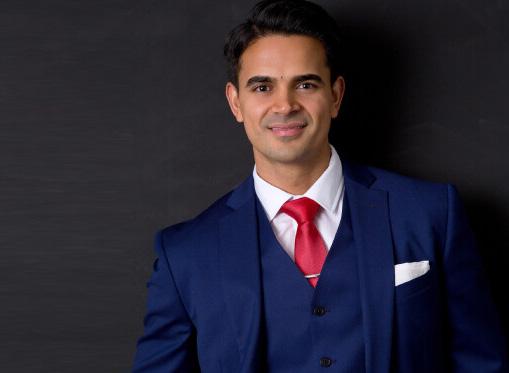
basics of change management and technology implementation and project management—which are being able to track what the actions are coming from, usually what is a very back-to-back meeting culture, right?
“So, you know, ten people can get in a room for 30 minutes, and if there’s not a project manager tracking those actions—that’s what, 300, so 3,000 minutes, so to speak, lost of that organisation’s time within that half an hour period if I’ve done my maths right. And so, you know, I believe you’ve got to have somebody tracking those actions and then following through with making sure those actions are executed.
“Now, very much in the change management world, you know, a project manager usually is like putting together a really big jigsaw puzzle, right? And you rely on many different stakeholders to help you deliver your implementation or the new technology that’s going to be arriving.
“And usually, it involves the project manager to actually influence without authority. So you’ll have a lot of different people to coordinate, and you essentially have to get them to do work for you in order to help this implementation of the new technology land.
“So, there is a lot to be said about soft skills as well—not just the technological tools and frameworks that we use, but the personality, the charm, the charisma of that person as well. You know, like, how do you get people to deliver work, even though they’re not directly reporting for you?
“So I think there is a huge element of people and your personality. And I say that because the tools and the frameworks, I think now, it’s almost driven by the personality of the individual that comes into doing that job.
“So, you know, as a project manager, when I’m hiring project managers, I’m not looking at, you know—I know what tools or technologies and frameworks they can use—but ultimately, I kind of expect them to already have that in their back pocket from their experience.
“So the tools and frameworks—it’s down to them, like whichever framework they want to use—whether it’s agile, whether it’s waterfall, or hybrid, which at the moment is very, very common for large-scale enterprises.
“Because there isn’t that one-size-fitsall, right? Every organisation is different, and within every organisation, all the teams are different—different personalities. So, it’s very much dependent for me on that project manager’s personality traits.

“And so, for me, I think provided the person and the personality have some charisma and charm and will be able to work with quite a lot of different people—whether they use the agile methodology, whether they use waterfall framework—it’s down to that person, I believe.
“But the key thing, as I mentioned at the beginning of this answer, was that the project manager has to be able to execute the actions and track them very well. So, it’s all about action-focused delivery.”
Communicating cyber security risks to senior executives can be challenging. How do you ensure business leaders without technical backgrounds feel informed and empowered to make the right decisions?
Gurps Khaira : “For me, it’s about, again, communication and understanding that change management framework. And as I mentioned in the previous answer, it’s about being a bridge between the technical delivery teams and the non-technical senior management audience.
“One of the key skills for me in being that bridge is being able to create documentation and reports. Now, my chosen weapon—which I think is the best thing since sliced bread—is PowerPoint.
“And I believe in very simple onepager documents whereby you’re able to get the updates that you need—the status reporting updates from the technical delivery teams—through, let’s say, your daily stand-ups and then be able to articulate and communicate those in a very simple onepager for the senior management
audience, who, as we know, is very, very short on time.
“They need to be able to analyse quite a lot of information very quickly in order to make those decisions. So I believe in being able to understand the delivery—the technical delivery risks being highlighted by the delivery team—and then you as the project manager or programme manager being the person who can then articulate those into pretty pictures that are then mapped back to, let’s say, the business outcomes or the risks associated to those outcomes.
“So, one of the key things in helping to make decisions is that cyber security, very often, is a cost centre, right? We’re not a revenue-generating function of a business. However, we do defend and mitigate those risks of losses and operational downtime as well from attacks or cyber-attacks.

“And so it’s being able to then understand the technical languages that the technical delivery teams—the solution design architects, the technical subject matter experts, the business analysts, the delivery team—are highlighting to you in your daily stand-up. And then perhaps you have either a weekly update or a fortnightly update with your senior-level audience.
“But all of that is mapped on a onepage document which paints the entire picture—like a very clear status report, let’s say—which shows the senior-level audience what the project scope is, how that’s tracking, what the schedule is looking like, the project plan, how we’re performing against the budget that’s been allocated to the project, even also the team and the resources being allocated—do we have enough people to deliver the latest implementation?
“So you’re tracking all of that. I’ve developed quite a lot of these internal templates that I’d like to think I’ve mastered over the last 15 years or so, which really allow me to report very complicated technical cyber security information into very simple, pretty pictures that allow critical identification of risks.
“And then, the audiences that need to make the decisions can look at those one-pagers and instantly make those decisions very quickly, within a very short space of time.
“So, to summarise, I think it’s very strong governance and also having very strong reporting templates for those different audiences.”
From your experience, what’s the most effective approach to identifying and managing risk in largescale business operations?
Gurps Khaira: “Transparency. I think—I have a saying, which is to always deliver bad news fast. That is the absolutely critical thing. It’s great when things are going well, and we want to report good news. But for me, it’s being able to identify those technical delivery risks.
“Again, I mentioned the daily standups that I’ve been sharing for the last 15 years or so and being able to identify those and then communicate those risks instantly. It’s much better to over-communicate bad news than it is to sort of sit on it and not inform your stakeholders of the risks.
“And then those risks are also part of the decision-making process that we spoke about in the previous question. Those risks have to be captured and highlighted very accurately so that the business impact of those risks is understood, which then impacts the decisions that those senior-level stakeholders need to make.
“So always, always deliver bad news fast. Again, it goes back to being able to articulate and track those risks into those very clean, crisp one-pagers that I’ve been creating over the years, which then allows those non-technical
leaders to be able to very clearly understand complicated technical delivery risks.
“And there are multiple different types of risks as well, that you, as a project manager—it’s your duty to identify those, right? So, as well as having technical delivery risks, there are risks to the project plan, the schedule, and the milestones. There can also be risks to your resources and the people in your team—maybe somebody who’s a critical sort of the single point of success or single point of failure, whichever way you want to call it—maybe they’re resigning, and a replacement can’t be found.
“So, a massive, perhaps an operating model piece of work that they were assigned to do is now at risk of not being delivered. So there’s resource risks, there’s cost risks—always. Everyone’s always trying to deliver implementations as cheaply and as cost-effectively as possible.
“So again, a programme manager or project manager needs to be able to have a very close eye on the financial forecast as well. There are all these multiple different types of risks that have to be managed and reported upwards.
“And I put all those kinds of risks into project risks. These are things you can mitigate, you can accept and do something about—so you have a bit more control over them. But then there’s something we don’t have any control over, which is market risk.
“And that is usually—we accept those risks provided they’re articulated. And then, stakeholders and decision-makers are happy to proceed with the implementation of that project based on knowing those risks.
“So there are quite a few different types of risks that a programme manager should be aware of and be able to articulate—whether they’re delivery project risks or whether they’re market risks—and then be able to continue to deliver that project.”
This exclusive interview with Gurps Khaira was conducted by Mark Matthews of The Motivational Speakers Agency.

Once a Chief Digital Officer at L’Oréal Brazil and Head of Tinder across Latin America, Andrea Iorio is now one of the most sought-after AI speakers in the business world.
Having navigated digital transformation at some of the world’s fastest-growing companies, he brings boardroom-ready insights on innovation, disruption, and human adaptability in the age of artificial intelligence.
As host of “Metanoia Lab,” a top technology podcast in Brazil, and author of multiple books, including Meta-Leadership, Andrea blends global business acumen with philosophical rigour. His unique take on leadership reframes how professionals and organisations can thrive amid AI-driven change, not just survive it.
In this exclusive interview with The Motivational Speakers Agency, Andrea explores the mindsets, skills, and cultural shifts needed to lead in an era shaped by automation, data, and accelerated digital evolution.
As businesses accelerate their adoption of emerging technologies, what structural or cultural challenges most often undermine successful implementation?
Andrea Iorio: “It’s not about the fact that, you know, we are able to do business or to, you know, thrive in the workplace in the current moment, but it’s about how able we are to adapt to an ever-evolving market or marketplace.
“Well, first of all, new technologies always bring about lots of advantages to businesses, but also lots of challenges. And so, some of the main ones include, first of all, the problem related to the lack of digital literacy when it comes to the teams that adopt these technologies, right?
“So, as much as with calculators in the 80s, as much as with AI today, actually, you know, outcomes are very different through the use of technology depending on how much people who are using it are able to prompt them better, use better data, and so on.
“And so, whenever we look at the budgets going to new technologies in companies, usually 90% goes to the tech itself, and just 10% goes to training and empowering people to better use these technologies. So, the first point here is that we focus so much on rolling out the latest technologies, but we don’t focus enough on preparing people to use them.
“This brings us to a second big point, which is people’s resistance to new
technologies, mainly for fear of substitution. And if teams do not really understand or grasp the potential benefits of the technology but just see that these technologies are more efficient and productive than themselves—human beings—well, they’ll, of course, resist them.
“And resistance can take many forms. Just, you know, even lack of usage is one form of resistance, right? And so, again, because people don’t understand its benefits, they don’t use them well. That’s a second big challenge.
“And a third one, maybe, we see very often: the rollout of new technologies not aligned with the company’s pain points. What I mean by that is that we often see companies adopting new technologies because it’s fashionable—because everybody talks about AI or large language models or many different tools for automation and data analysis—but we don’t see them as really focused or aligned, at least, with the core business, right?
“And so, we roll out these technologies, they’re scattered across the company, they’re just individual projects—projects that still do not really merge with the company’s pain points. So I think these are some of the biggest challenges, but definitely there are many more.”
In the context of exponential technological change, which leadership mindsets or frameworks do you believe are critical for navigating uncertainty and staying competitive?
Andrea Iorio: “So, I recently published a book on this—exactly on the skill set needed in the age of AI. Specifically, my book is called Meta Leadership, and so I’ll name a few of these leadership principles or skills if we might.
“The first one I call “reperception”. Since the external world is changing at an exponential rate—which is actually faster than the one we were used to during the age of the internet and so on—because, you know, traditional computing and the internet were basically accelerated by what we call Moore’s Law, right, that said that the capacity of processing of semiconductors would double every two years.
“Well, today, we live in what is oftentimes called Huang’s Law, based on Jensen Huang, Nvidia CEO, which is about three times faster than Moore’s Law. Why? Because of accelerated computing based on GPUs.
“So, reperception is basically a leadership principle that speaks about the ability of leaders to update their vision of their business, their market, and eventually the world in the face of external changes. Right, so perception traditionally is the ability to, you know, basically see new things, see novelty, and, you know, make decisions based on them. But the truth is that we need reperception. Why? Because we need also to give up on our past vision of the world. Why? Because it changes so fast.
“A second principle is what I call “data sensemaking”. Data sensemaking is the ability of leaders to actually not only have analytical skills and have the highest IQ to crunch data and, you know, be very, very efficient at data analysis, but it’s about the ability to use AI tools to do that and eventually to migrate on a focus to picking the right KPIs and letting AI crunch the data.
“What does it mean—to pick the right KPIs? Eventually, when we think about leaders in organisations, we all look at the traditional KPIs: growth month-tomonth, year-on-year. We look at, you know, sales and EBITDA. But if we all look at the same KPIs right, we don’t have a very different vision of business compared to our competition.
“If we pick new KPIs—namely, I don’t know, the correlations between some of them—well, that’s where we can have extremely novel insights and again get a competitive advantage when it comes to decision-making with respect to the competition.
“The third leadership principle that is very important is trust. Stats, first of all, show that most employees at organisations do not trust, or would not trust, an AI leader, right? And this actually is logical. Why? Because humans are the only ones able to establish trust. This is one of the few

things that AI and new technologies cannot substitute and that people miss out on at the workplace.
“Because, you know, we don’t trust AI because of a number of issues— explainability problems, namely, we don’t know exactly how their algorithms work. We don’t exactly know the data set, so we might fear they are biased, and so on.
“Well, instead of human beings, we can establish trust through a number of factors: vulnerability, reciprocation, and a number of other very specific human mechanisms. And so I think trust is another leadership principle that cannot really be substituted, and that’s essential to thrive in the digital age.”
From your perspective, how does digital transformation manifest differently across B2C and B2B industries—and where do you see the greatest untapped potential?
Andrea Iorio: “Digital transformation, of course, is a term used for many technologies and the impact that they have on businesses of all sorts. But we have, again, to differentiate some of their impact.
“And so the first thing that we have to notice is that the adoption of new technologies and digital transformation—including AI technologies—usually starts in B2C sectors. And why B2C sectors? Because they are the ones that are closest to the end consumer. Usually, change in the demand for new technologies, new experiences, and new products and services always starts with the end consumer.
“And so, for example, sectors like retail, banking, or financial services again are sectors that usually start off in the adoption of new technologies earlier on than B2B sectors, such as—I don’t know—mining, pharma, and so on.
“But look at how interesting—the big impact of digital transformation exactly lies in B2B sectors. And why? Because that’s where the biggest opportunity lies. Again, being consumer-facing, you are more reactive to change and therefore, you have a greater sense of urgency to reinvent your business through technology and digital transformation.
“But then, when most of your competitors are doing the same, well, your differentiator becomes—I don’t know—the experience that you provide, and so on. It’s not only the digital transformation.
“Now, in B2B sectors, that’s where digital transformation—the early adopters of digital transformation—gain the most competitive advantage. And so there’s a great Deloitte report from their team in Australia that is called Short Fuse, Big Bang.
“Actually—actually, it was Long Fuse, Big Bang. Namely, B2B sectors take longer to accelerate their digital transformation, but the bang—that, eventually, the explosion of it, the impact of it in their industry and sector—is usually bigger than in B2C sectors.”
This exclusive interview with Andrea Iorio was conducted by Mark Matthews of The Motivational Speakers Agency.
Dr. Grace Lordan is a diversity & inclusion speaker, and a distinguished voice on behavioural science, represented by The Champions Speakers Agency.
As an Associate Professor at the London School of Economics and Founding Director of The Inclusion Initiative, Grace has built a celebrated career exploring how bias, discrimination, and technological change shape human behaviour and workplace dynamics.
Her ability to translate cutting-edge research into practical strategies has made her one of the most sought-after speakers for organisations striving for meaningful, inclusive progress.
In this exclusive interview with The Champions Speakers Agency, Grace shares her insights on behavioural science, the future of work, and the realities of building truly inclusive workplaces.
What tends to hold people back from reaching their full potential in their work and ambitions?
Grace Lordan: “People themselves stop themselves. The person who’s stopping you from achieving your full potential is most definitely likely to be you. OK, it mightn’t be the full part of the story. It is true that out in society there are biases, there is discrimination that other people have that will ultimately hold you back.
“Maybe in your organisation, things aren’t being done as well as they should be. But nonetheless, there’s so much within your own control
- from confirmation bias to planning fallacy to commitment phobia to loss aversion to fear of failure. All of these things are mental traps that will hold you back.
“When I talk about thinking big, I like to talk about the things that are within our own control, that we can do today in order to move us forward in our career journeys.”
What’s your take on the recent shift in attitudes towards DEI efforts?
Grace Lordan: “I’ve always been quite cynical about diversity, equity, and inclusion initiatives as they’ve been rolled out in organisations.
“The reason being that most of them aren’t evaluated for success, which is really unusual for these large investments that organisations have made for a long period of time. And when they are evaluated for success, many of them actually have a negative impact or a neutral impact. So, they’re not actually progressing diverse talents in the organisation at all.
“I think, given the backlash of diversity, equity, and inclusion, it is now the time to have a rethink about what we mean about creating good cultures in organisations where all talent can thrive.
“And for me as an individual, and also for the inclusion initiative for LSE, which I run, that means creating inclusive cultures where all colleagues have opportunities, visibility, and voice to thrive in the organisation. We make sure that people aren’t

divided by gender, ethnicity, or some other characteristic, but more that they’re united by wanting to have an inclusive culture.”
How can access to opportunities shape a more inclusive and supportive environment?
Grace Lordan: “Organisations can create a more inclusive workplace by focusing on opportunities, visibility, and voice of all colleagues, regardless of their demographics or aspects of diversity. So, what this means is that they get a good grasp on the differences in opportunities, visibility, and voice colleagues are having on a daily basis, and they seek to understand why.

“From my experience working with organisations, there’s usually two reasons. One, it could be that somebody isn’t getting enough opportunities because there are performance management issues. Then organisations need to step in and give good quality performance management training to their managers. But more likely it’s because biases are at play.
“These biases aren’t caused by a person wanting to act maliciouslythey’re usually caused by a person being time poor. We coach managers in order to allocate opportunities, visibility, and voice in a much fairer way, by asking them to make salient on a regular basis who they’re giving these really important things to.”
How do you see the nature of work evolving over the next few years?
Grace Lordan: “I think the workplace is already evolving, which is super exciting. And the big thing that artificial intelligence is helping tackle is busy work. So, I’ve seen artificial intelligence being incorporated in organisations to make people more productive.
“I’ve seen it being incorporated into organisations to allow meetings to run more effectively - so telling the person who’s speaking too much to quieten down, and nudging people who are speaking too little to say a bit more.
“It’s also replaced note-takers in meetings, again, freeing up time for
people who have to painstakingly take notes, for them to actually pay attention. It’s allowing for more focused time in organisations, so people have more concentrated work. And I think that this trend is going to get bigger over the next two to five years.
“So, it’s going to mean that artificial intelligence is going to focus on decreasing the amount of busy work in organisations - which is the type of routine, boring tasks that none of us like doing - and freeing up time for us to do other things that are more interesting for the organisation, like getting creative, assessing risk better, and innovating.
“Ultimately, I see artificial intelligence, in both professional and non-professional work, making things easier for employees.
“The question of course is on everybody’s mind: what are the jobs that are going to be replaced? What are the jobs that are going to stay there? And what are the jobs that are going to gain the most from artificial intelligence?”
How can businesses leverage behavioural science for success?
Grace Lordan: “Behavioural science is the study of human behaviour, and it helps us understand better why people behave the way that they do. It also helps us to understand better how we can actually change behaviour of individuals within organisations. I think that says it all.
“I think if you’re a manager in an organisation, or if you’re in the C-Suite, or human resources, or you’re in compliance, having a toolkit of behavioural science at your disposal that allows you to change the behaviour of individuals in your organisation for the better - getting them to align with business objectives, getting them to be more productive, even getting them to arrive on time - is bound to be useful for you.”
This exclusive interview with Dr. Grace Lordon was conducted by Roxanna Farthing of The Motivational Speakers Agency.
Daniel Hulme is an internationally recognised authority on artificial intelligence and emerging technologies. As the CEO of award-winning AI company Satalia and Chief AI Officer at WPP, he has spent over two decades designing and deploying AI solutions for major global organisations including Tesco and PwC.
A TEDx speaker and investor in cutting-edge tech, Daniel is also a prominent figure at The AI Speakers Agency, where he is celebrated as one of the top AI start-up speakers in the field.
In this wide-ranging interview, Daniel explores how AI will revolutionise business models, shape responsible innovation, and align corporate growth with a deeper social purpose.
Q: Looking ahead, how do you foresee AI revolutionising business models and reshaping how companies deliver value at scale?
Daniel Hulme: “I’ve spent over a decade educating industry leaders, politicians, about the impact of these technologies on society. And actually, over the past few years, developed a framework to help people understand how these technologies can be applied to transform businesses.
“But of course, any technology that has a material impact on people’s lives, whether it be aerospace, automotive, or pharmaceuticals, should be regulated. So, I’ve more recently been engaging with governments to try to understand how to put the right guardrails in place to protect ourselves against the risks of AI but also enable organisations to innovate.
“I guess what I’m excited about is being able to use AI to remove friction from how we create and disseminate goods: food, healthcare, education, nutrition, energy - to bring the cost of those goods down so cheaply that they become abundant. Imagine being born into a world where you don’t have to worry about working to pay for food. It’s all there, it’s all free.
“But these technologies can be weaponised. We could potentially create a post-truth world, we could have mass technological unemployment, we can create surveillance capitalism or even a super intelligence. So, we have to make sure that we’re using these technologies to make the world better and not walking into some of these risks over the next few decades.”
Q: With AI increasingly embedded in business decision-making, is the current scepticism towards these technologies justified, and how should leaders respond?
Daniel Hulme: “I think people tend to be fearful about the unknown, and unfortunately the media tend to propagate and leverage that fear. That’s why I spend a huge amount of my time educating business leaders and politicians about what these technologies are and aren’t. I really do this as a passion. I did a TEDx talk a few years ago which was really focused on the risks associated with AI.
“You might have heard the term “singularity” - we’re all LinkedIn AI philosophers - but singularity was adopted by the AI community to refer to the point in time where we build a super

intelligence, a brain smarter than us in every single possible way. But I actually argued there are six singularities.
“I used a PESTLE framework. If you’ve ever done a business degree or written a business plan, you’ll have come across the PEST or PESTLE framework. I use that to actually talk about some of the risks that these technologies have, risks associated with a world where we don’t know what is true, what content that we’re engaging with is true.
“Or a world where we cure death - what would that world look like? Where we might have overpopulation. I have a very nice framework to help people understand what the potential risks are associated with AI, but also how we can mitigate and steer society towards using these technologies for good.”

Q: While AI is often linked to commercial growth, how can businesses leverage it to align profitability with broader social impact and corporate purpose?
Daniel Hulme: “My company was acquired by WPP. WPP is one of the biggest media marketing agencies in the world. They essentially enable organisations to grow, to identify new audiences, to get the attention of those audiences, to help connect goods and services with those audiences.
“One of the things I’m really passionate about is not just enabling organisations to grow.; my hope is that organisations have a strong purpose. If you don’t have a strong purpose, you’re not going to attract talent, you’re not going to attract customers.
“So, I hope that that growth that we unlock actually enables organisations to achieve their purpose. I believe it’s the collective purpose of enterprise that will make the world better. So, we as consumers, as contributors, get to vote with our feet. We choose who to buy our goods from, we choose who to work for.
“I encourage people to engage with organisations that have an incredibly strong purpose. It’s the purpose of enterprise that will make the world better.”
Q: As decentralised finance evolves, what opportunities and challenges do you foresee for businesses looking to adopt blockchain-based models to innovate and grow?
Daniel Hulme: “Well, I’m a big fan of decentralisation in general. I believe that decentralisation unlocks two things. One, it provides a trusted framework that is essentially uncorruptible. But it also enables you to identify the best group of people to be able to actually make decisions.
“We use decentralised thinking in our organisation in terms of how we operate ourselves as a company. So, I think decentralised ideas go way beyond the world of finance. Yes, of course, there are models that enable and unlock trusted mechanisms of transactions.
“I also believe that they will unlock new funding models. Yes, there was a boom a few years ago around what are called ICOs, where people were essentially raising funds off the back

of a business plan - funds where those funds are not protected.
“But I do believe that they are going to, over the next several years, unlock a whole plethora of ways of being able to raise funds through tokenisation - to get capital into people’s businesses and innovations in non-traditional ways. I think the challenge is, as you grow as an organisation, as you get more investors and those investors have more and more control, you tend to try to satisfy the needs of the investors rather than satisfy the needs of society.
“What decentralised finance models allow us to do is actually remove some of those powers of control from
shareholders to ensure that the purpose of a company is kept on track.”
Q: What guidance would you offer business leaders seeking to deploy AI responsibly while safeguarding long-term organisational trust and accountability?
Daniel Hulme: “I have a controversial view around AI ethics. First of all, I don’t think there is such a thing as AI ethics. I know there are lots of people rebranding themselves as AI ethicists. Ethics is the study of right and wrong. What happens is that human beings create an intent. Their intent is to utilise a technology to maximise, I don’t know, employee engagement,
or to route their vehicles efficiently, or to spend money across their marketing channels to maximise attention.
“You have an intent, and you then build technologies or apply a solution that tries to achieve that intent. Where that solution gets it wrong, it’s biased or maybe it might overachieve its intent and cause harm elsewhere in the system, I would argue that’s a safety problem. What you’ve done is you’ve designed a system that you don’t know how it behaves.
“I think there’s a lot of confusion between AI ethics and AI safety. Ethics is the study of right and wrong. There are already well-established ethical frameworks, standards, procedures in place to scrutinise the intent.
“And there are more and more methodologies and technologies available to help us understand how to build AI-safe systems. That’s what I’ve been doing for the past 15 years: ensuring the technologies that we’re building are being applied in a way that is explainable and transparent and governable.”
Q: As the CEO of Satalia, a global AI company, how have some of the AI-integrated products and services you have developed transformed business operations?
Daniel Hulme: “Well, I have over 25 years of experience in AI and 15 years where I started a company that’s been building AI solutions for some of the biggest companies in the world. One of our biggest clients is Tesco. They are delivering to 200,000 people every single day.
“We built all of the algorithms that power their last-mile delivery solution. Not only are we able to get significantly more deliveries out of their infrastructure, we’re able to reduce the amount of delivery miles drivenby about 20 million miles, which is to the Moon and back 50 times. These AI solutions, if applied in the right way, can have a massive impact on organisational carbon footprint.”
This exclusive interview with Daniel Hulme was conducted by Mark Matthews of The Motivational Speakers Agency.
Reclaiming duties means more money in your pocket. Discover how duty reclaim can significantly impact your bottom line, contributing to increased profitability.
Stay ahead of the competition by understanding the importance of duty reclaim. Gain a competitive edge and attract more customers with lower prices without sacrificing quality.
Duty reclaim is not just about savings; it’s about optimising your cash flow. Learn how this crucial piece of the puzzle can help you manage your finances more efficiently.
Wondering about the complexity of duty reclaim? Discover the simplified process that ensures you get the maximum from returns with minimal effort. Let duty reclaim work for you!



Chris Barton is a pioneering force in the world of artificial intelligence and disruptive innovation, best known as the creator and founding CEO of Shazam - the music recognition app that revolutionised how we interact with music.
With over two billion downloads and a landmark acquisition by Apple in 2018, Chris’s invention has become a global phenomenon. As a leading speaker on digital disruption and transformation, Chris now shares his visionary insights with audiences worldwide.
In this exclusive interview with The Champions Speakers Agency, Chris reveals the inspiration behind Shazam, how it pushed the boundaries of AI long before it became mainstream, and offers practical strategies for businesses aiming to embrace innovation and respond to industry disruption.
Who or what inspired you to create Shazam?
Chris Barton: “I was inspired to create Shazam because I saw really three opportunities at the same time. One is this problem that I faced in my daily life of hearing songs out and about everywhere and wondering what they were. I wanted to find out what they were and add them to my personal little playlist and turn it into a mixtape at the time, or what would now be called a playlist for myself.
“So that was the obvious opportunity; what I think was a problem that plagued many people. Secondly, however, at the time that I came up with the concept for Shazam, which was in late 1999, mobile phones were very basic. They were very simple, and all you could do with mobile phones was make phone calls and send text messages - nothing else.
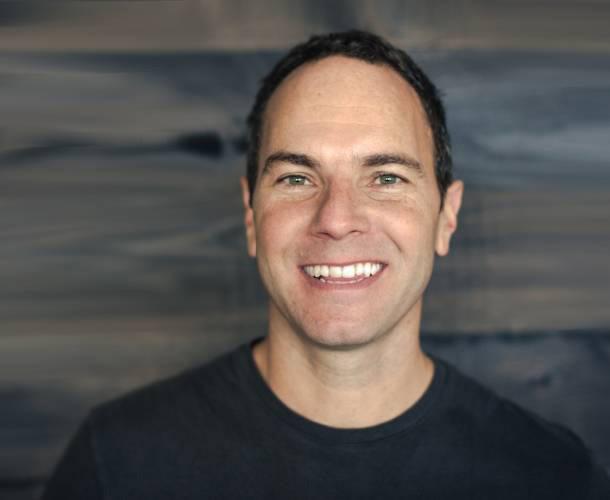
“I thought, there’s got to be something you can do with these mobile phones. You’re carrying this device everywhere you go; wouldn’t it be great if you could do other things with it? I thought, what if you could identify songs? What if that was the unique offering?
“And what was really neat is the original vision for Shazam was one where you would only need two capabilities of a mobile phone to identify songs, and those were: microphones to record the sound in a phone call, and a text message to send the information back to the user.
“So even though phones back then didn’t have apps or websites or anything, they did have those two basic things - the microphone and the text message - we could create this music recognition service for those ancient phones.
“The third thing that I saw as creating the opportunity for Shazam was that I wanted to use a disruptive technology. I loved the idea of building a business based on inventing some brand new, unexpected, very difficult disruptive technology. And it turned out that to do what we wanted to do
on music recognition would require such an invention.
“It was three things coming together: solving a problem for consumers; taking advantage of a new trend, the adoption of mobile phones, and then building a business that was reliant on the invention of a very significantly new disruptive technology. Those three things coming together created what I thought was a great opportunity.”
How did Shazam push the boundaries of technology?
Chris Barton: “Shazam was really a very early execution of artificial intelligence. Because the definition of artificial intelligence is finding a way to get computers to do something that’s normally done by humans. And this was 20 years ago, so we were ahead of our time in terms of being an AI company. We didn’t use what’s now known as machine learning, which is a modern form of AI, but we did have to invent our own pattern recognition technologies to essentially simulate the capabilities of the human brain.

“We really pushed the boundaries of technology by pushing the boundaries of pattern recognition in the face of two very significant challenges, which were noise and scale. You have noise in the background that we have to deal with, but you also have the scale - the tremendous amount of songs that we had to identify music against.
“I always love to give a great example of just how challenging noise and scale can be. Imagine that you saw your brother or sister in a room with twenty people - you would just spot them across the room. Now imagine that you’re sitting in Wembley Stadium and your brother or sister was sitting somewhere on the other side of Wembley Stadium. You would have a very hard time using your brain to find your brother or sister in that crowd, because of noise and scale.
“So, those two problems being introduced with pattern recognition. I think the way we pushed the boundaries of technology was to really invent this breakthrough pattern recognition technology and then create this sort of delightful, simple experience of just getting the answer with a single interaction and creating this
magical Shazam moment, which has now become the bar for many companies to magically delight people with a single interaction across the board.”
How can business leaders build organisational cultures that consistently foster innovation?
Chris Barton: “I think there’s two main components that go into nurturing such a culture. One is to really give the entire team, all the participants in the company culture, a sense of what is the purpose of what they’re doing. How is what they’re doing an act of service? How is what they’re doing going to impact others?
“When you really connect those dots for people, I think it gives them this feeling of purpose, and they’re really tied to having impact on other people in whatever they’re doing and what they’re creating. That’s one key component.
“The second key component to creating this innovative culture is to really empower people. Empower people to contribute their ideas, because the reality is that great ideas come from everywhere - not just from the research and development department or the product manager lead or whatever it may be.
“Great ideas can come from all across the organisation. Those ideas don’t necessarily have to be the big idea. Often there are ideas that are little ideas that help build up and solve problems, so that the great idea is wonderful and has a delightful outcome for the end client or customer.
“It’s those two things: giving people the sense of purpose for the act of service, and then empowering them to contribute and play a role in the ideation and the solving of the problems along the way.”
What strategic insights can established businesses gain from your entrepreneurial journey?
Chris Barton: “I think that businesses can learn that one key, very important ingredient to innovation - successful innovation - is to start from a
breakthrough idea. But, very importantly, once you have that breakthrough idea and you’re on the path towards realising your vision, your outcome, your new innovation, you’re going to encounter all kinds of barriers and unknowns along the way.
“I think that one unique thing that entrepreneurs do is they are so focused, with their conviction, on their ultimate vision that they really focus on breaking through those barriers and finding solutions to them along the way. I believe that many businesses along the way might divert or concede in some of these barriers, and then you end up with a sub-optimal innovation outcome.
“I think the learning from entrepreneurs is that persistence, that focus, the perseverance to get to your ultimate vision regardless of the barriers that you’re going to encounter.”
How should businesses interpret and respond to disruption within their industries?
Chris Barton: “I actually like to just focus on the word ‘disruption’ rather than ‘digital disruption’, because the reality is, disruption can occur with regards to a digital innovation or technology innovation, but it could also be a business model innovation or even a customer experience innovation. All these things can be introduced by one company within an ecosystem, within an industry, and it can be disruptive to all the other players in that industry or the incumbents.
“The way I define it is that it’s a new offering, a new capability, that, by being enabled, causes all the other companies in that industry to be caught off guard. And it can very scarily lead to a spiral towards irrelevance if they don’t respond quickly enough.
“That’s how I define a disruptionsomething new introduced by a specific player in an industry that could make everyone else irrelevant.”
This exclusive interview with Chris Barton was conducted by Mark Matthews of The Motivational Speakers Agency.
Anna Mathur is a renowned psychotherapist, bestselling author, and speaker, widely celebrated for her warm, relatable approach to mental wellbeing and her ability to distil complex psychological ideas into practical tools for everyday life.
With a professional journey that began in accounting and copywriting before evolving into psychotherapy, Anna has become a trusted voice in the fields of stress management , self-worth, and workplace wellbeing.
Her experience spans clinical work within the NHS, writing multiple Sunday Times bestsellers, and hosting the hit podcast The Therapy Edit , which has reached millions. She is a go-to expert for national media and has worked with global brands like Google, Spotify, and Apple to reshape how mental health is prioritised in the modern workplace.
In this interview with The Champions Speakers Agency, Anna shares powerful insights into how leaders can better support mental wellbeing at work through inclusive practices, compassionate leadership, and a redefinition of rest and success.
How can leaders recognise and respond to the mental load in the workplace - especially for those balancing unseen responsibilities - to create a more equitable and sustainable culture?
antici pating, it might be just that weight of worrying about everything that needs to be done. And leaders can help in a few ways.
“Firstly, clarifying the roles and expectations, because unclear responsibilities lead to employees carrying those heavy burdens - those hidden burdens of trying to anticipate and worrying if they are getting it right. So, clarifying those roles is really important.
“Secondly, reducing that ‘always-on’ culture, because if employees feel like they must be constantly available - or at least be seen to be constantly available - they are never truly resting. And we know that rest is the true antidote to burnout. So, if you’re seeing people burn out, reducing it and tackling this ‘always-on’ culture.
“And the third thing is encouraging task delegation. So many employees hesitate to ask for help because they worry that it might make them look incapable. So leaders that actively promote sharing responsibilities - this is about fostering confidence. When we are able to delegate and we’re able to do jobs that are within the realms of the resources that we have, again, we see a reduction in burnout.”
How can inclusive leaders address imposter syndrome within themselves and their teams to foster a workplace culture of belonging and confidence?
Anna: “So, the first steps that business leaders can take to combat imposter syndrome within themselves and their teams is to acknowledge it openly. Because talking about imposter syndrome reduces its power.

Leaders who share their experiences around imposter syndrome actually start breaking down some of those internal conversations, bringing it into the external and normalising it for other people.
“Secondly, reframing self-doubt. Feeling like a fraud often signals growth, not failure. Encourage employees, encourage the people around you to see discomfort as actually a sign that they are stretching their comfort zone and their abilities. And that’s reframing it to say that this self-doubt is showing growth in action.
“Another tip is to celebrate progress, not just the results at the end of it, not just those tangible outcomes. Because when praise is only given for outcomes, people tend to downplay their efforts. Whereas recognising those small wins helps kind of foster and build and nurture confidence.
Anna: “OK, so the term ‘the mental load,’ this concept really does apply to the workplace. And there are lots of things that leaders can do to prevent burnout in their employees. So, the mental load at work - it’s not just about tasks; it’s not just about the tangible. It’s about the invisible responsibility of remembering. It might be
“And fourth and finally, encouraging mentorship. Imposter syndrome thrives in isolation - when we feel like we are on our own. So regular support and feedback from mentors, and encouraging mentoring relationships, now those can provide perspective but also just reassurance.” Redefining Rest & Self-Worth:
“It is in the internalising it and just feeling it, worrying about it, and acting off the back of it that it has its powers.

What empowering message about self-worth would you share with business leaders looking to lead with compassion, confidence, and authenticity?
Anna: “One piece of advice that I truly believe every business owner should hear about self-worth in leadership is that your worth is not measured entirely by your productivity. The most effective leaders aren’t those who do the most, but those who empower the most.
“Because when you operate from a place of self-worth rather than that burnout and exhaustion, you are far more able to lead with clarity, with confidence, and with compassion.”
In a world that often glorifies hustle culture, how can leaders reframe rest as a tool for inclusion, empowerment, and longterm equity in the workplace?
Anna: “In today’s fast-paced business world, this hustle culture is put on a pedestal. And it is something that we need to reach towards and be shown to be hustling, you know? But how can business owners shift this mindset and recognise the power of rest?
“Hustle culture thrives on this myth that more hours equal more success - the more we’re doing, the better the outcome. Science says otherwise. Rest is not just recovery; it is fuel for creativity. It is fuel for decision-making. It also enables us to have more resilience. So, when we are burnt out and when we are tired, we are less able to access that part of our brain that is creative, decision-making, and resilient.
“Business owners can shift this mindset by viewing rest as an investment rather than an indulgence. It is a real kind of mind shift there - rest is an investment. It is not an indulgence, it’s a necessity, it’s a need. Recognising that overworking leads to diminishing returns is also really important, because it takes that need to strive out of it, and it starts valuing rest.
“Chronic exhaustion reduces effectiveness. If you are seeing that your workforce is just feeling floored and exhausted, it’s recognising that it’s that overworking that is diminishing what people are able to do. Prioritise sustainable success over those short-term productivity spikes that might look impressive in the short term, but overall, you will see this slow trickling down of productivity.”
What inclusive leadership strategies can business owners and leaders adopt to support well-being and build a culture that actively prevents burnout and supports diverse needs?
Anna: “Some of the simple yet effective strategies that business owners and leaders can implement to create that healthier work culture is, first and foremost, modelling those healthy behaviours. So, the leaders that prioritise rest and boundaries, these are the leaders that are giving their teams permission to do the same.
“Secondly, we have got that encouragement of psychological safety. So, make it safe for any employee to ask for help, and even more so, just to admit at that point of struggling. That means removing any sense of fear or judgement to encourage those conversations.
“The third one is to normalise breaks. This is really important. They can be short, frequent breaks. Actually, these boost productivity. So, I think sometimes we can fear that taking breaks means people stepping away from that productivity. But science shows that breaks boost productivity and mental clarity. And it encourages a culture where stepping away from the desk isn’t seen as slacking. So again, leading by example.
“Number four is to reassess workload expectations. High-performing teams really thrive when quality is prioritised over that kind of presenteeism - the excessive hours that can lead to burnout.
“The fifth thing that I have here is investing in mental health resources. Now, this might be coaching, it might be EAPs, it might be flexible working policies. Supporting mental health and well-being isn’t just compassionate, it is about the strategy that you have embedded in your working culture.”
This interview with Anna Mathur was conducted by Sophia Hayes of The Motivational Speakers Agency.
By Paolo Spotorno, Principal at Efficio
Across the globe, companies are increasingly recognising the imperative to turn their sustainability agendas into action. Notably, a rising number of organisations have embarked on initiatives to curb their greenhouse gas (GHG) emissions. In a tangible demonstration of progress, the Financial Times’ Europe’s Climate Leaders 2024: interactive listing (ft.com) highlights the strides businesses have made in reducing the intensity of their Scope 1 and 2 GHG emissions, respectively produced by an organisation’s own operations and the energy it consumes.
However, a critical aspect remains that demands attention: Scope 3 emissions, indirect emissions that occur in the value chain of the reporting company. Scope 3 emissions are the largest driver of many companies’ total GHG emissions, often exceeding 70%, driven in particular by Category 1 (Purchased Goods and Services).
Yet, compared to Scope 1 and 2 emissions, they have historically been more challenging to measure and address. The lack of standardised metrics and the complexity of assessing emissions across the value chain can pose significant obstacles for organisations aiming to tackle Scope 3 emissions effectively.
It’s clear that to truly advance sustainability agendas, addressing Scope 3 emissions is paramount. As regulators

worldwide intensify their focus on comprehensive GHG reporting, organisations are under increasing pressure to take ownership of their entire emissions footprint. In Europe, the Corporate Sustainability Reporting Directive (CSRD) is progressively rolling out Scope 3 emissions disclosures.
Beyond regulatory compliance, tackling Scope 3 emissions unlocks a myriad of benefits:
Appealing to eco-conscious customers: In today’s increasingly eco-aware marketplace, prioritising Scope 3 emission reduction attracts environmentally conscious clients, enhancing brand loyalty and market share
Reputation enhancement: Addressing Scope 3 emissions showcases a commitment to environmental stewardship, bolstering the organisation’s reputation and credibility among stakeholders
Employee motivation and engagement: Tackling Scope 3 emissions can foster employee engagement and talent retention, with an IBM survey indicating that
34% of respondents were more interested in working for environmentally sustainable companies; organisations that fail to position themselves as such risk missing out on talent
Maintaining a competitive edge: Proactively addressing Scope 3 emissions keeps organisations ahead in evolving markets, mitigating sustainability risks and putting them at an advantage to capitalise on emerging opportunities for innovation and longterm profitability
Strategic adaptation and resilience: Reducing Scope 3 emissions enhances an organisation’s resilience by minimising reliance on carbon-intensive practices and positions them as sustainability leaders.
Despite this, many organisations face challenges in translating their sustainability goals into actionable plans. When looking at businesses that have set targets to reduce greenhouse gas emissions, our research shows that only a third of their leaders express

confidence in their organisation’s ability to meet those targets.
As a result, efforts often remain confined to high-level statements, with targets pushed as far into the future as allowed by applicable ESG regulations; indeed, 74% of business leaders agree that setting sustainability targets is much easier than achieving them. But the future is quickly approaching.
The critical next step for organisations aspiring to achieve meaningful progress towards their corporate sustainability goals is to move beyond rhetoric and embrace a proactive approach to sustainability by converting their objectives into executable strategies.
In this journey, procurement teams emerge as key catalysts for change. Positioned at the intersection of supply chains and sustainability initiatives, Chief Procurement Officers must equip their teams with the vision, skills, and practices to proactively manage
the supply base, enabling the delivery of tangible results aligned to the business-level sustainability strategy.
Based on our sustainability improvement work with our clients, we have identified three key elements that set the stage for procurement teams to successfully deliver Scope 3 impact:
1. A digitally enabled tool to measure suppliers’ GHG emissions and identify carbon reduction opportunities Leverage advanced digital tools that can map and baseline suppliers’ Scope 3 emissions, give visibility over high-impact spend categories, and help you monitor suppliers’ sustainability performance over time and their commitment to nearand long-term science-based targets. These tools empower organisations to scientifically quantify their supplier-related carbon footprint, laying a solid foundation for the development and implementation of targeted sustainable procurement strategies.
2. Well-defined processes and competencies to be agents of change
Develop robust processes and competencies for the procurement function to serve as a catalyst for transformative change. This will require a thorough examination and strengthening of various dimensions of sustainability maturity.
Vision and Strategy: Evaluate how well sustainability is integrated within the broader supply chain strategy. Foster buy-in for sustainability initiatives and sustainable procurement practices across all levels of the organisation.
Organisation and People: Assess the extent to which sustainability considerations are ingrained within the supply chain structure. Invest in enhancing procurement teams’ knowledge, capabilities, and incentivisation mechanisms to drive sustainable outcomes effectively.
Governance and Processes: Integrate sustainability seamlessly into policies, procedures, and
planning cycles. Ensure that sustainability risks and opportunities are systematically evaluated and factored into sourcing decisions. Implement robust mechanisms for measuring and monitoring supplier sustainability performance.
Enablers and Reporting: Streamline the measurement and reporting of sustainability performance, ensuring alignment with corporate sustainability objectives. Leverage data integrity and insight-creating tools to facilitate informed decision-making.
3. A best-in-class methodology to build and implement prioritised initiatives
Adopt a structured, fact-based approach for translating sustainability aspirations into actionable plans. This means moving beyond strategy formulation to execution, with a focus on delivering measurable outcomes:
1. Define a roadmap of sustainable procurement initiatives grounded in data insights, addressing areas of risk and opportunity uncovered through digitally enabled supplier data analysis
2. Prioritise initiatives based on their potential for impact and make sure they are aligned to the wider organisation’s sustainability goals
3. Implement targeted interventions, including educating suppliers and supporting them in setting metrics to track progress against targets
4. Execute your sustainable procurement strategy plan, employing optimised sourcing practices and proactively managing supplier relationships to drive measurable reductions in Scope 3 emissions
There’s no way around it: to stay ahead of the curve, organisations will have to take on the challenge of Scope 3 emissions. It will be the companies that can effectively leverage procurement as a strategic business partner that will progress organisational sustainability goals from mere talk to concrete results.
Dael Williamson, EMEA CTO, Databricks
Interest in implementing AI is truly global and industry-agnostic - yet few companies have established the foundational building blocks that enable AI to generate value at scale.
While each organisation and industry will have their own specific challenges that may impact AI adoption, there are four common barriers that all companies tend to encounter: People, Control of AI models, Quality, and Cost. To implement AI successfully and ensure long-term value creation, it’s critical that organisations take steps to address these challenges.
At the forefront of these challenges is the impending AI skills gap. The speed at which the technology has developed demands attention, with executives estimating that 40% of their workforce will need to re-skill in the next three years as a result of implementing AI – outlying that this is a challenge that requires immediate attention.
To tackle this hurdle, organisations must provide training that is relevant to their needs, while also establishing a culture of continuous learning in their workforce. As the technology continues to evolve and new iterations of tools are introduced, it’s vital that workforces stay up to date on their skills.

Equally important is democratising AI upskilling across the entire organisation - not just focusing on tech roles. Everyone within an organisation, from HR and administrative roles to analysts and data scientists, can benefit from using AI. It’s up to the organisation to ensure learning materials and upskilling initiatives are as widely accessible as possible. However, democratising access to AI shouldn’t be seen as a radical move that instantly prepares a workforce to use AI. Instead, it’s crucial to establish not just what is rolled out, but how this will be done. Organisations should consider their level of AI maturity, making strategic choices about
which teams have the right skills for AI and where the greatest need lies.
As organisations embrace AI, protecting data and intellectual property becomes paramount. One effective strategy is to shift focus from larger, generic models (LLMs) to smaller, customised language models and move toward agentic or compound AI systems. These purpose-built models offer numerous advantages, including improved accuracy, relevance to specific business needs, and better alignment with industry-specific requirements.

Custom-built models also address efficiency concerns. Training a generalised LLM requires significant resources, including expensive Graphics Processing Units (GPUs). Smaller models require fewer GPUs for training and inference, benefiting businesses aiming to keep costs and energy consumption low.
When building these customised models, organisations should use an open, unified foundation for all their data and governance. A data intelligence platform ensures the quality, accuracy, and accessibility of the data behind language models. This approach democratises data access,
enabling employees across the enterprise to query corporate data using natural language, freeing up in-house experts to focus on higher-level, innovative tasks.
Data quality forms the foundation of successful AI implementation. As organisations rush to adopt AI, they must recognise that data serves as the fuel for these systems, directly impacting their accuracy, reliability, and trustworthiness. By leveraging high-quality, organisation-specific data to train smaller, customised models, companies ensure AI outputs are contextually relevant and aligned with their unique needs. This approach not only enhances security and regulatory compliance but also allows for confident AI experimentation while maintaining robust data governance.
Implementing AI hastily without proper data quality assurance can lead to significant challenges. AI hallucinations - instances where models generate false or misleading information - pose a real threat to businesses, potentially resulting in legal issues, reputational damage, or loss of trust. By prioritising data quality, organisations can mitigate risks associated with AI adoption while maximising its potential benefits. This approach not only ensures more reliable AI outputs but also builds trust in AI systems among employees, stakeholders, and customers alike, paving the way for successful long-term AI integration.
For C-suite executives under pressure to reduce spending, data architectures are a key area to examine. While a recent survey found that Generative AI has skyrocketed to the #2 priority for enterprise tech buyers, and 84% of CIOs plan to increase AI/ML budgets, 92% noted they don’t have a budget increase over 10%. This indicates that executives need to plan strategically about how to integrate AI while remaining within cost constraints.
Legacy architectures like data lakes and data warehouses can be cumbersome to operate, leading to information silos and inaccurate, duplicated datasets, ultimately impacting businesses’ bottom lines. While migrating to a scalable data architecture, such as a data lakehouse, comes with an initial cost, it’s an investment in the future. Lakehouses are easier to operate, saving crucial time, and are open platforms, freeing organisations from vendor lock-in. They also simplify the skills needed by data teams as they rationalise their data architecture.
With the right architecture underpinning an AI strategy, organisations should also consider data intelligence platforms to leverage data and AI by being tailored to its specific needs and industry jargon, resulting in more accurate responses. This customisation allows users at all levels to effectively navigate and analyse their enterprise’s data.
Before investing in any AI systems, businesses should consider the costs of the data platform on which they will perform their AI use cases. Cloudbased enterprise data platforms are not a one-off expense but form part of a business’ ongoing operational expenditure. The total cost of ownership (TCO) includes various regular costs, such as cloud computing, unplanned downtime, training, and maintenance.
Mitigating these costs isn’t about putting the brakes on AI investment, but rather consolidating and standardising AI systems into one enterprise data platform. This approach brings AI models closer to the data that trains and drives them, removing overheads from operating across multiple systems and platforms.
As organisations navigate the complexities of AI adoption, addressing these four main barriers is crucial. By taking a holistic approach that focuses on upskilling, data governance, customisation, and cost management, companies will be better placed for successful AI integration.
Discover the molecules that make life work


